Our second week on tour coincided with Hurricane Ida, which thankfully skirted around the places we planned to visit mostly dumping a bit of rain here and there. We were able to rearrange our visits and move our one all-day outside to after the weather passed thanks to the flexibility of many people.
While our visits confirmed what we learned the first week – shelters are growing crowded as owner surrenders continue to ratchet up, and puppy and kitten season does not abate. But we also noticed something else that was different on this tour than our previous ones. There are a lot more purebred dogs in the shelters.
My best guess is that this is because so many people bought puppies during the pandemic and those puppies grew into adolescent dogs which require a lot of work and don’t always live up to the expectations of owners. Plus certain breeds have characteristics that owners may or may not have anticipated or been able to handle. Beyond that, economic circumstances have a lot of people surrendering dogs they can’t afford anymore. At any rate, we saw purebred large breeds like Huskies, Rottweilers, Labs, plus many smaller breeds and scruffies.
We also saw a lot of puppies and small breed dogs, which is usually not the case as those dogs get pulled by rescue or adopted at a much higher rate. It was telling that rescue coordinators are struggling to find rescues willing to take puppies.
To me, the presence of so many ‘desirable’ type animals in the shelters is a ‘canary in the coalmine’. It is time for rescues to double-down on all that they can do to help because full shelters lead to killing dogs for space. Even at the shelters that have for many years been saving every treatable, adoptable animal, there is a fresh fear that killing for space is on the horizon if things don’t improve.
Fingers crossed for the early fall back-to-school surge in adoptions and rescue pulls.
We will tell you MUCH more about all thirteen organizations that we visited on this tour in the coming weeks. Be sure to subscribe to this blog and our YouTube channel so you don’t miss a thing!
And in case you weren’t following along in real time on Facebook, the week’s posts are pasted below.
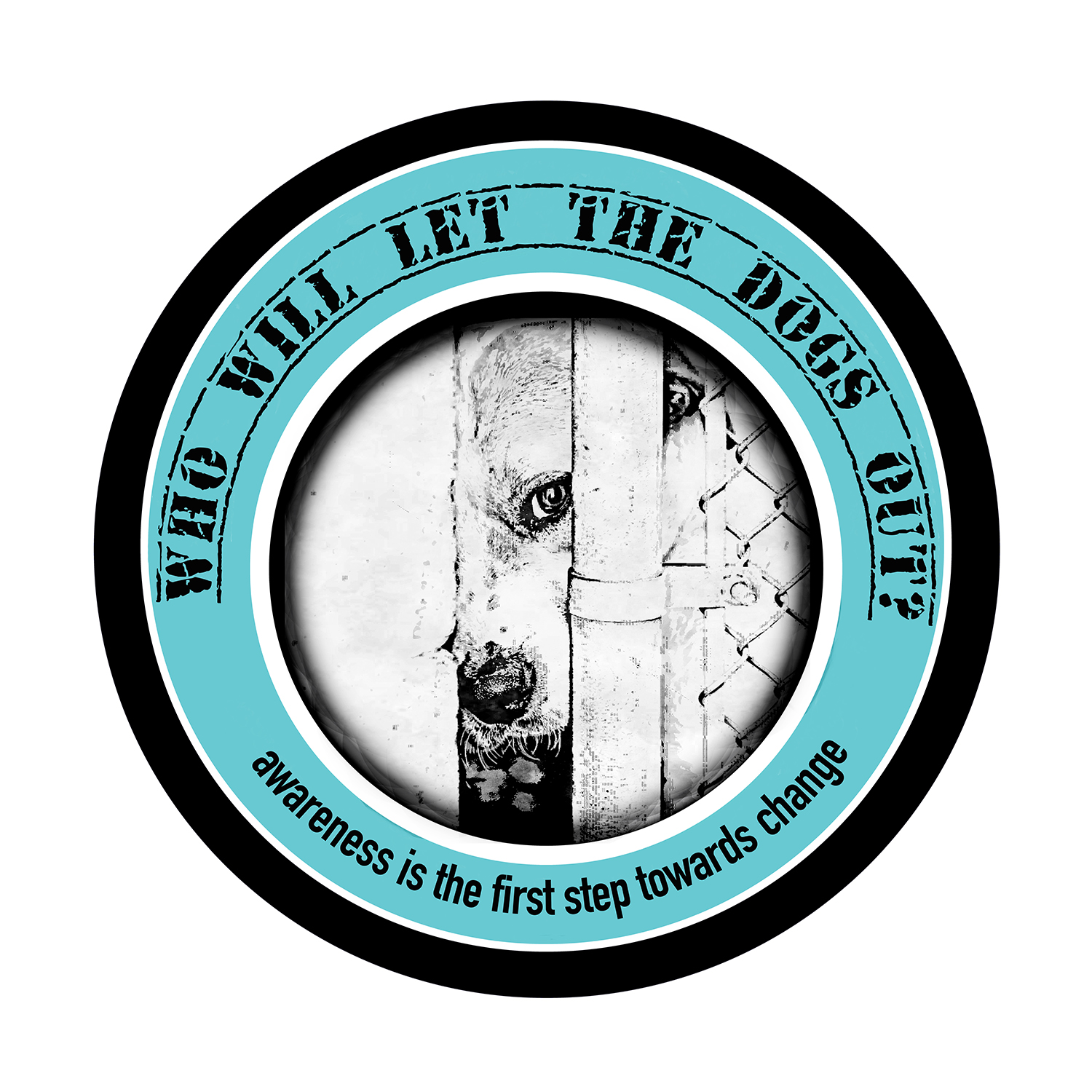
Until each one has a home,
Cara
Please help us by subscribing (button on right side) and sharing this blog. You can also keep track of us on Facebook and Instagram.
The mission of Who Will Let the Dogs Out (we call it Waldo for short) is to raise awareness and resources for homeless dogs and the heroes who fight for them.
You can learn more about what is happening in our southern shelters and rescues in the book, One Hundred Dogs & Counting: One Woman, Ten Thousand Miles, and a Journey Into the Heart of Shelters and Rescues (Pegasus Books, 2020) which tells the story of a challenging foster dog who inspired the author to travel south to find out where all the dogs were coming from. It also explains how Who Will Let the Dogs Out began. The book is available anywhere books are sold. A portion of the proceeds of every book sold will go to help unwanted animals in the south.
Amber’s Halfway Homeis a short documentary film we produced in partnership with Farnival Films. It tells the story of a remarkable woman and one day of rescue in western Tennessee. Selected for ten film festivals (to date), it is a beautiful, heartbreaking, inspiring story we hope will compel viewers to work for change.
For more information on any of our projects or to talk about rescue in your neck of the woods, please email whowillletthedogsout@gmail.com or carasueachterberg@gmail.com.
RECAP OF OUR SECOND WEEK OF SHELTER TOUR DAILY POSTS ON FACEBOOK:
MONDAY:
After a weekend of driving and celebrating the premiere of AmbersHalfwayHome.com, we drove out to Cheatham County Animal Shelter to meet the new director and to get the scoop on the new supporting organization SCAMP (Saving Cheatham Animals Mission PAWSible).
SCAMP is the brainchild of Robin, who is also responsible for planting volunteer programs at numerous shelters and rescues in the Nashville area. Robin explained that SCAMP’s mission is to support the animals in the shelter. By creating a non-profit of their own, SCAMP can work quickly to buy needed supplies or pay for medical treatment for the shelter’s animals.
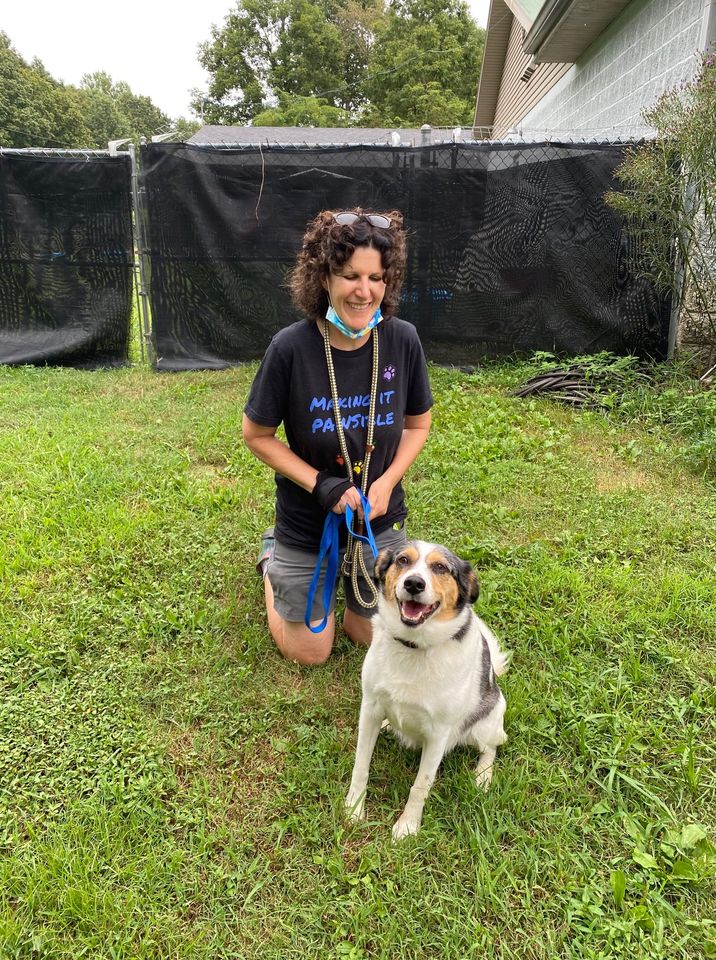
County Animal Shelters, whose budgets are dictated and doled out by the county, must request funds and follow processes to obtain them so they often can’t act quickly. There is also the possibility that donations made directly to the shelter could be redistributed by the county and not in the intended way of the donor.
Money donated to SCAMP goes directly towards helping the animals. Robin works closely with Brittney, the new director. She can mobilize funds when an unexpected medical need comes in or purchase supplies not included in the small county budget—like martingale collars for newly adopted dogs to ensure they don’t get loose while settling into their new homes.
It’s a brilliant idea that we hope others will copy at their own county shelters. Robin is more than happy to talk about how they created SCAMP (message us to get her contact information).
We also spent a little time with Brittany and met the shelter’s animals. They have a slew of new owner surrenders and several lost dogs, in addition to the dogs they’ve had for a while. Like everywhere else, dogs just aren’t moving quickly at the moment. Cheatham adopts one dog for every three they send to rescues.
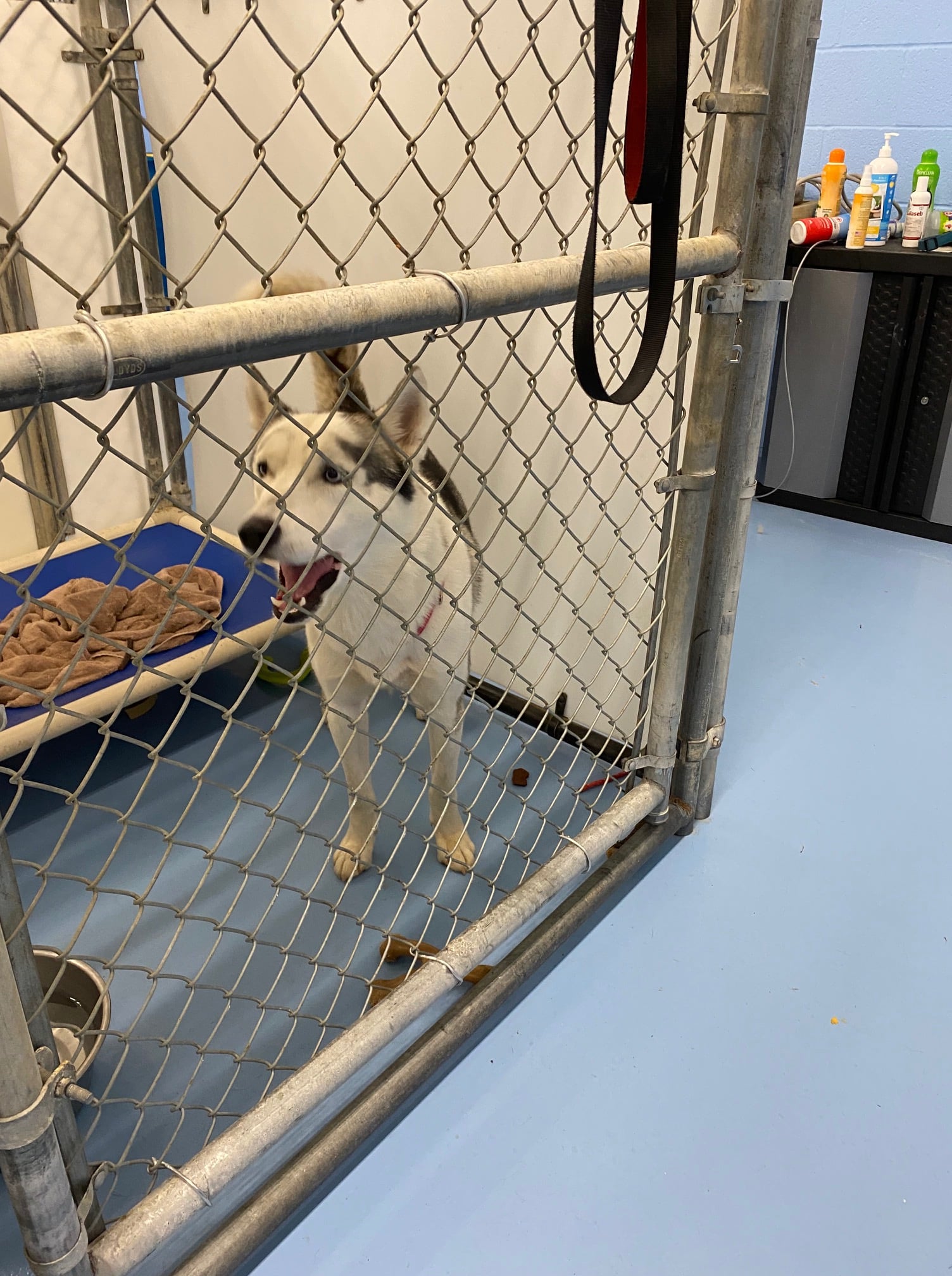
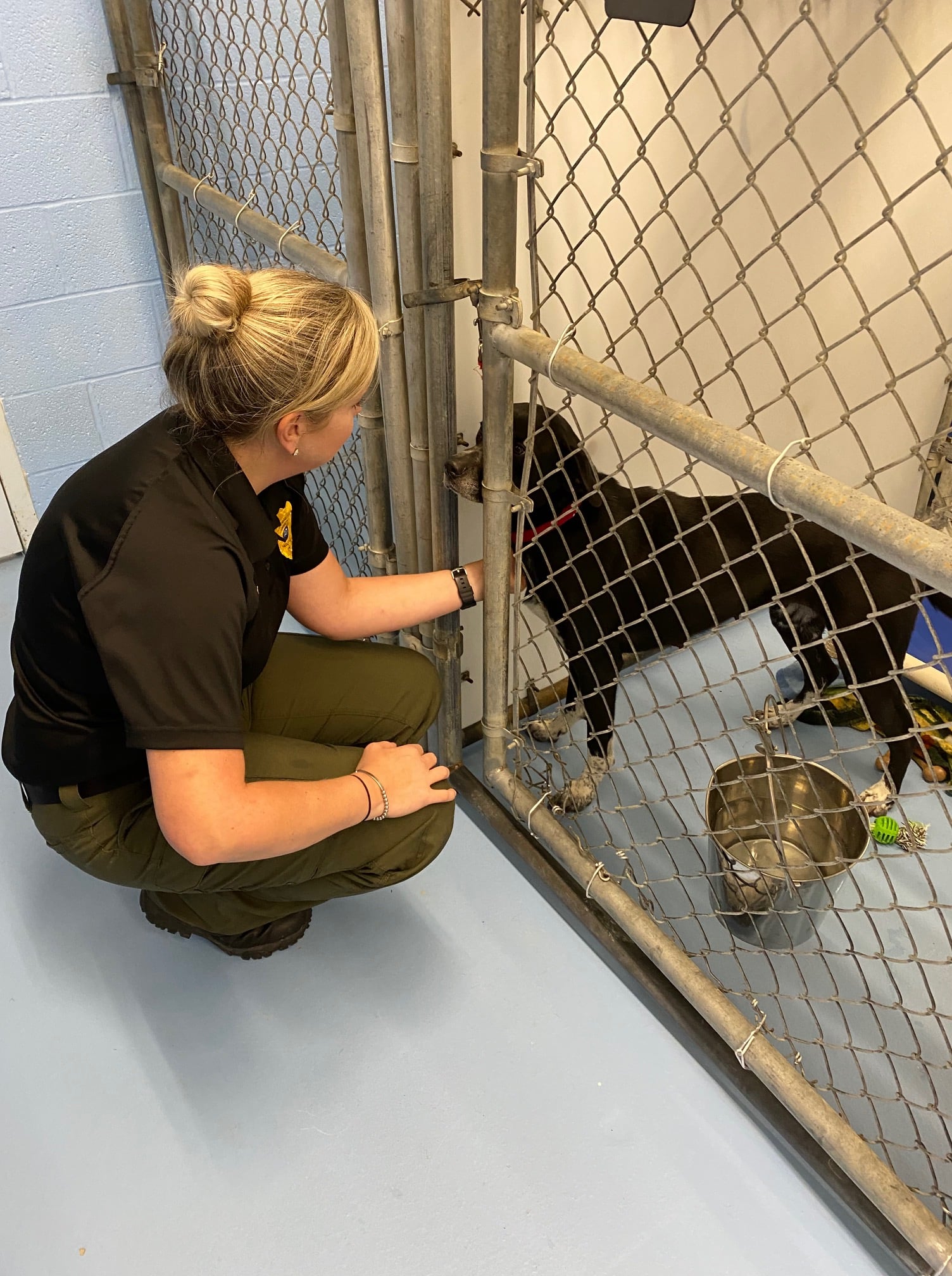
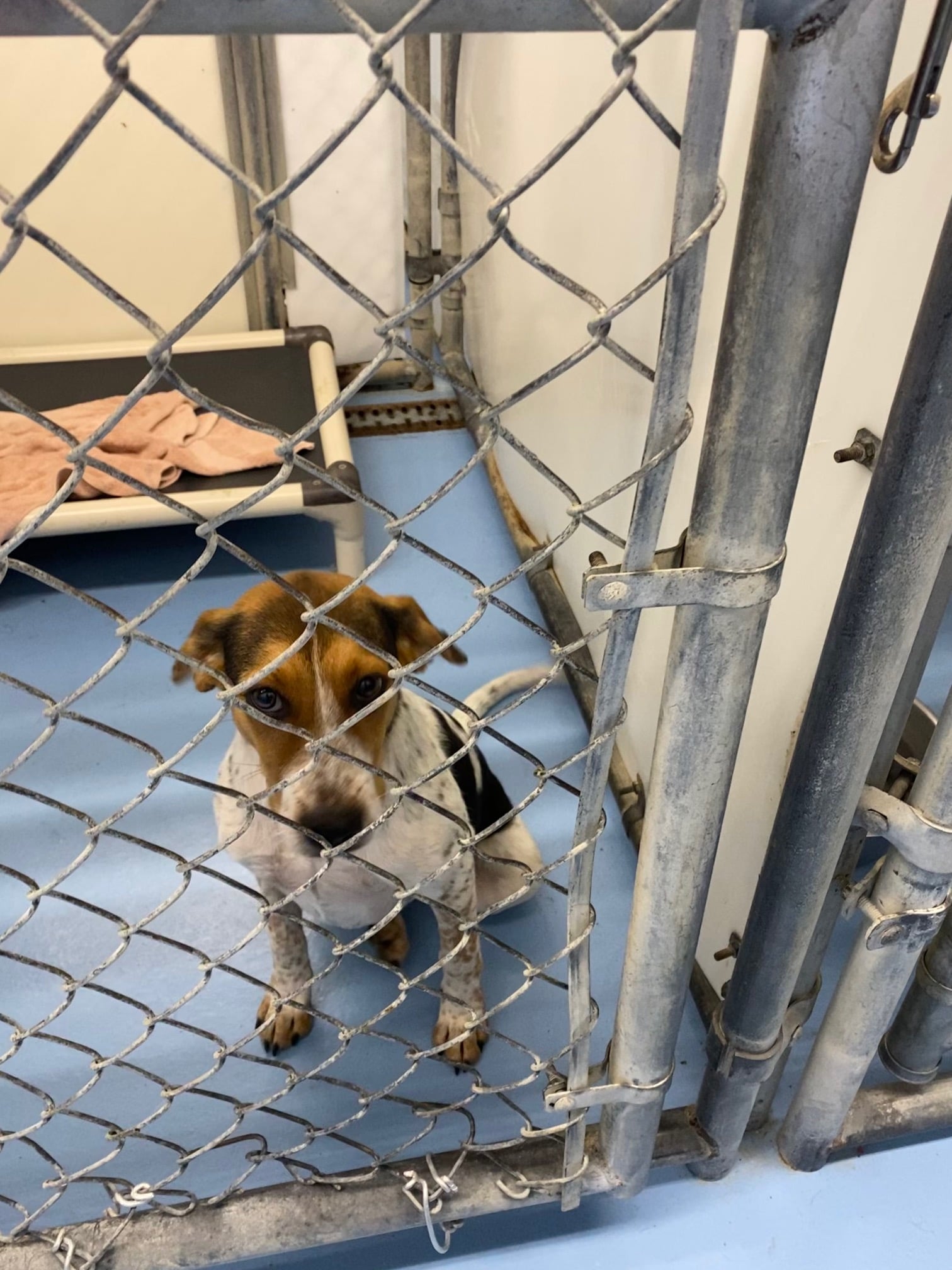
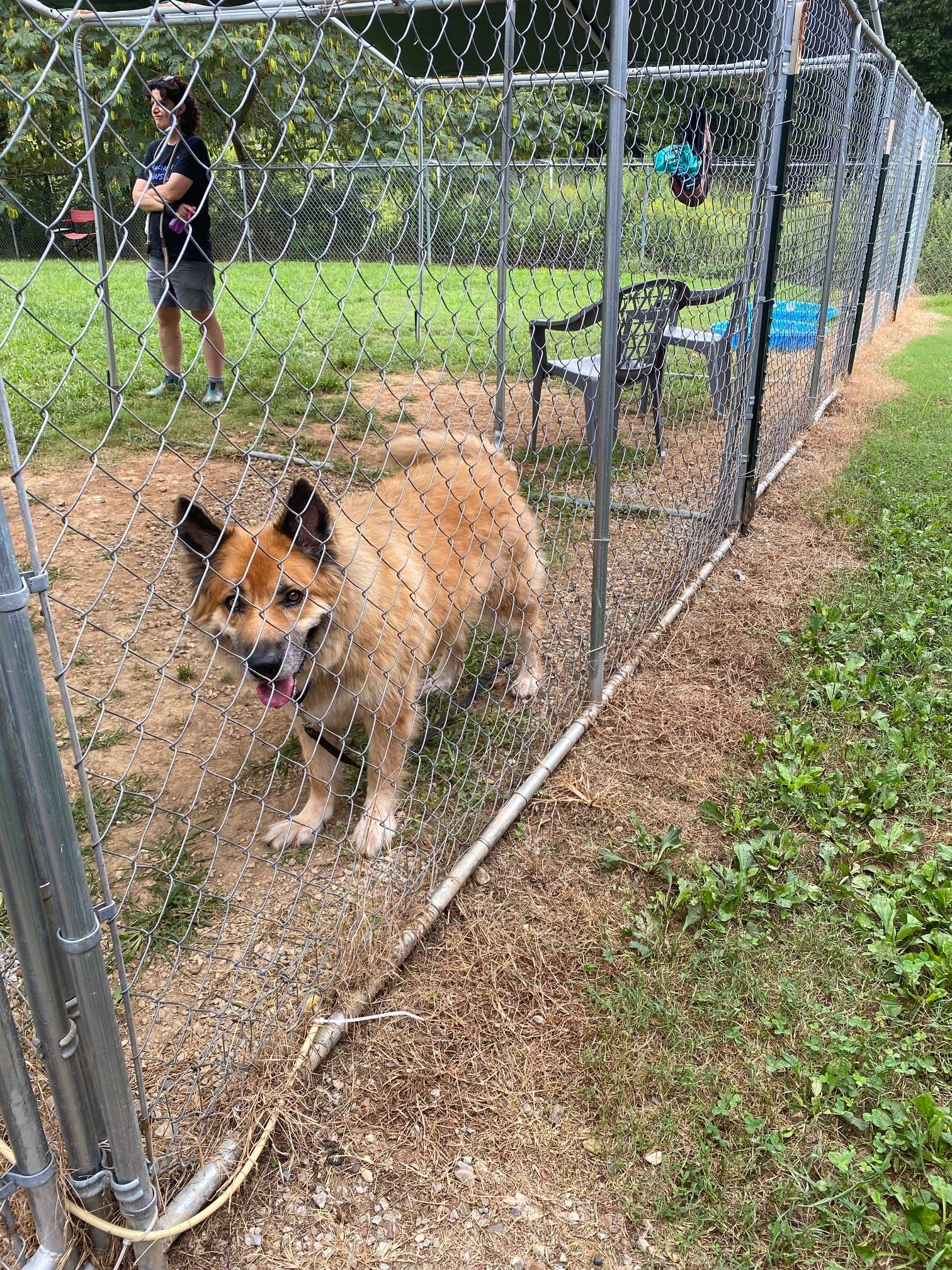
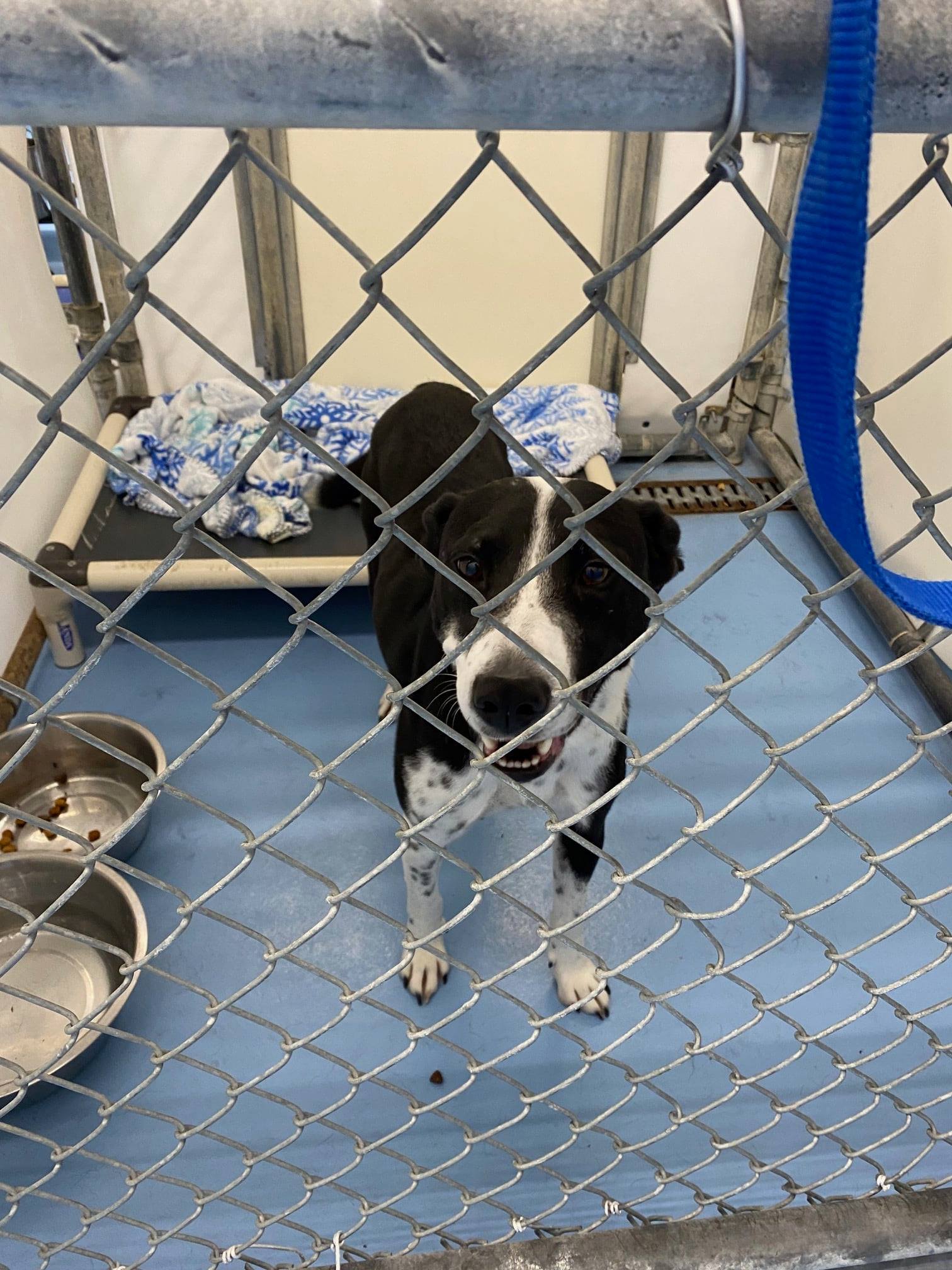
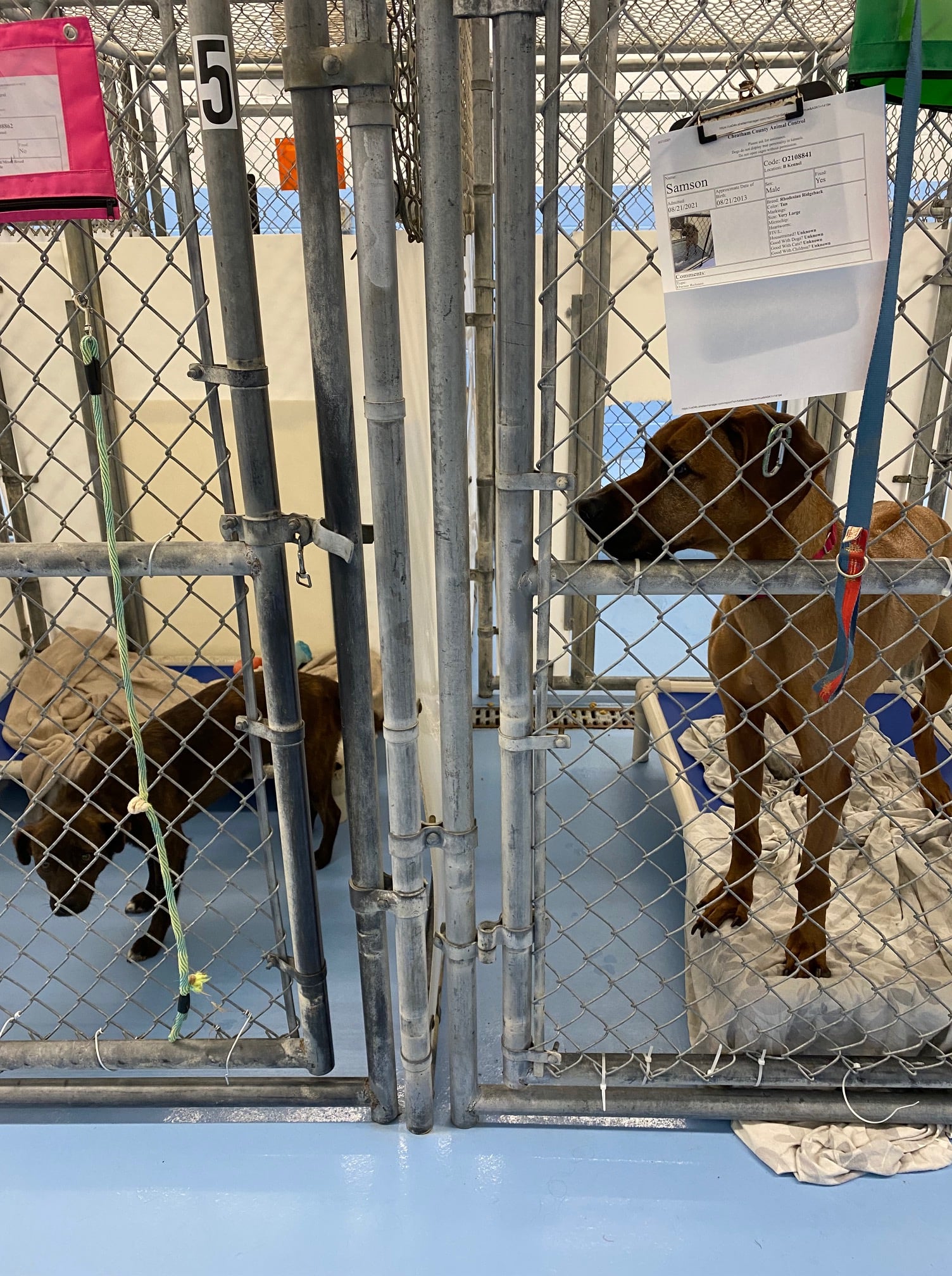
We visited Cheatham in 2019 when they were in the process of reimagining their shelter that had a dark, sad history. It was exciting to see that it continues to thrive with Brittany’s leadership. She explained that the volunteer program is key. The strength of that program and the shelter staff’s ability to work with them is how they can take such great care of their animals. The dogs get walked 3-4 times a day, have regular play groups and enrichment. Soothing music plays in the kennels that all have beds, blankets, and toys.
We took a walk (with adoptable Molly) down one of the Storybook Trails, created to draw the public down the winding wooded road to Cheatham. Another great program the shelter participates in is Tails of the Trail which is a local nonprofit that organizes walks for the shelter dogs. They arrive one Saturday a month with volunteers who take all the dogs out of the shelter and drive them to a nearby trail to go for a hike. It gets the dogs out, gets them exposure, and gives the staff a chance to really clean and catch their breath. Tails of the Trail has led to over 500 adoptions at shelters in the Nashville area (people sign up to hike with a dog via Eventbrite). This is such a brilliant concept, and I wish we had time to track them down and interview them on this tour.
We are watching Hurricane/Tropical Storm Ida and considering staying hunkered down tomorrow and reorganizing our visits. We’ll let you know.
Meanwhile, please keep sharing our posts and telling people not only how many dogs need homes, but about shelters like Cheatham that are doing an incredible job, most remarkably because they are small shelter in a rural area with a small budget. They are proving how possible it really is to save these dogs AND build a community around the shelter.
SCAMP is on Facebook as Saving Cheatham Animals: Mission PAWSible – SCAMP. If you’d like to support Cheatham Shelter, you can donate to SCAMP or shop from the shelter’s Amazon Wishlist (right now they need canned kitten food): https://www.amazon.com/hz/wishlist/ls/17S6VWUMH7YFT
TUESDAY MORNING:
We visited Franklin County Animal Control in Winchester, Tennessee. We’ve been to this tiny shelter before. It was one of the hardest visits we’d had in 2019. I wrote about it in 100 Dogs & Counting.
It is still a small, sad place, but there have definitely been a few improvements since we were here. Heather is still the ACO with an enormous heart doing all she can in an extremely tough situation, but now she gets a little help.
I’m especially proud that Operation Paws for Homes continues to pull dogs from the shelter, but now Nashville Humane Association pulls dogs and donates supplies on a regular basis, also as well as Animal Harbor (our next visit!). Cathy Bissell visited the shelter and the BISSELL Pet Foundation donated wonderful cat enclosures, plus lots of other supplies. Heather can call on Cathy Bissell personally (!) when there is a need the county cannot meet. It was wonderful to hear that thanks to them, the dogs are now vaccinated on intake.
Heather said that 2020 was great as lots of dogs were moved out, but 2021 has been hard and they are full and close to needing to ‘euthanize for space’. As an open-intake shelter, Franklin County must take in all owner surrenders, plus pick up stray dogs and take in dogs seized or abandoned.
We saw three litters of puppies and one mom with two pups, plus kennel after kennel of exuberant larger dogs – the kind that are hard to move for any organization. There were also some small dogs, a bulldog, even a Shitzu-type dog with filthy, matted fur. Beauty and sadness seeped out of every kennel.
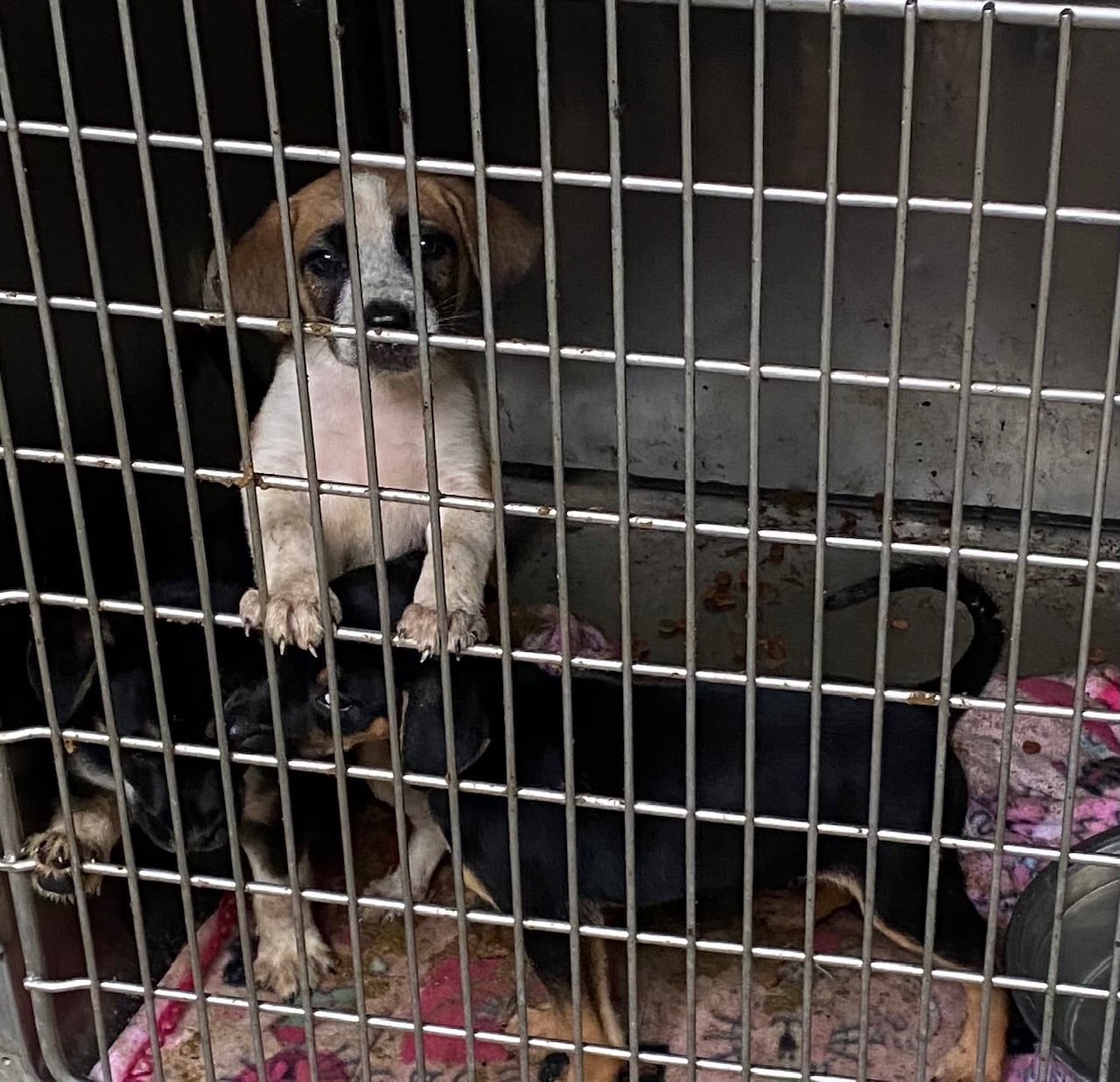
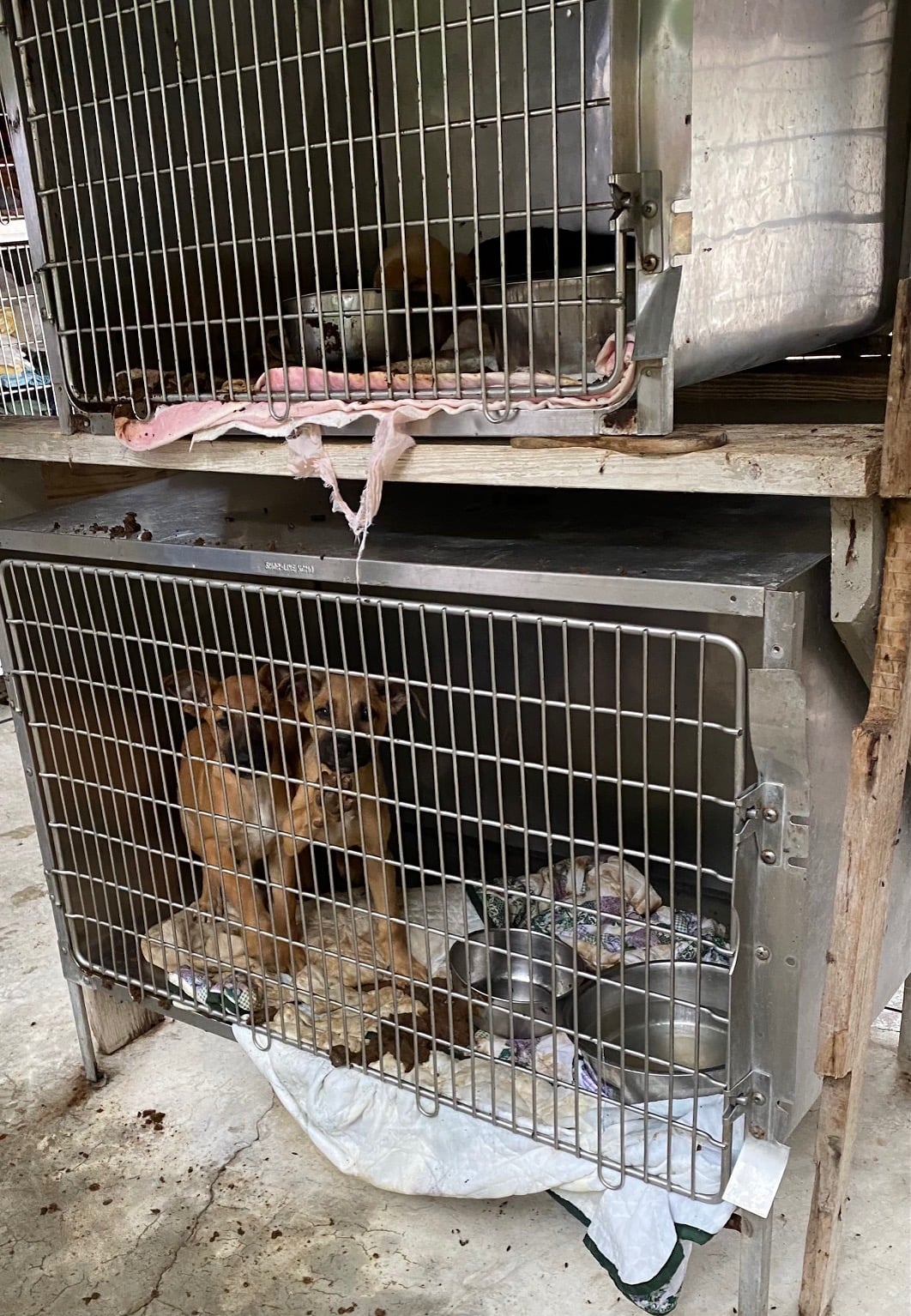
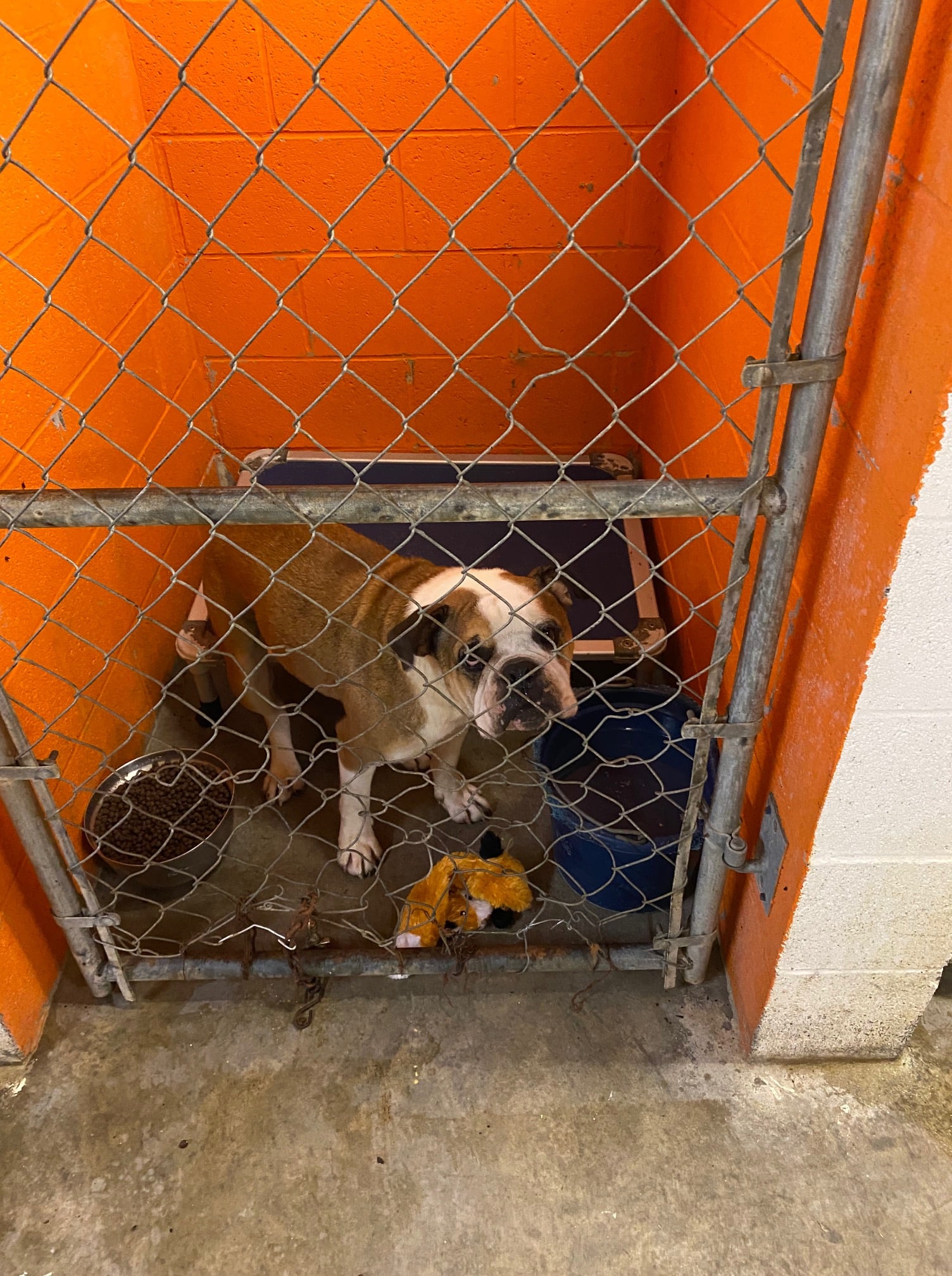
The outside dogs now have an overhang that creates some shade, and today offered a little protection from the blowing wind. As tough as it is to live outside 24/7 in Tennessee, those are the nice digs compared to the indoor dogs. At least there is room for them to move around and they are breathing fresh air.
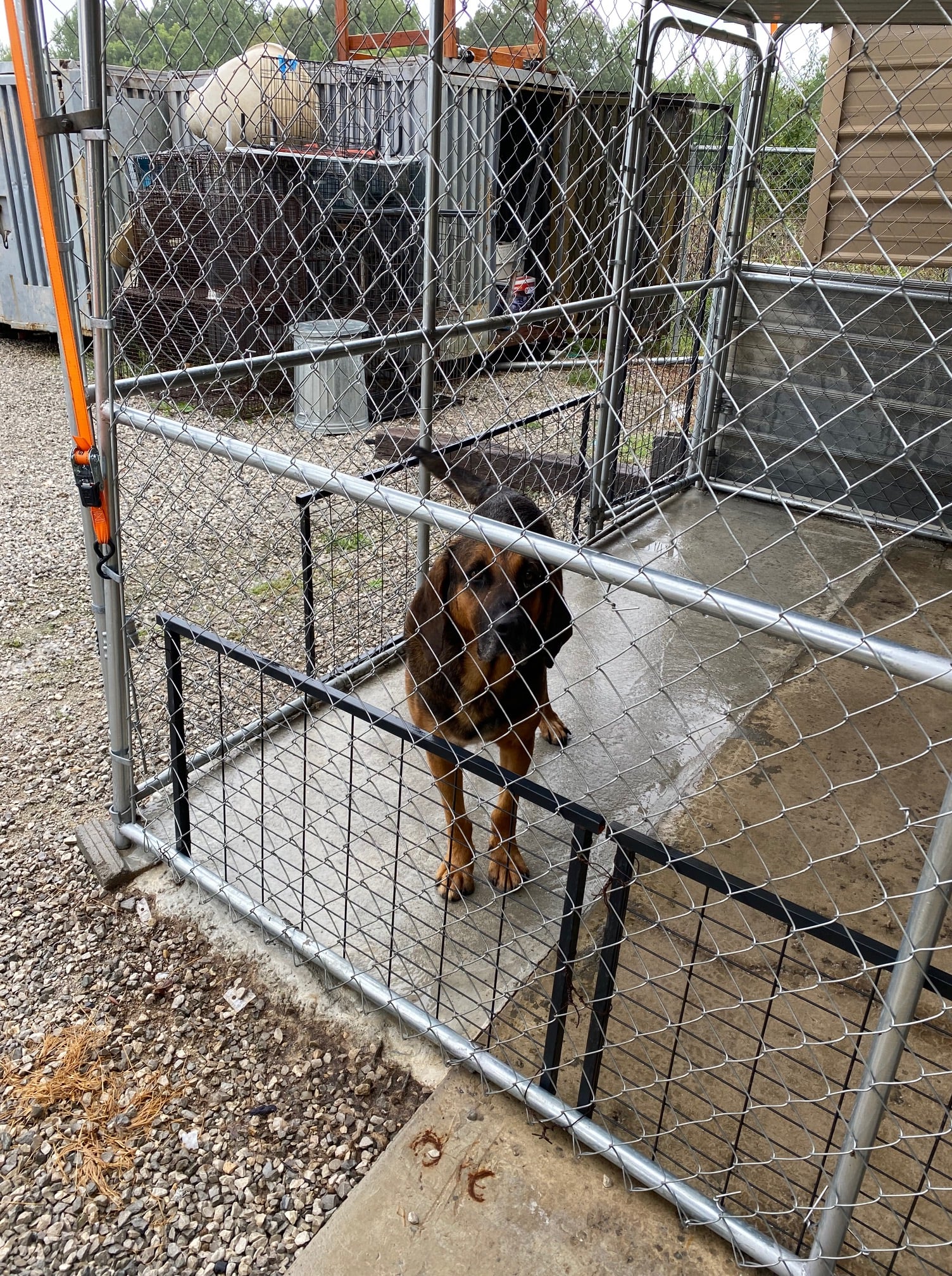
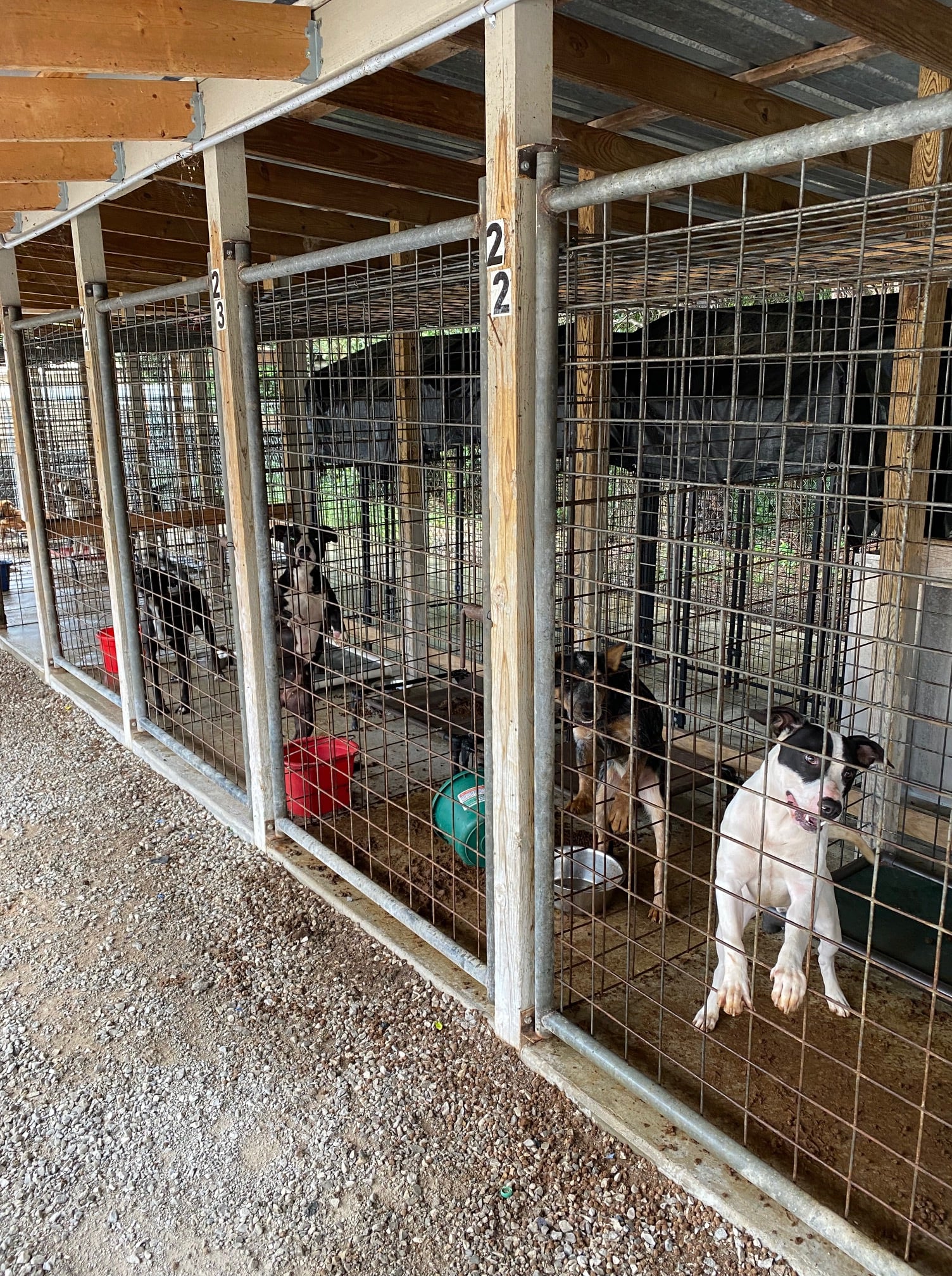
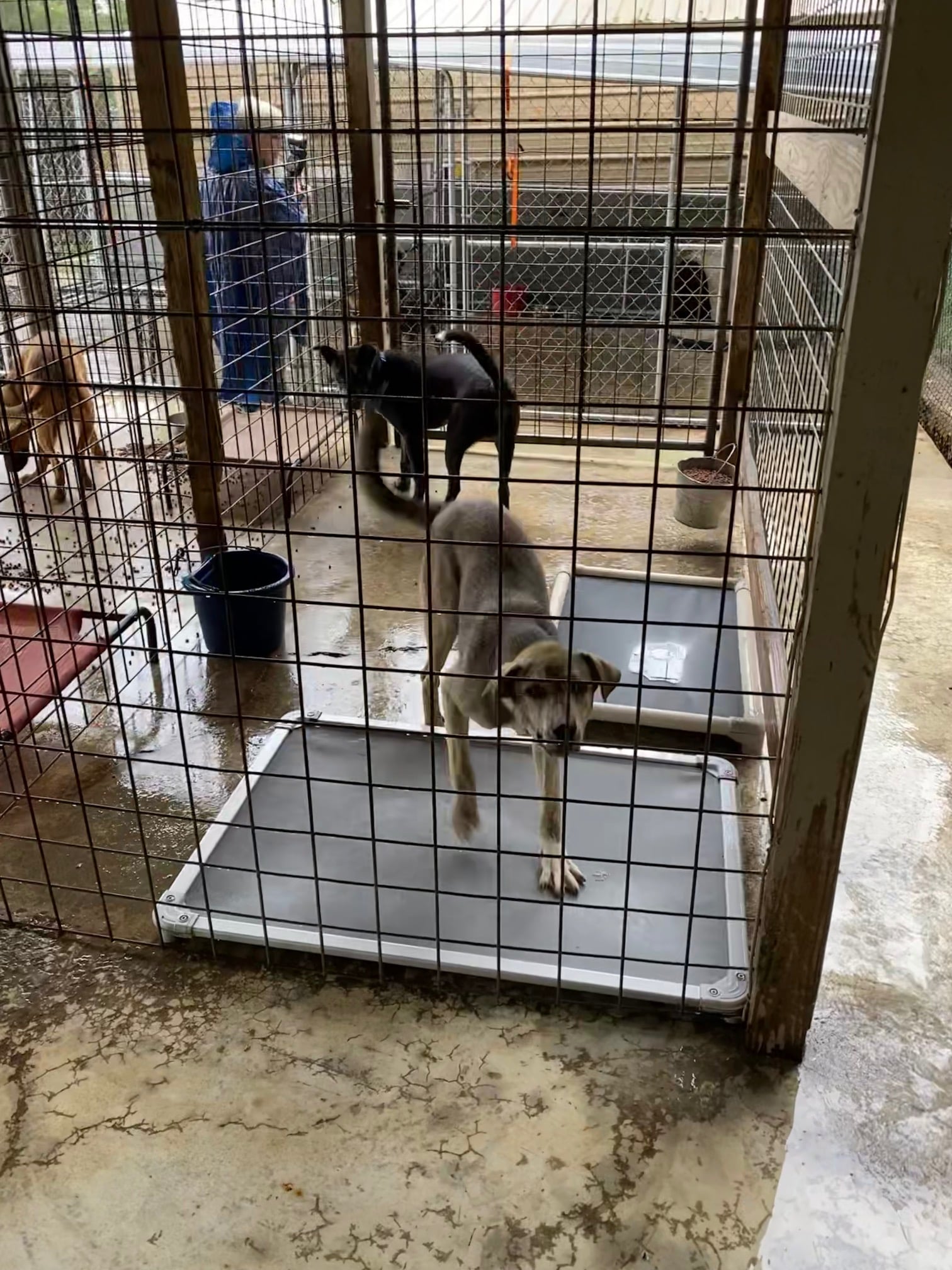
The inside kennels have likely been there for decades. They are cement on three sides and measure maybe 3 feet wide by 4-5 feet deep. They do have rickety karunda beds, but once you add a water pail and food bowl, there isn’t room for a dog to turn around. These kennels mostly house the small and medium dogs, but out of necessity there are also large dogs in there. There are no windows and the smell is overpowering. Seeing dogs living in these conditions is truly heartbreaking. I had to keep reminding myself that it’s better than it used to be and hopefully these dogs won’t be there too long.
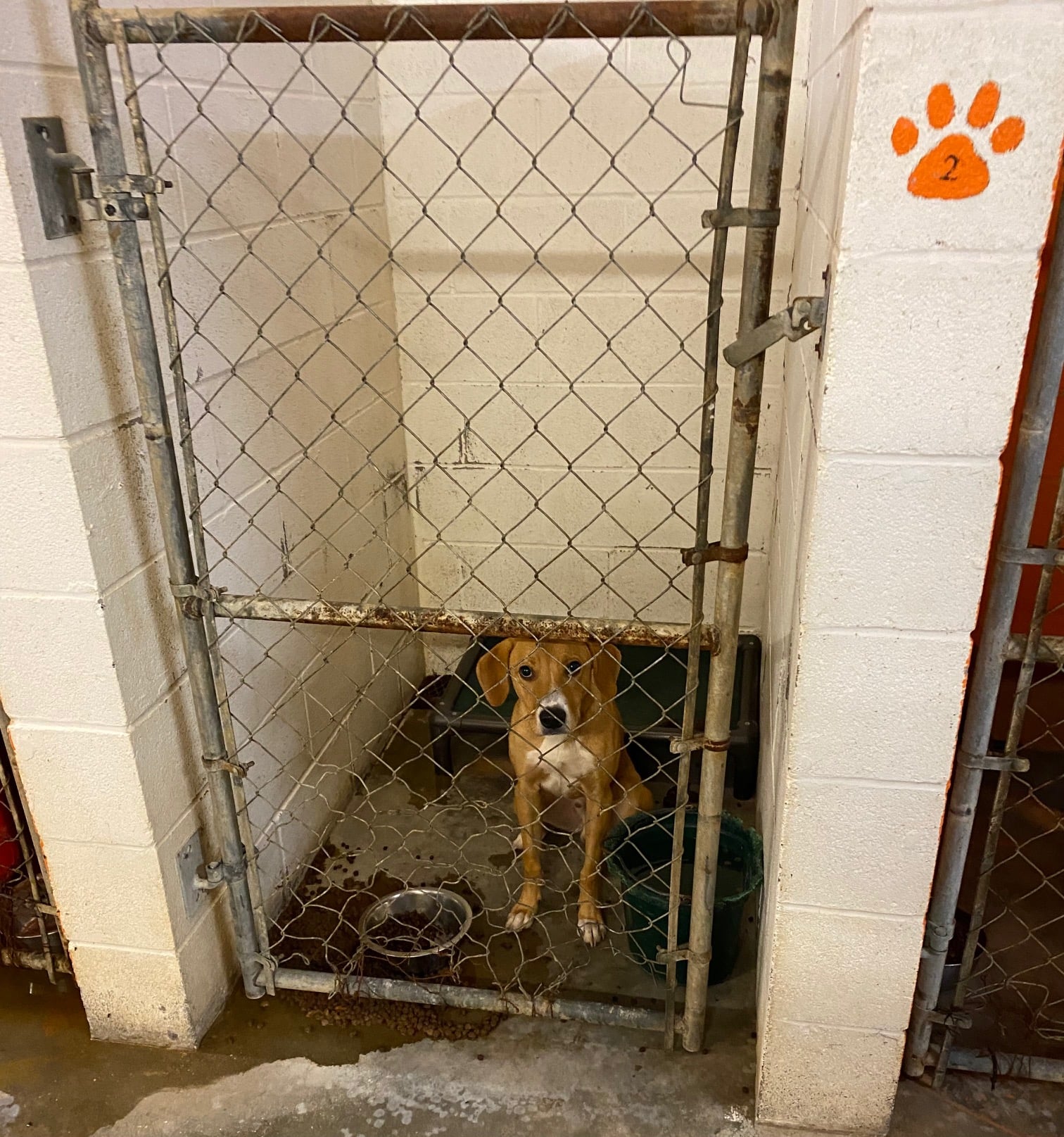
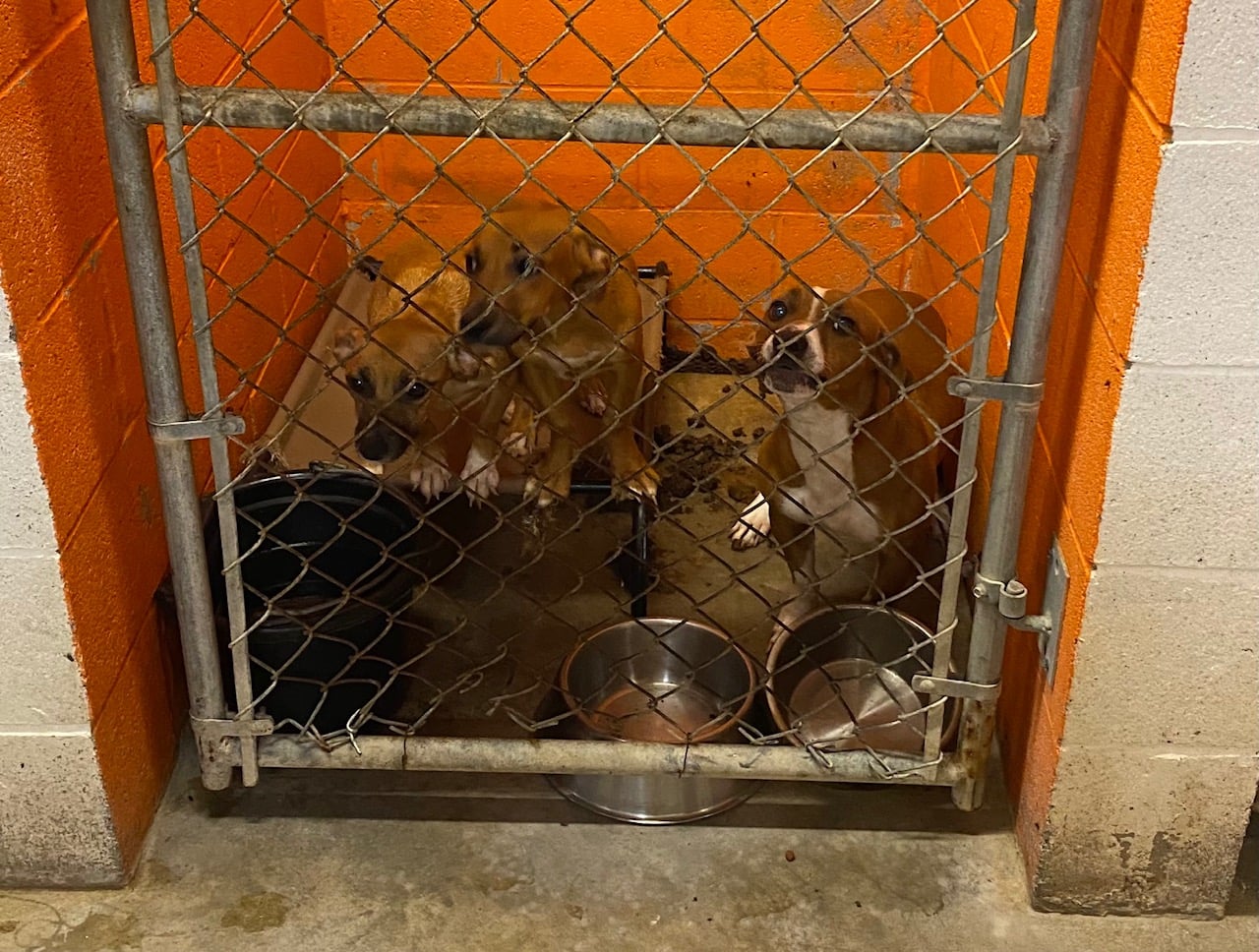
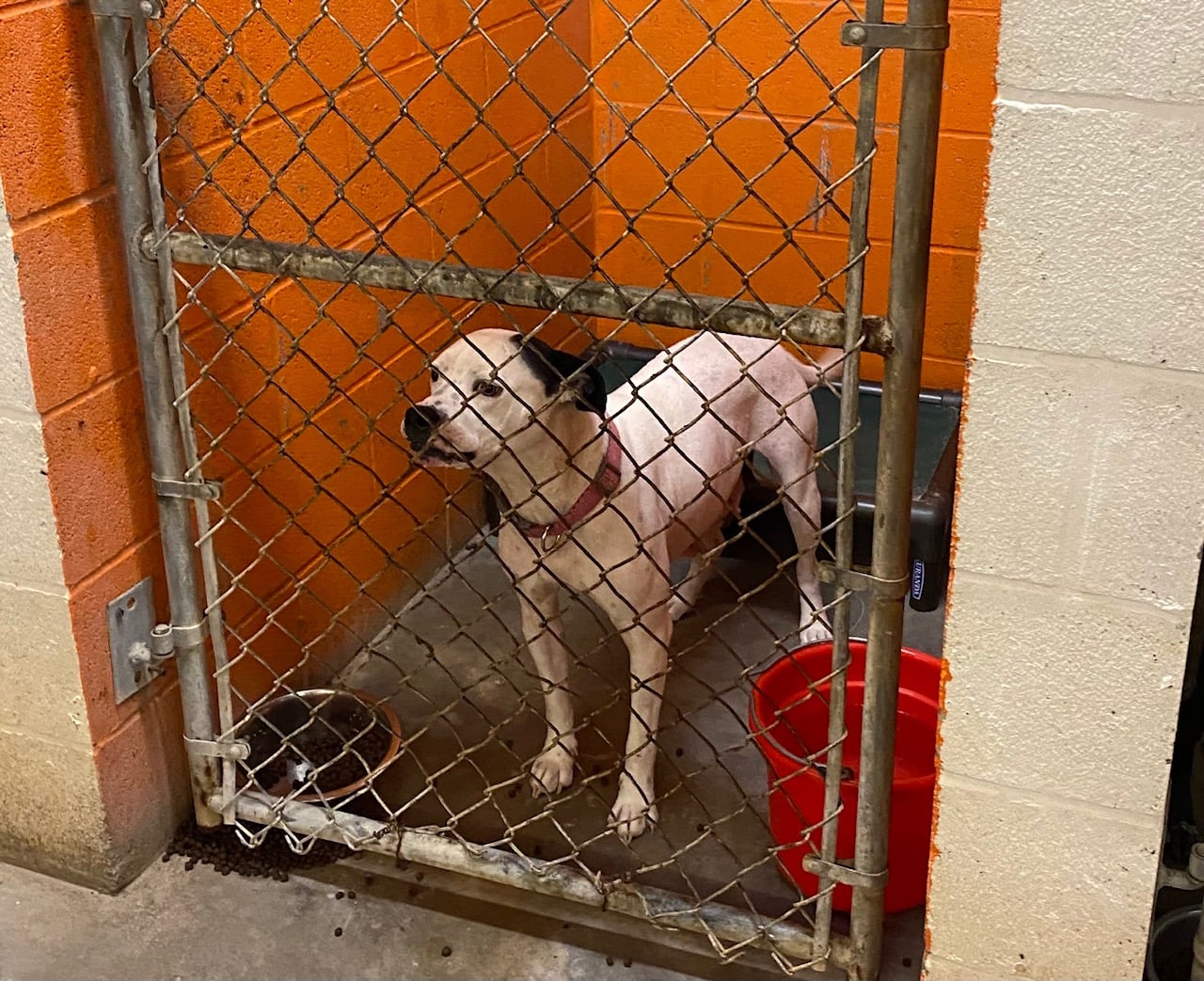
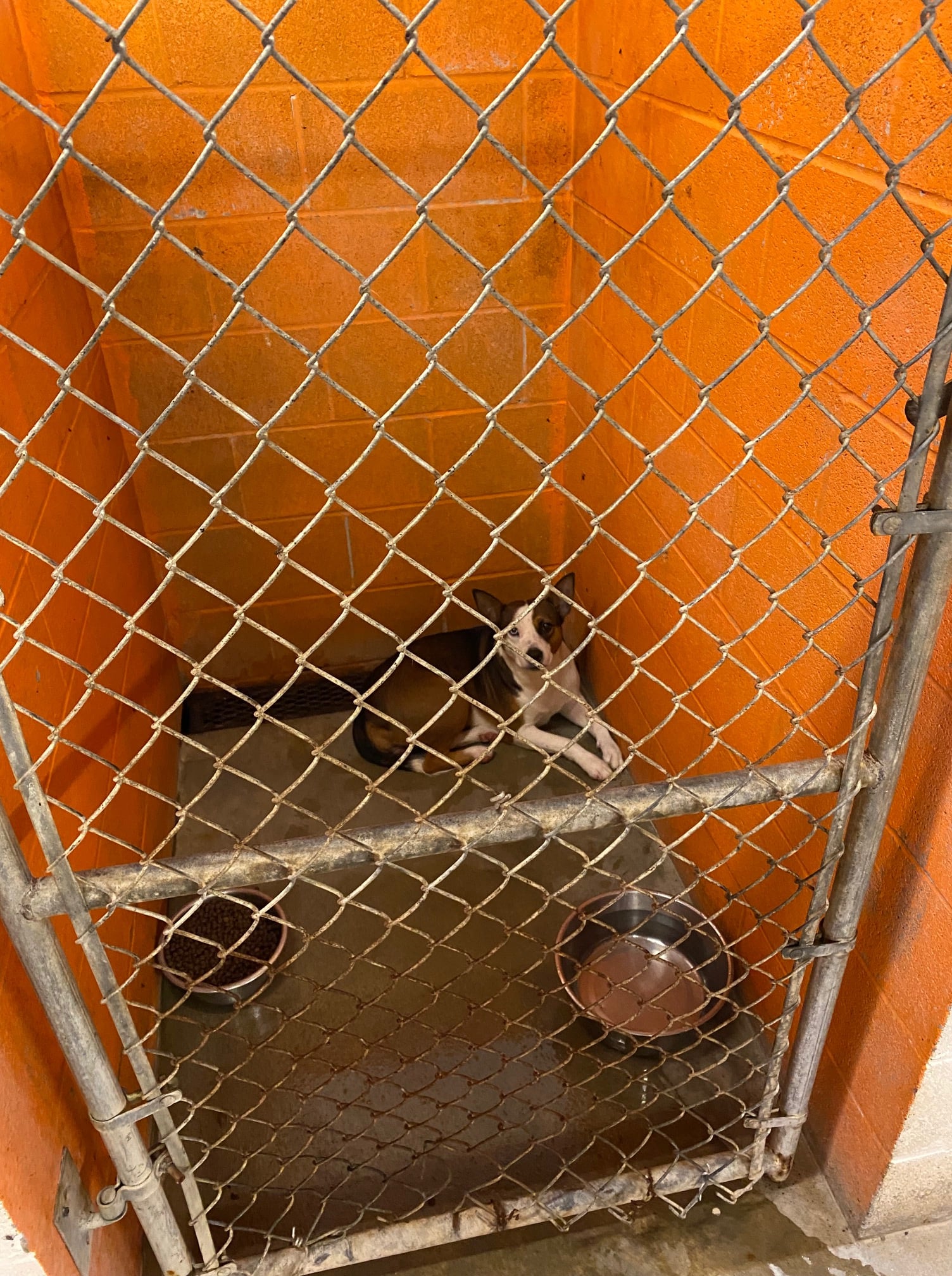
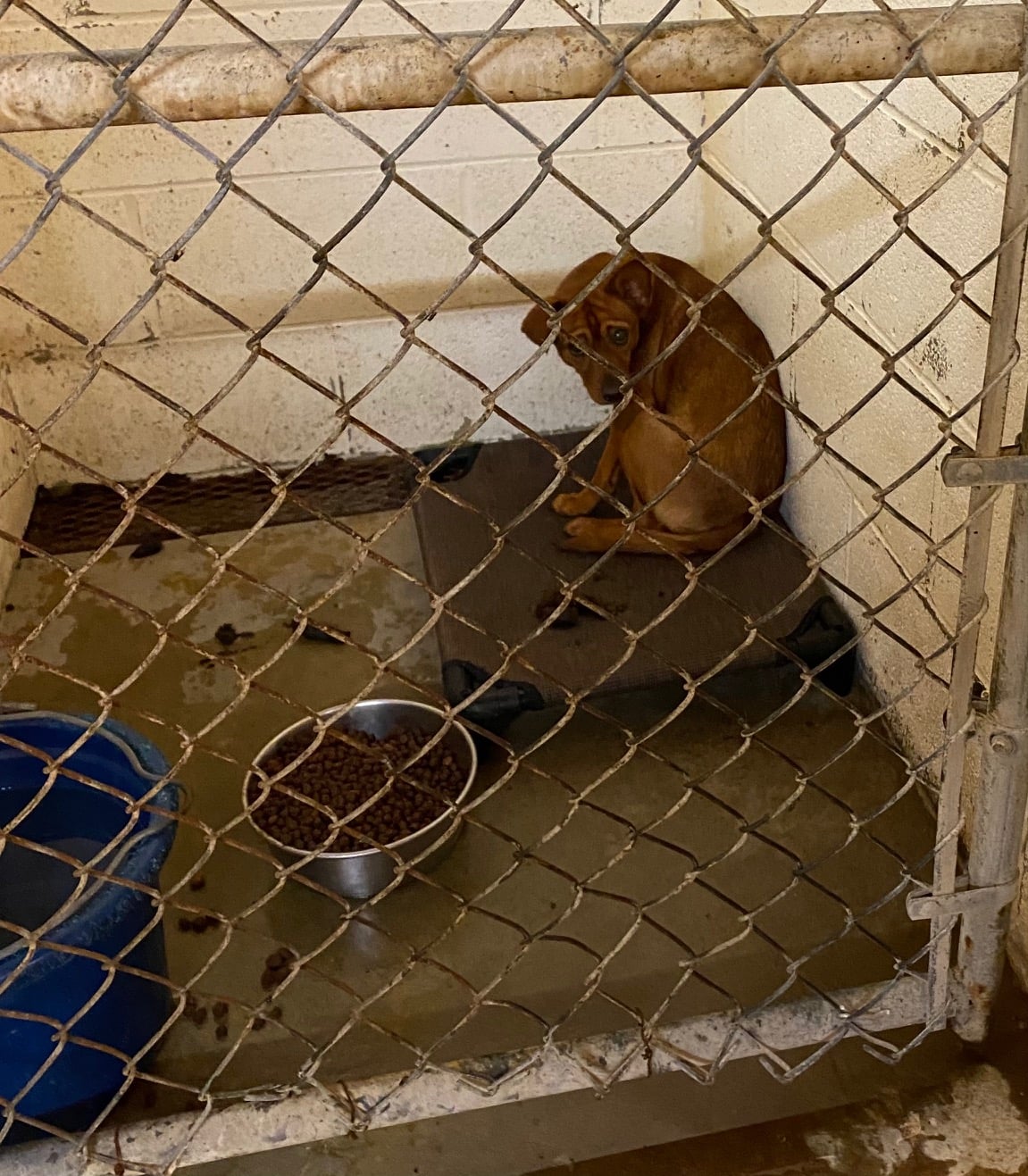
We weren’t able to make a live video on Facebook or Instagram partly because the connection was pretty lousy, but also because inmates were busy cleaning the kennels (we aren’t allowed to film them). Many shelters have moved away from having inmates clean, as it makes it really hard for shelters to maintain a consistent level of care (inmates are changed often); it also makes it impossible to bring in volunteers. If there’s one thing that could help the situation at Franklin County, it would be for a strong volunteer and foster program.
I suggested as much to Heather, and she expressed doubt that the county would allow it, mostly for liability reasons. Compared to the last time we visited, Heather seemed more upbeat. I imagine that’s because not only are things somewhat improved, but she is receiving the support of rescues, the Bissell Foundation, and one incredible animal advocate, Jessica Brown, who moved to the area and is actively helping Heather get animals out.
You’ll hear more about Jessica at our next visit to Animal Harbor, a nearby private nonprofit shelter where she recently began work as the rescue coordinator.
Just like the last time we were here, I left grateful that Franklin County has an ACO like Heather to fight for these dogs. Without her, likely the shelter would be an even sadder place. Still, to my mind, there is no excuse for a shelter like this in a country like ours. Franklin County citizens are paying for this quality of care with their tax dollars. Animal control is a county service just like any other, and I imagine if their schools or water treatment plant looked like the shelter, they wouldn’t stand for it. It’s far past time for residents to speak up and demand better.
We left Franklin County to head a few miles up the road to Animal Harbor – the difference in facility and care is night and day. I’m excited to tell you about that visit. We still have six more visits and lots to show you. Like and follow our page so you don’t miss any of them!
The best way to help the dogs (and cats) at Franklin County shelter (if you don’t live in the county) is to support rescues that help them.
TUESDAY MIDDAY:
We met up with Jessica Brown and followed her to Animal Harbor, a private, nonprofit animal shelter in Winchester, TN. We first met Jessica on a tour in 2019 when she volunteered with the Shelbyville County Shelter. She has since relocated and is having a huge effect on the welfare of animals in Franklin County.
She still saves animals at her home and with the help of her husband (an excellent trainer) and Kathy, her partner from Shelbyville Shelter Soldiers. They truly take on the hardest of luck cases – dogs slated to be euthanized for behavioral reasons and medical lost causes. Once she relocated to the Winchester area, the first thing she did was reach out to Franklin County Animal Control and start helping Heather moves animals out.
Soon enough word got out and Jessica was recently hired to be the rescue coordinator at Animal Harbor. As Emily, the director, said, “Hiring Jessica was a no-brainer.” Since being hired in May, she has seriously increased the number of animals Animal Harbor has been able to save.
The AH building is bright and colorful and in every direction you look there are positive messages and thank yous to the many, many donors who make AH’s work possible. Clearly, Emily is a whiz with the fundraising. AH has a friendly staff who are clearly good at their job. We met the manager, intake director, several kennel attendants (one of which also doubles as a trainer).
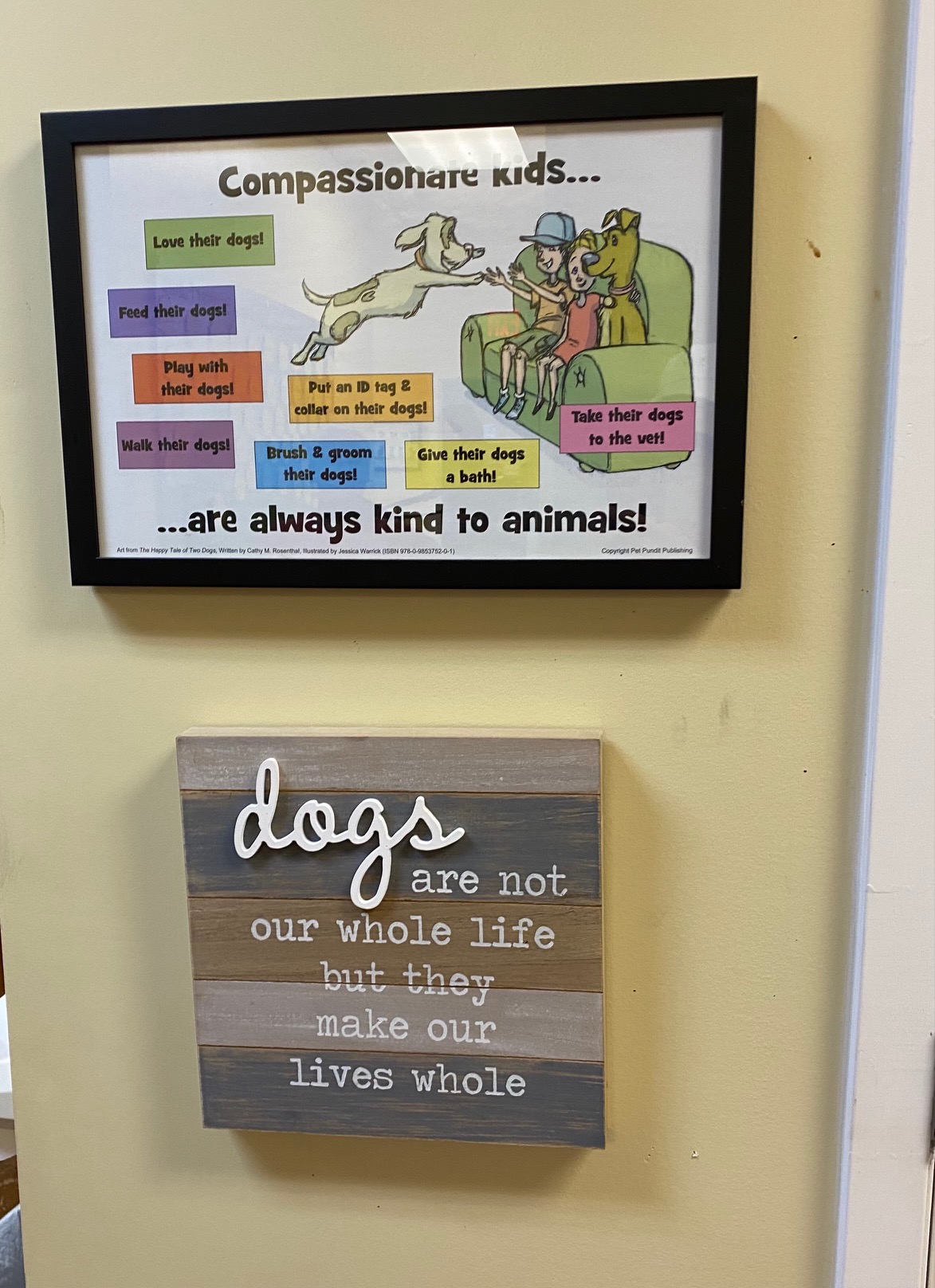
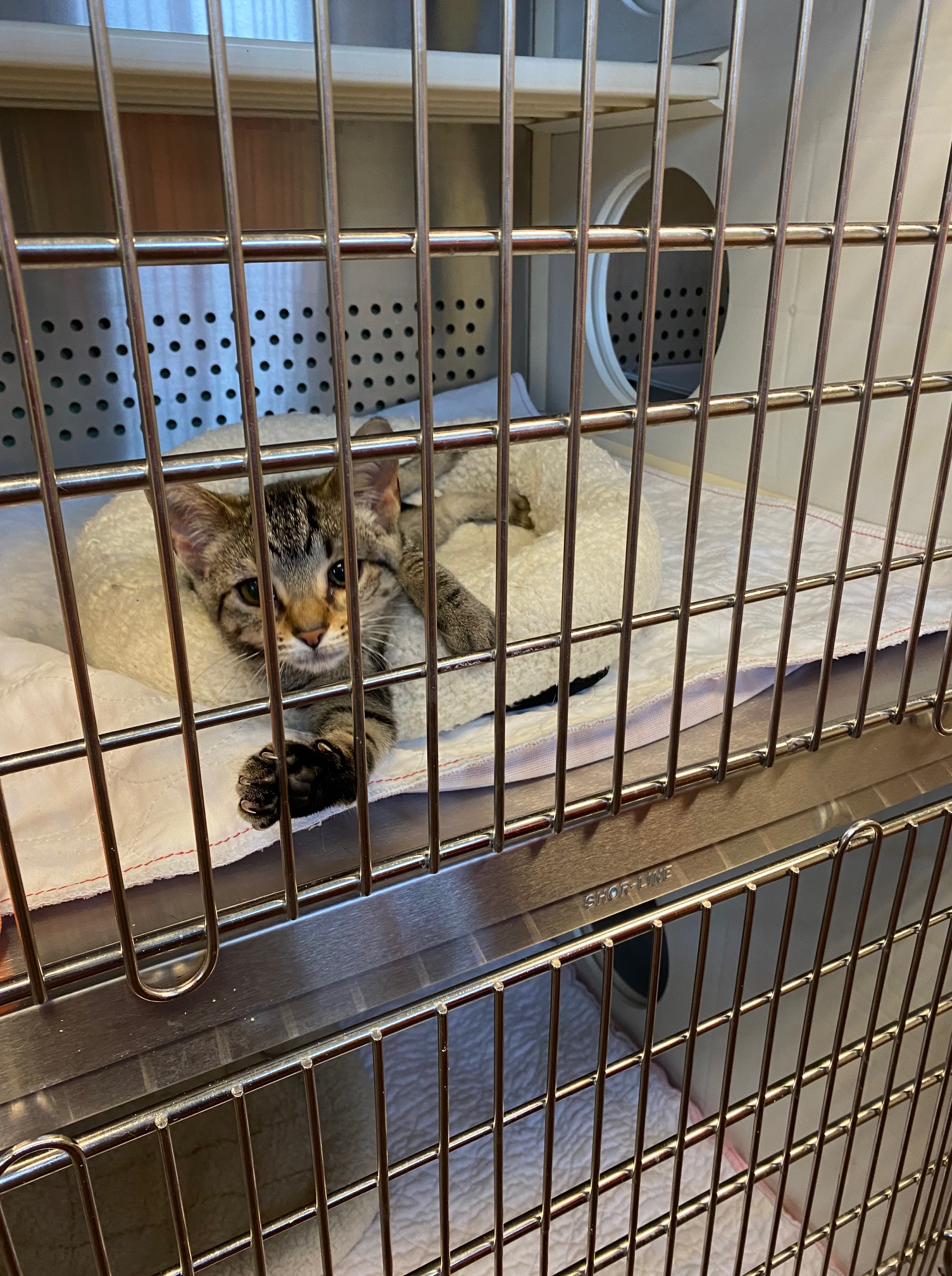
After a tour of the cat wing (isolation, intake, and four interactive cat rooms and a cattery), we headed out to see the dogs. Jessica introduced us to each of them, explaining which had a rescue commitment and which is still seeking one (or an adopter – local or northern). There are spacious play yards and every kennel is clean and big. What a difference from the county shelter nearby.
Like every other place we’ve visited, they are seeing a serious uptick in owner surrenders and a serious downtick in adopters and rescue pulls. Lucky for them, they are a private facility so they can manage their intake. And lucky for the local animals that Jessica is determined to save every one, even if that means taking it to her house.
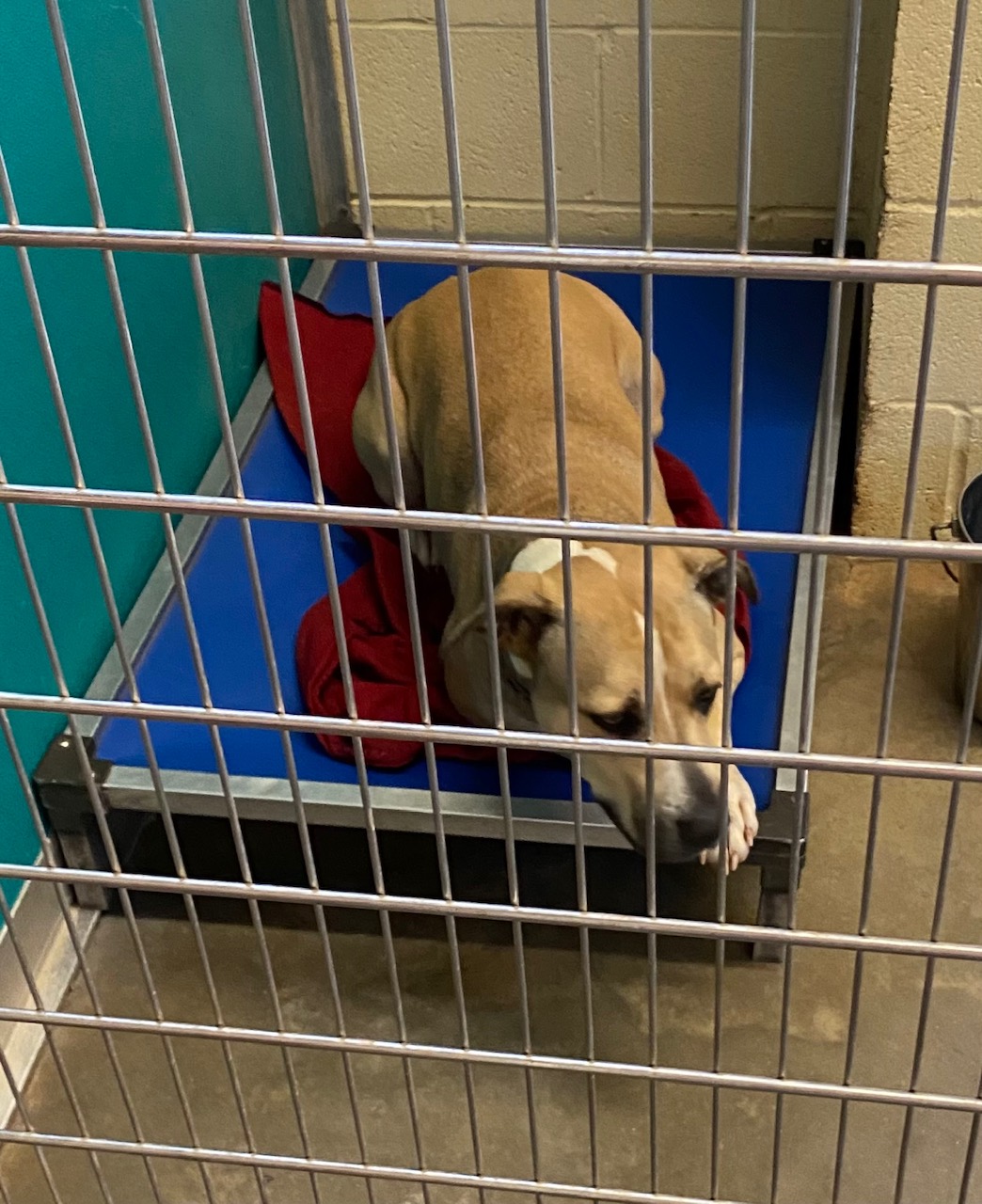
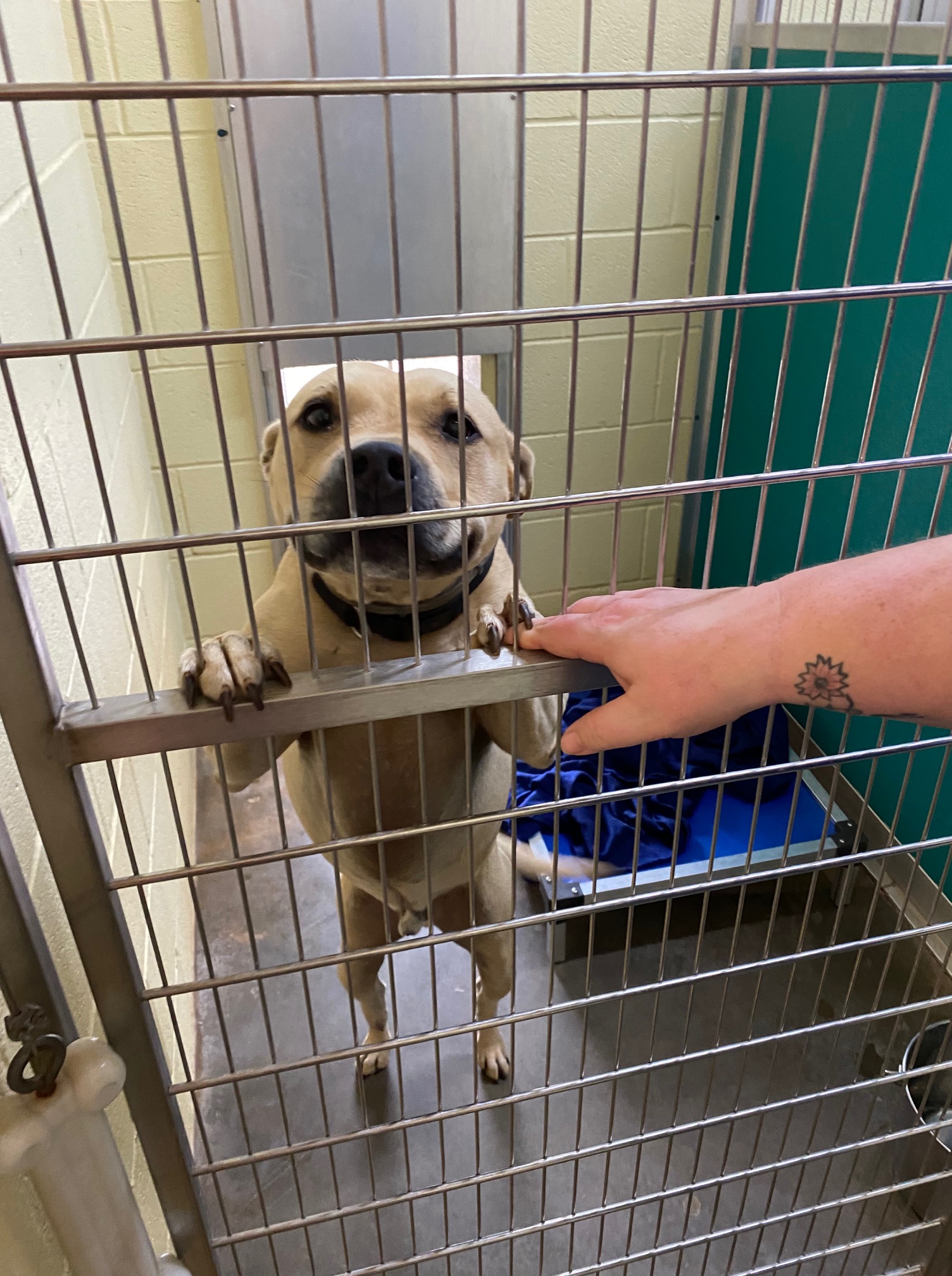
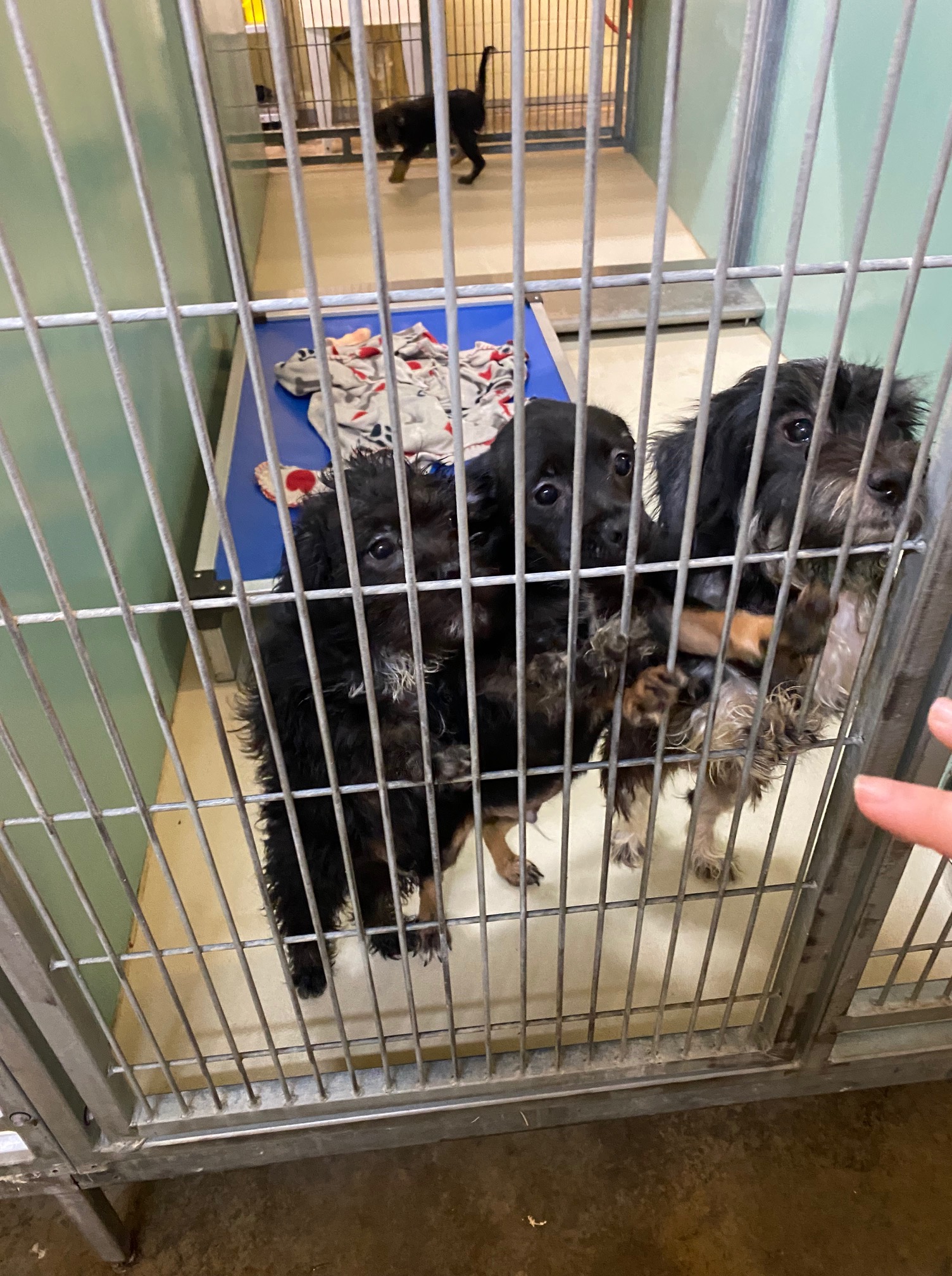
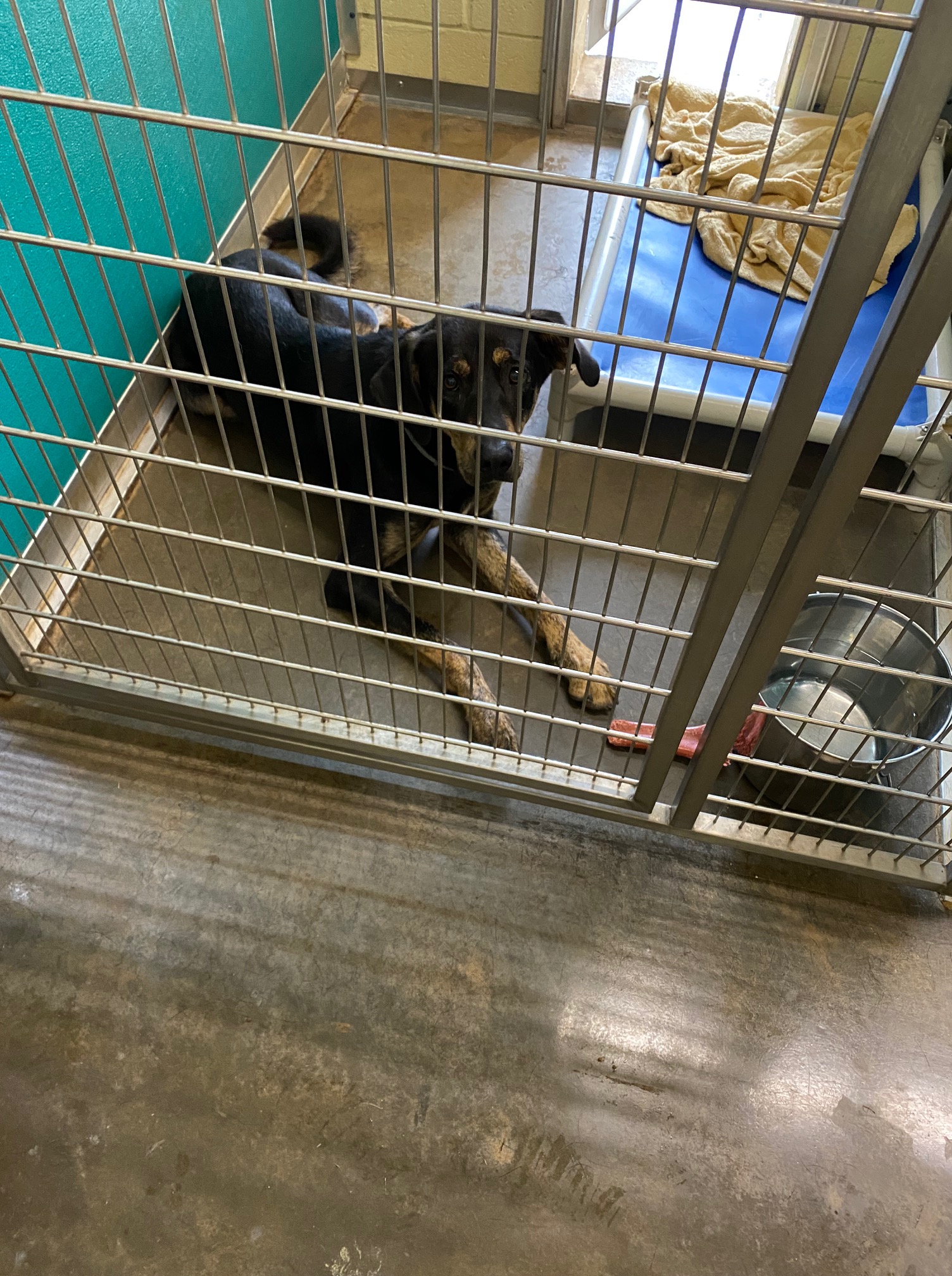
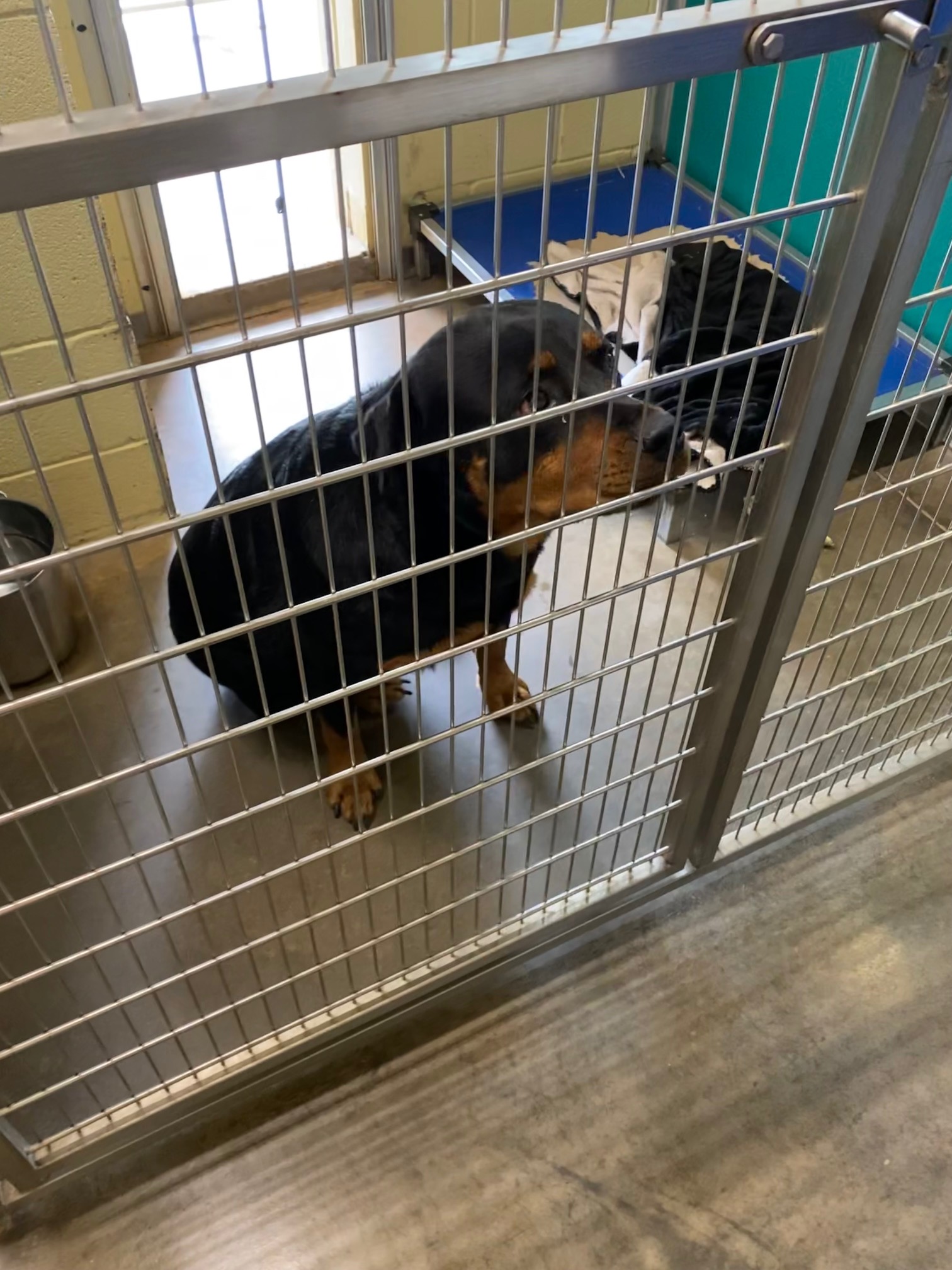
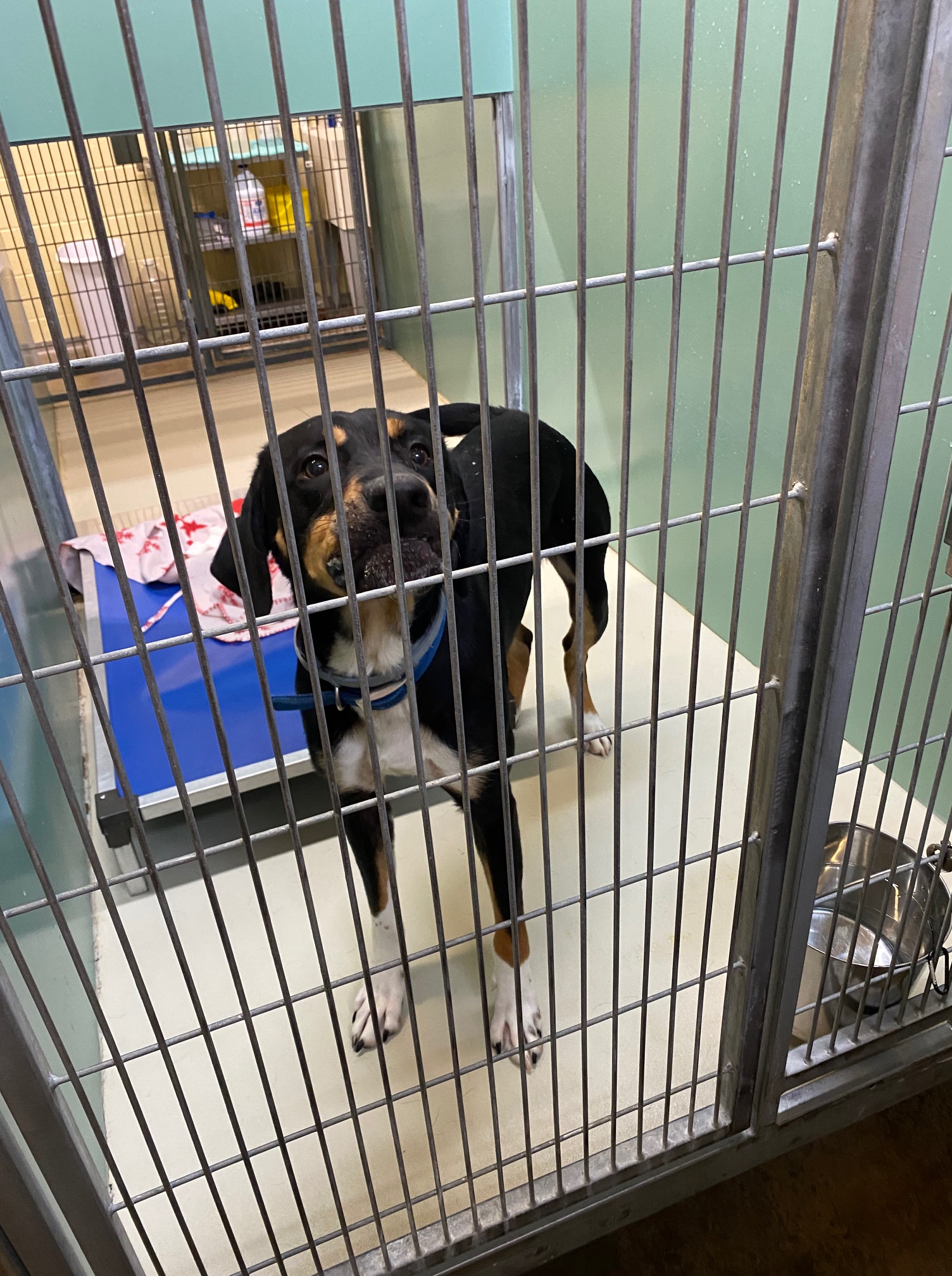
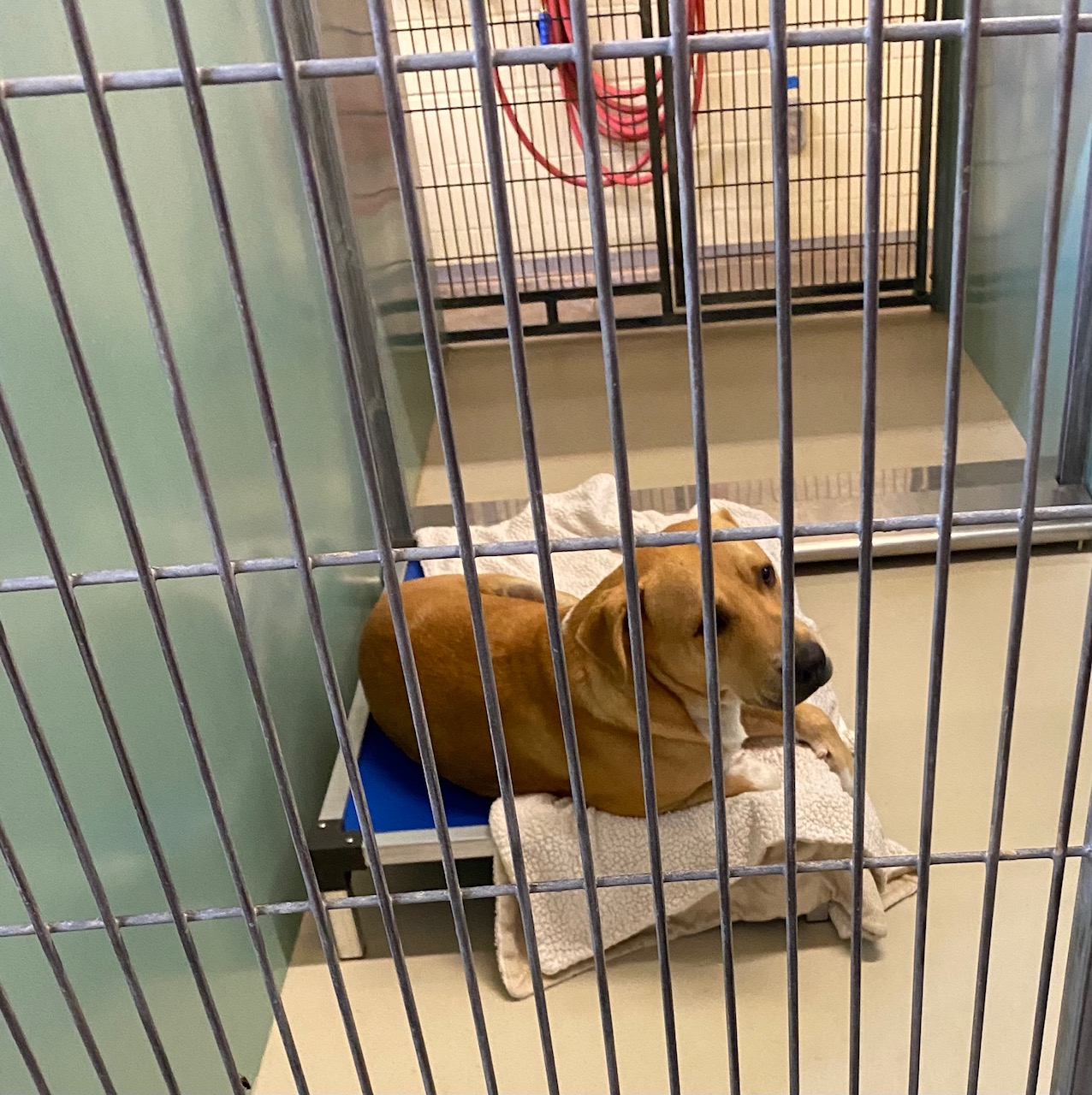
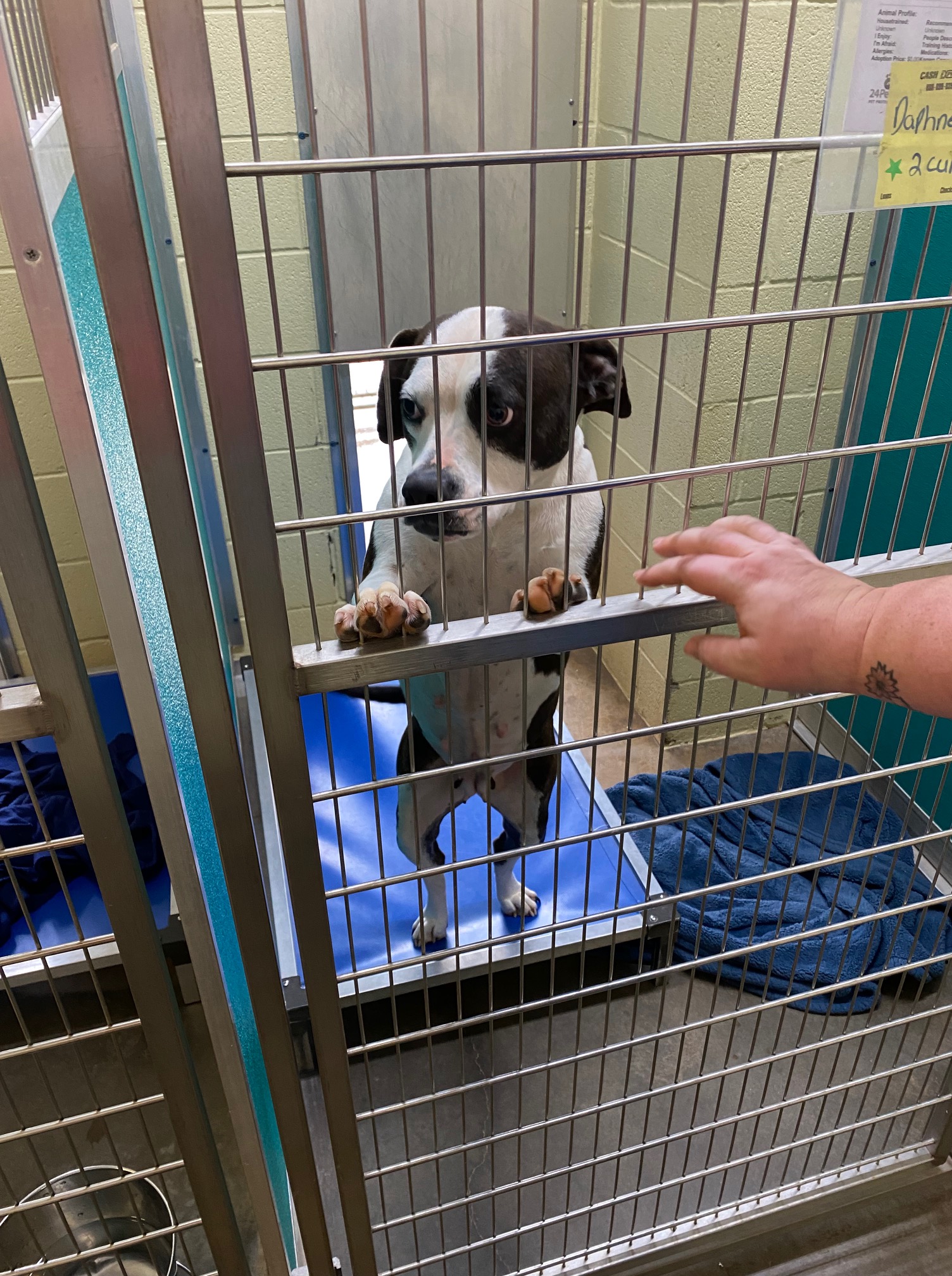
AH has an enormous grant that allows them to spay/neuter, treat heartworm and other medical issues (one of their dogs is being treated for cancer), and to offer SNAP (spay neuter assistance program) for community animals.
It was exciting to speak with Jessica and the rest of the staff. Their enthusiasm for the animals in their care and the work they do is contagious. I’m hopeful for the future of sheltering in Franklin County and hopeful that their best days are ahead of them.
We’ll tell you more about Animal Harbor in upcoming blog posts and on our YouTube Channel this fall. For now, though, stay with us this week as we have six more visits to make! And if you see an animal in these pictures that you’d like to adopt for yourself or pull for your rescue, contact Animal Harbor directly (https://www.animalharbor.org/). They do have a northern adoption program and utilize Rescue Riders to deliver adopted animals north.
WEDNESDAY MORNING:
This morning we watched heroes in action. Charlie’s Angels Saving Animals is a nonprofit transport responsible for moving thousands of animals out of Tennessee.
Laura started rescuing dogs via transports in 2016, all on her own with rented vans. She is a beautiful example of one person deciding to make a difference. Not waiting for permission or directions. She’s done it all out of her own pocket with the help of so many who can’t resist her passion and singular focus–to save lives. To date, she has rescued 7102 (plus the 26 today!).
She, along with two other heroes, Ashley and Maily, recently founded Charlie’s Angels Saving Animals in Columbia, Tennessee. The name comes from a volunteer pilot named Charlie who flies some of their transports in his plane. Together with local rescuers, shelters, and volunteers they mobilize and coordinate pulling dogs from overcrowded shelters and rescues, secure rescue placement, get the vetting necessary (health certificates, vaccines, heartworm testing, deworming), and move the animals out via van or plane twice a week.
On Wednesdays and Saturdays, all of the dogs for the next transport are brought to the CASA building, where vets like Dr. Gordon volunteer their services and take care of the necessary vetting. From there, Laura transports the dogs back to her house where they will stay overnight (we’ll have quite the puppy slumber party tonight since Nancy and I are also staying with Laura this week!). Early tomorrow morning, a volunteer driver will arrive to transport the van filled with 26 dogs and puppies to Illinois rescue contacts.
CASA does not charge shelters or rescues for their transport services. They operate solely on donations, and undoubtedly much of Laura’s salary (she still works fulltime). I can’t say enough about the incredible work Laura and CASA are doing – I don’t know any organization saving more dogs anywhere. Sponsors and donors are sorely needed to enable them to do even more. You can donate via their website: https://www.casatransport.org/donate
Watching these incredible volunteers work this morning, we marveled at their humor, compassion, and professional care. I handed out treats and told the dogs that they were the lucky ones, because indeed they were to have landed in the hands of CASA.
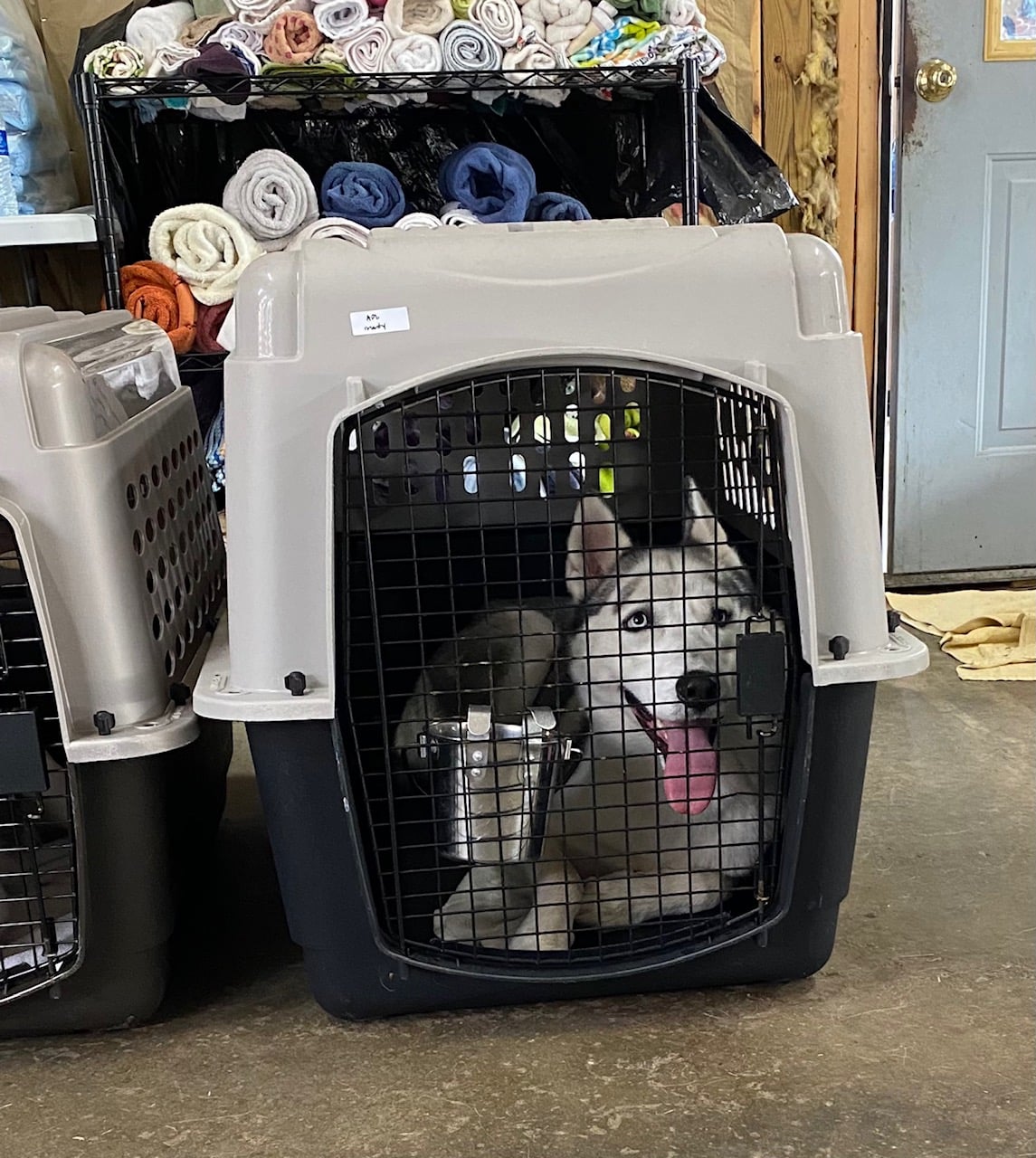
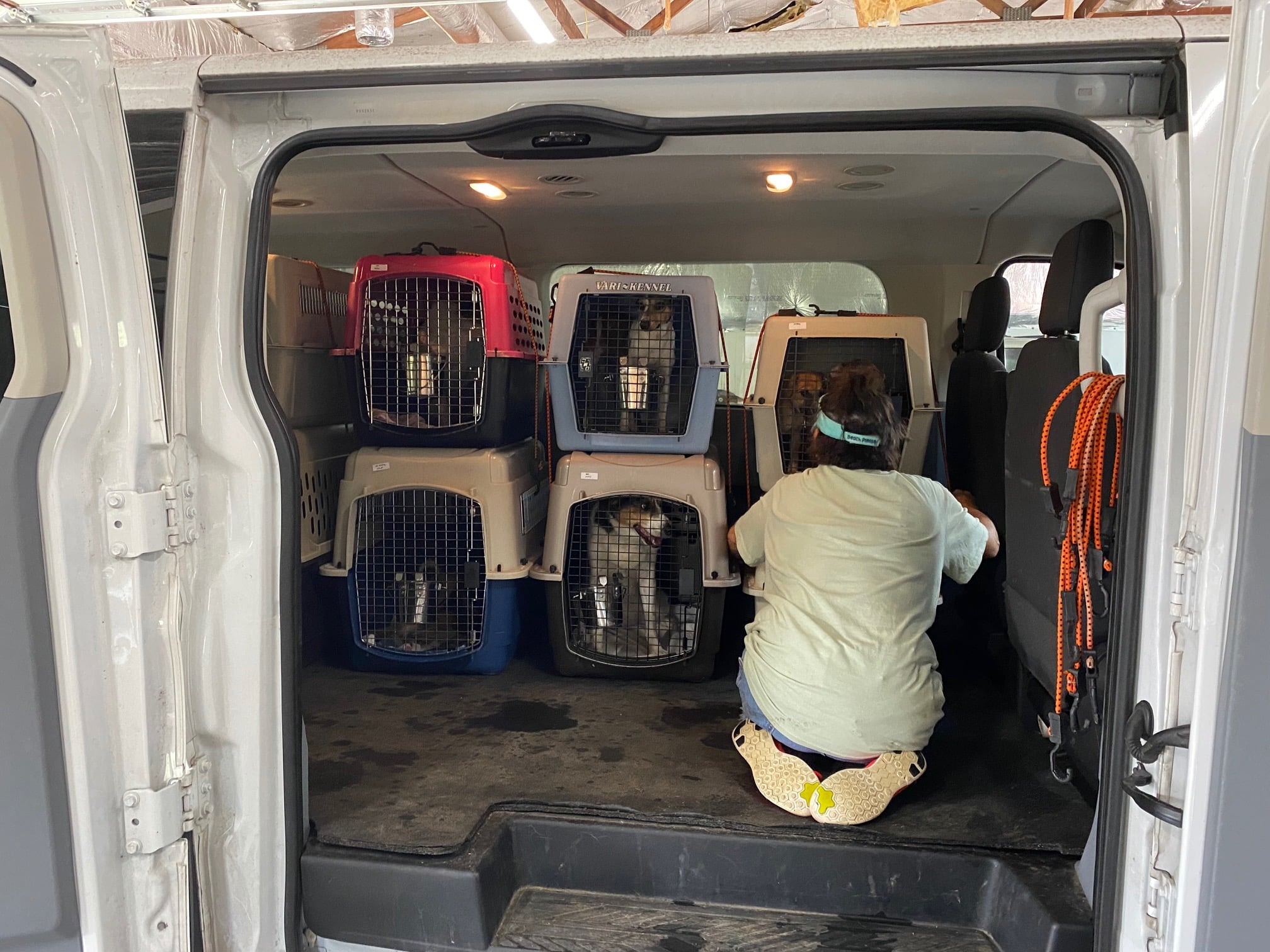
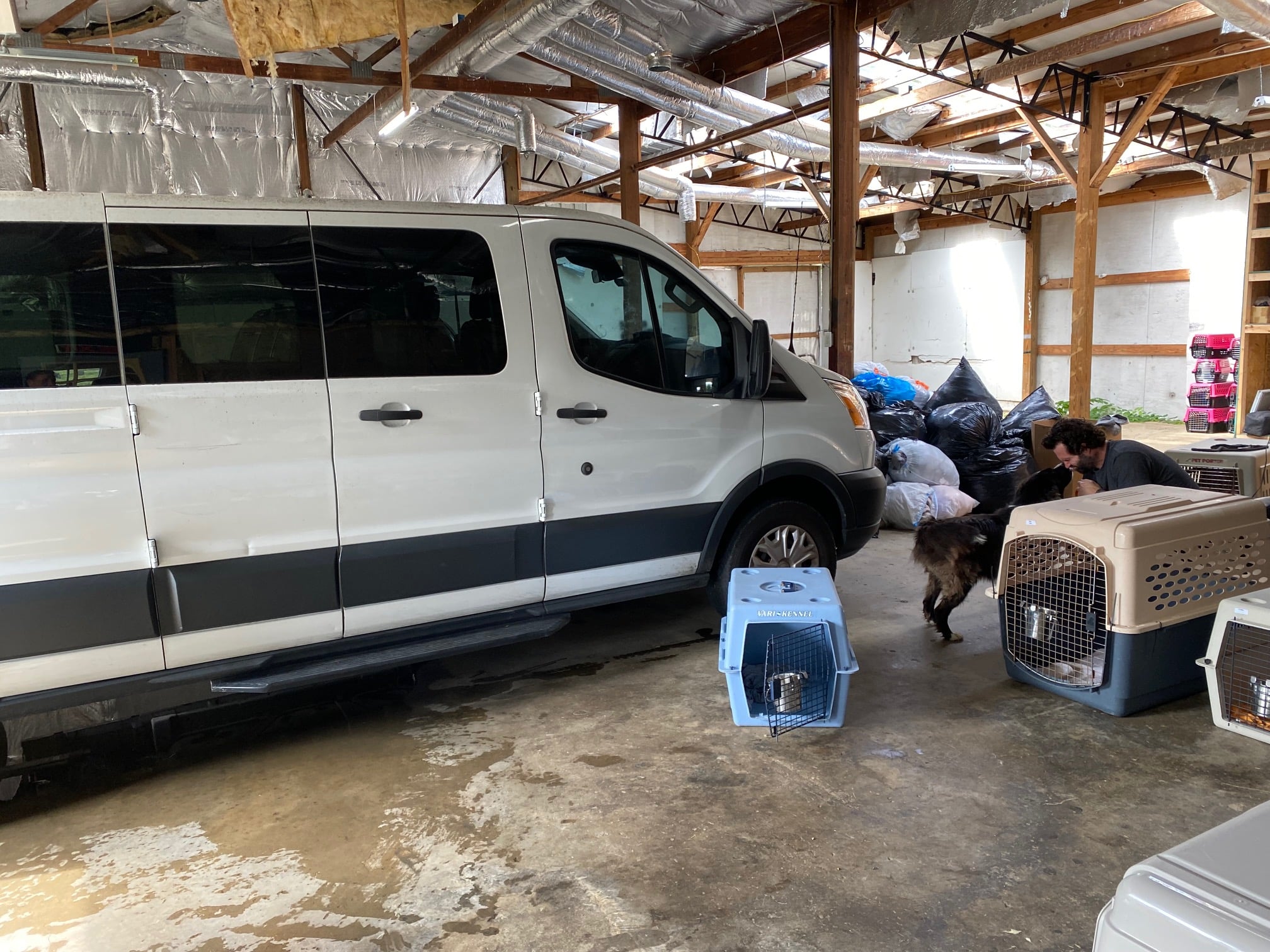
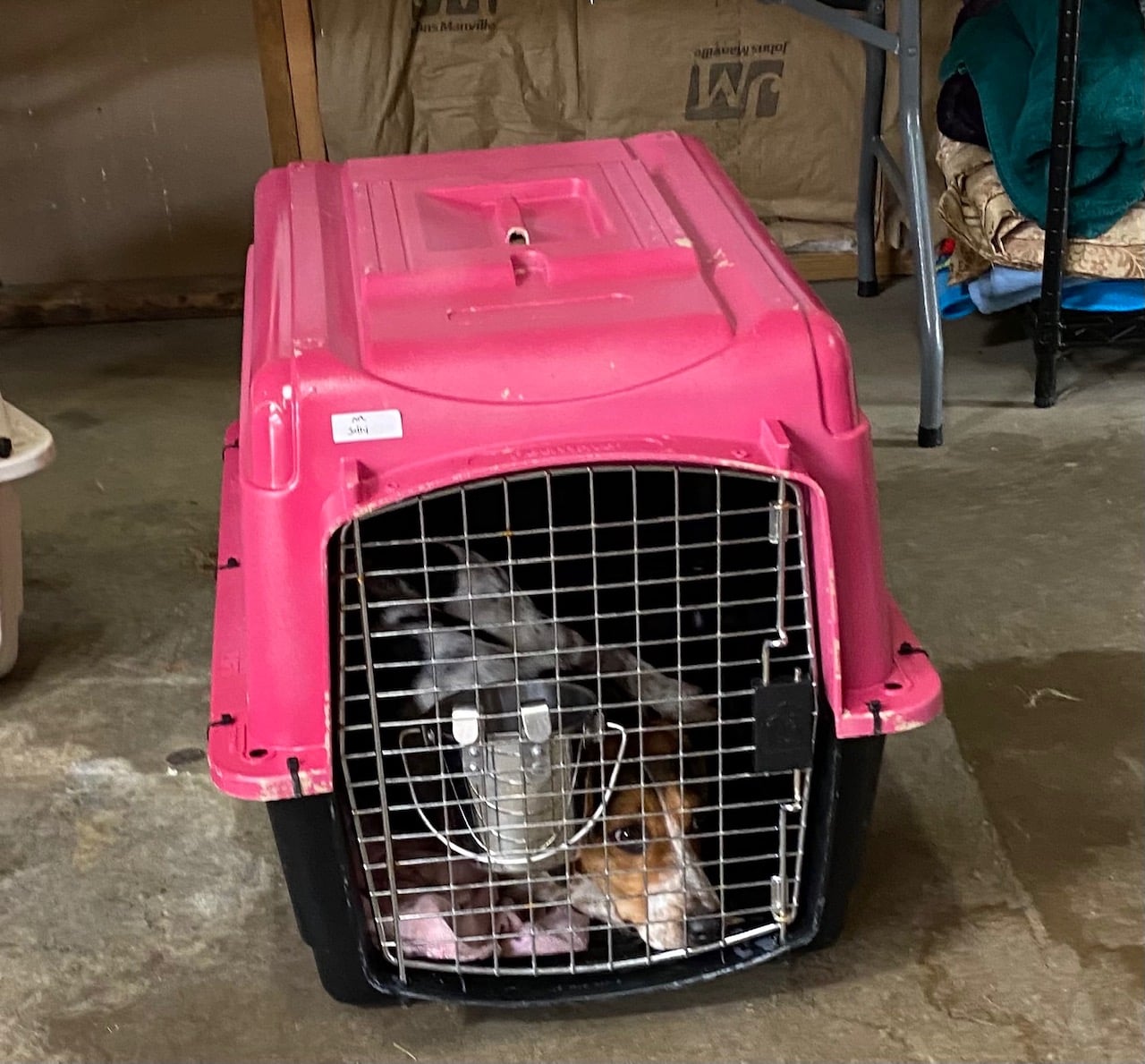
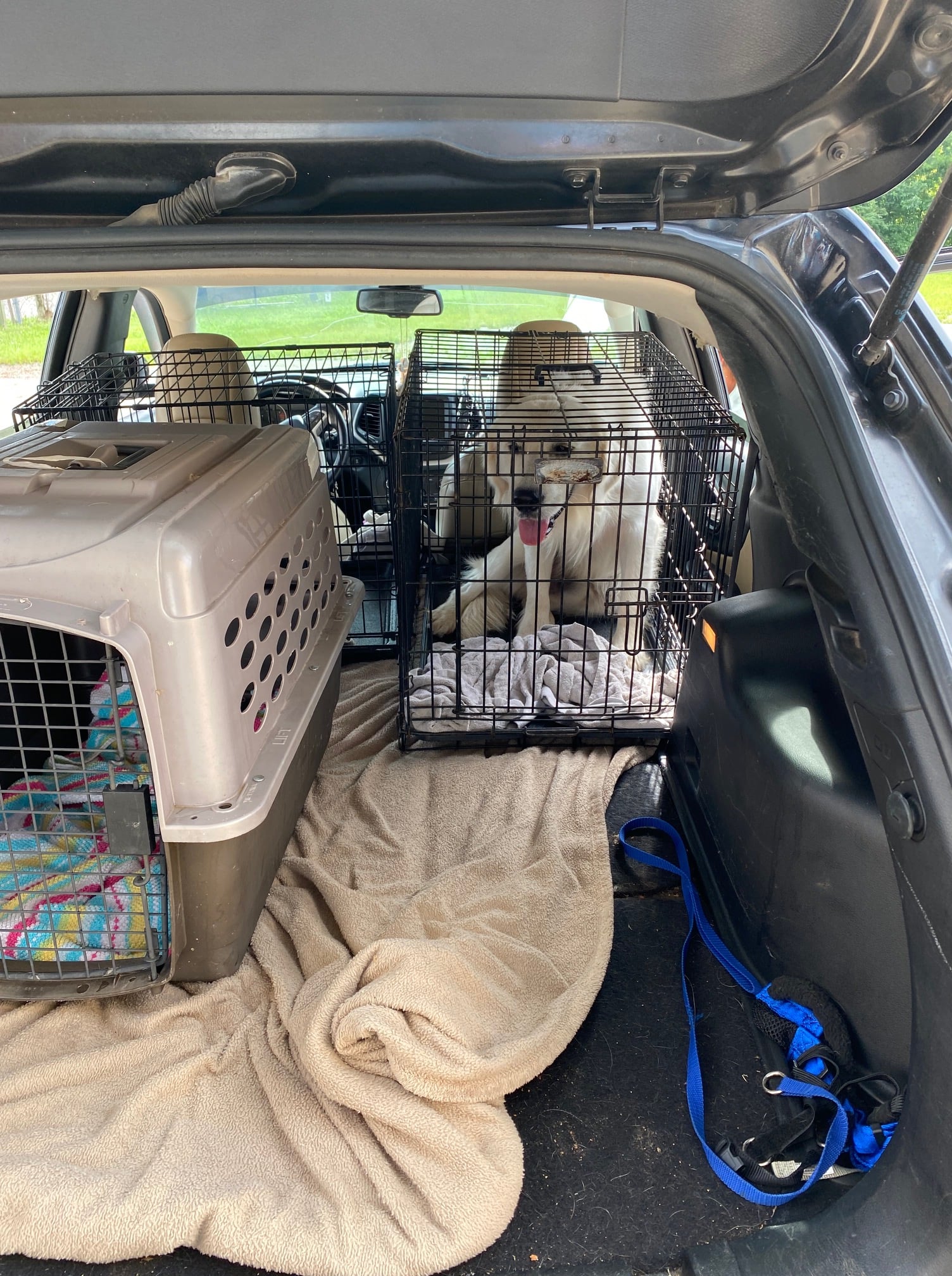
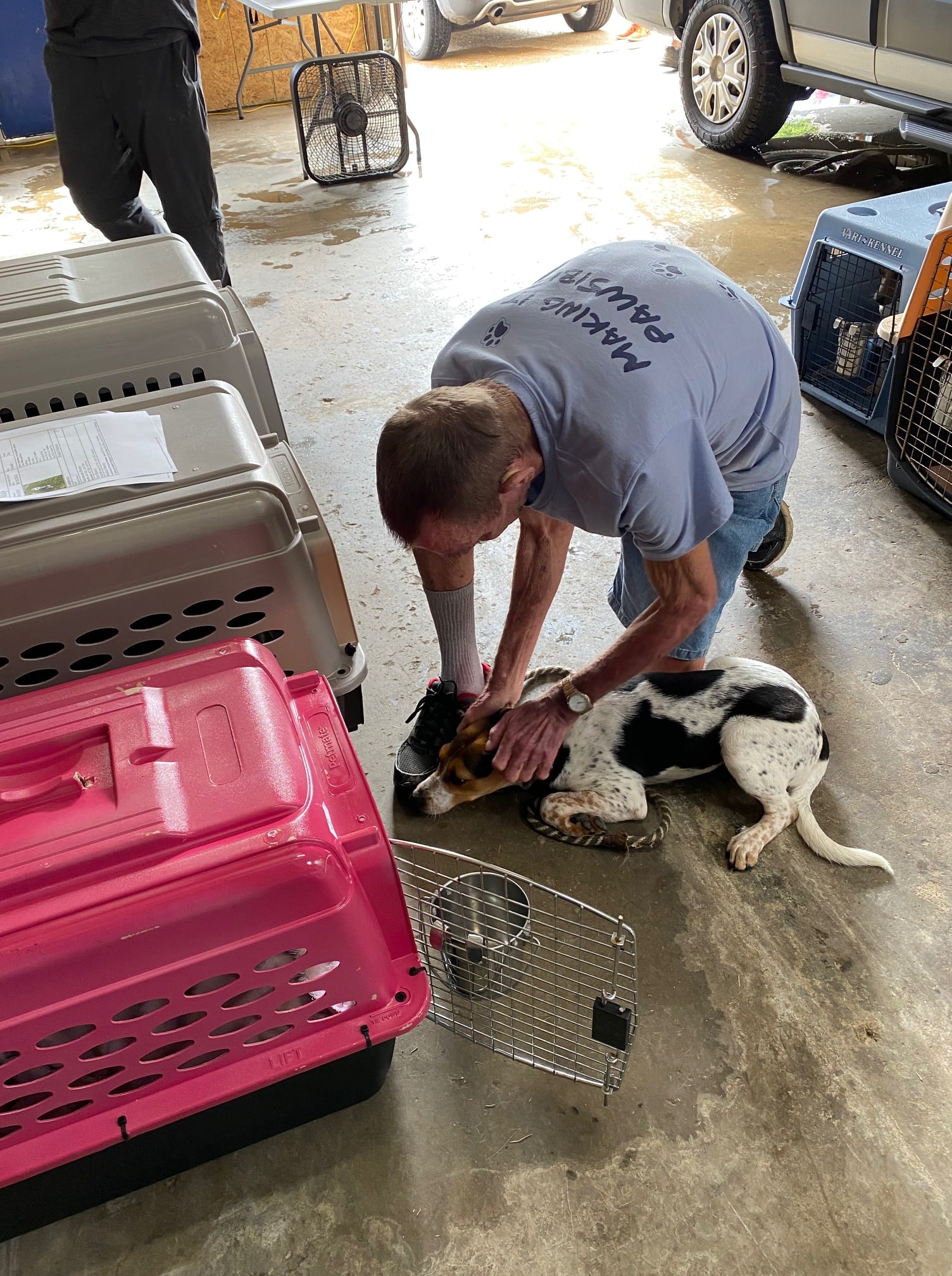
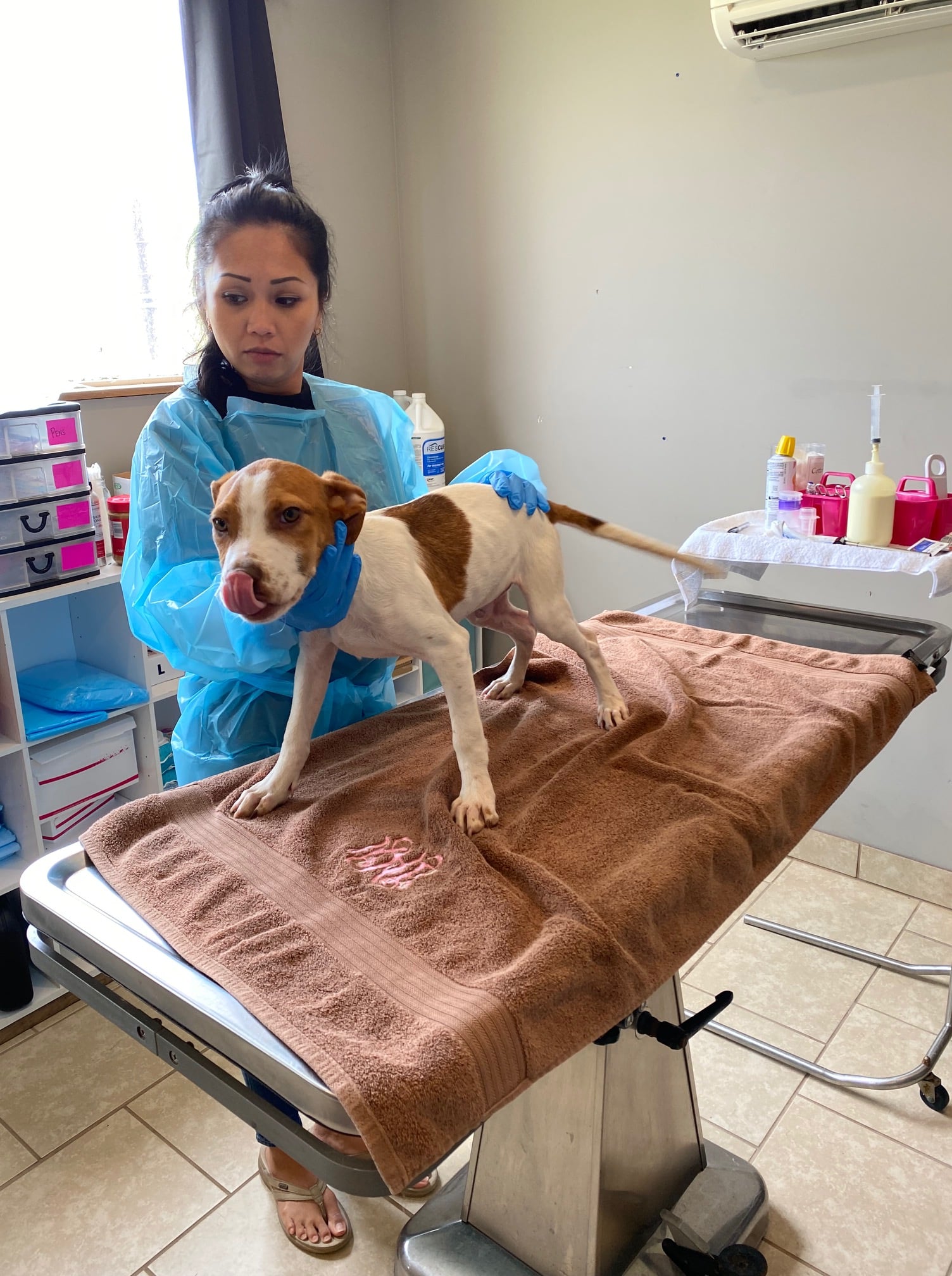
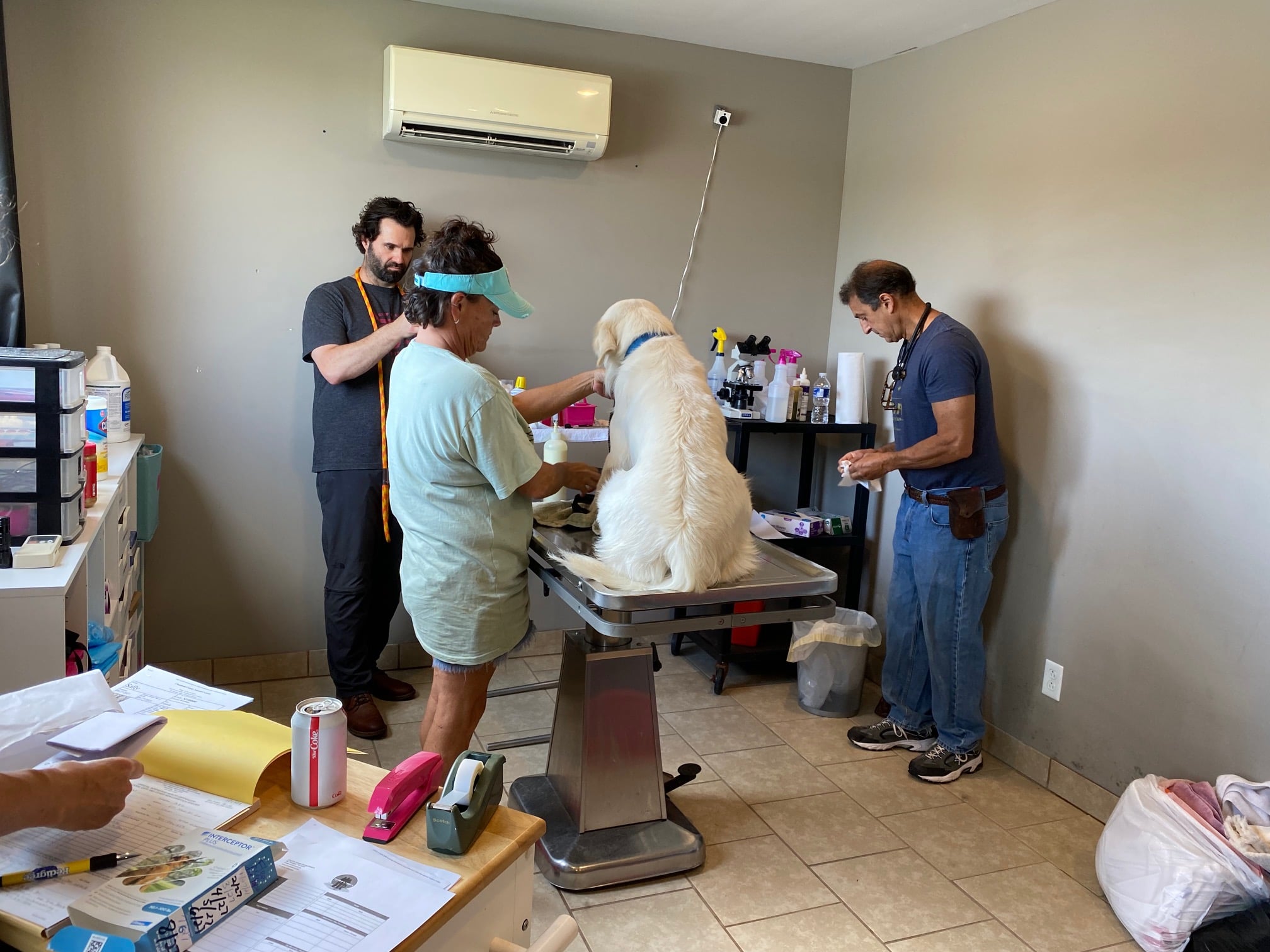
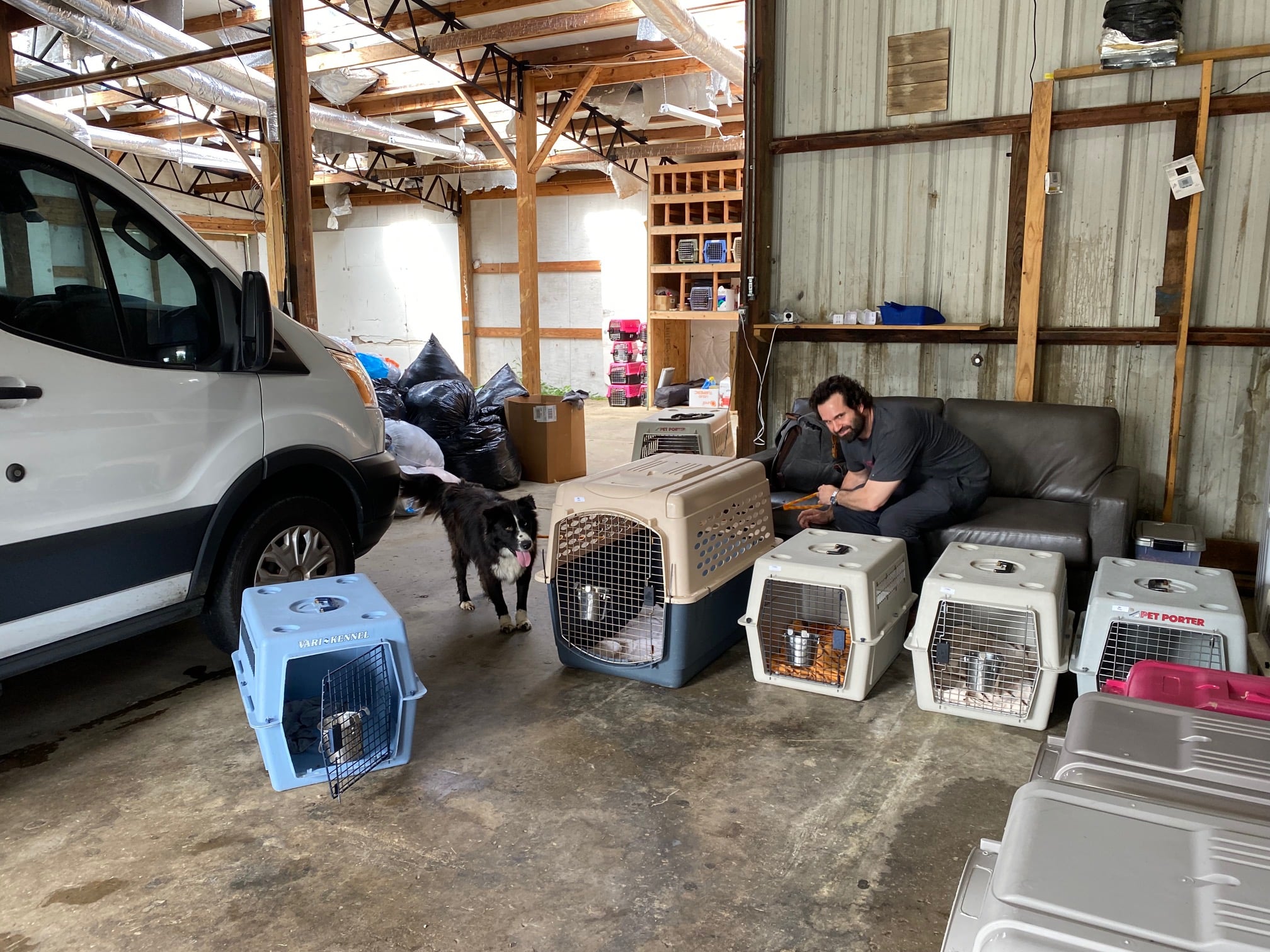
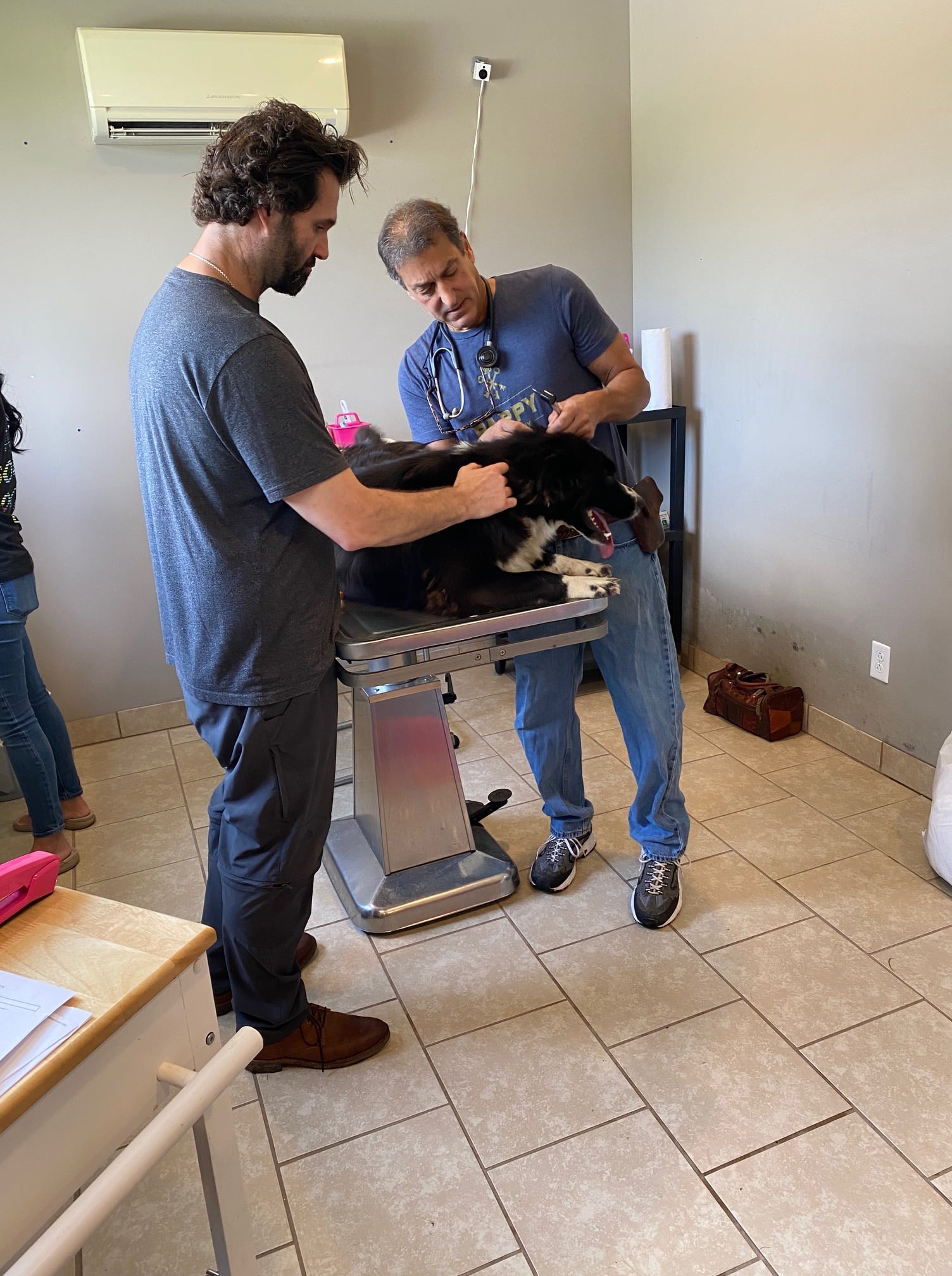
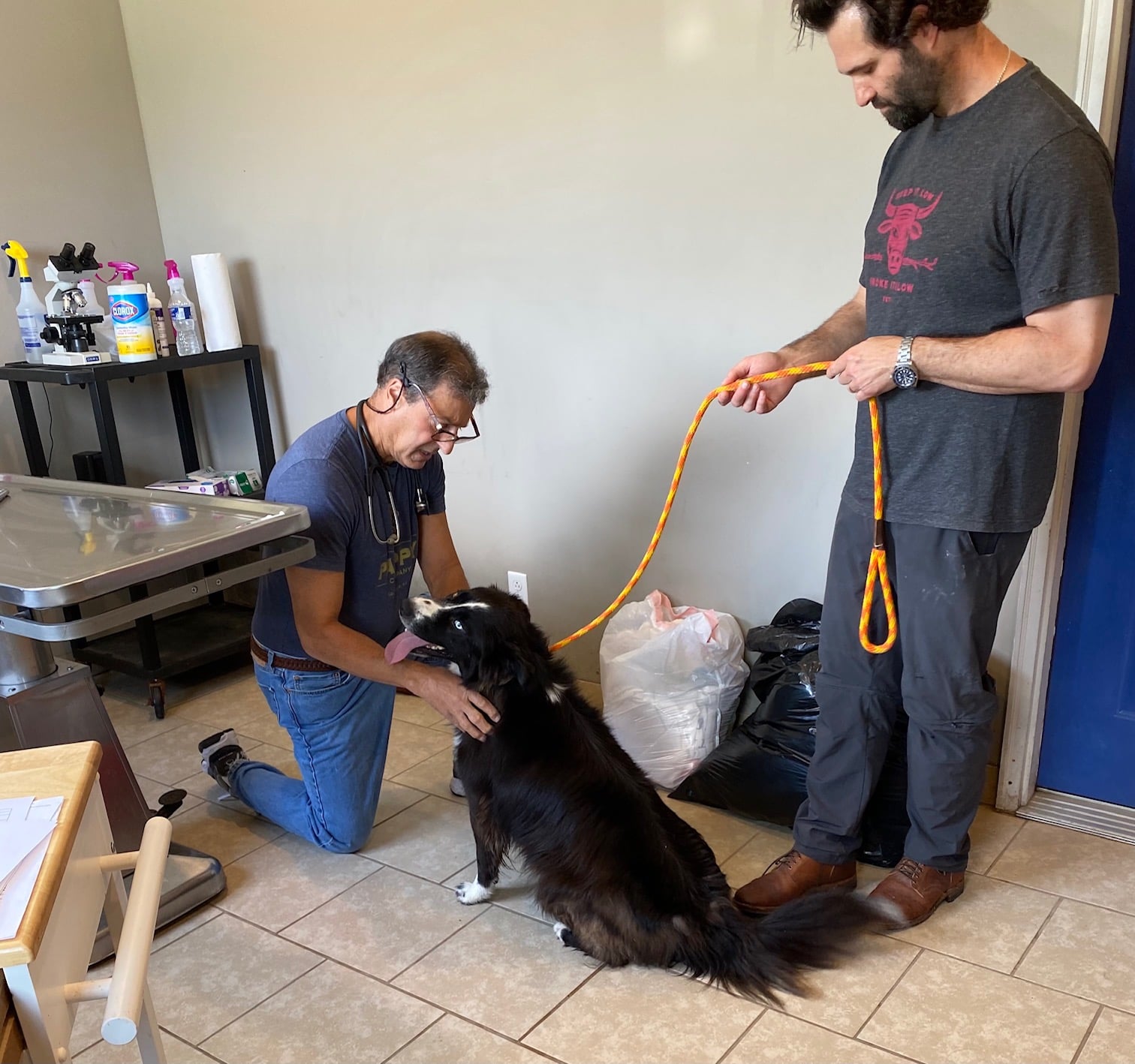
I hope to share more pictures and stories of the puppy slumber party tonight and the exodus tomorrow morning. Maybe even a few live videos. Be sure to follow Charlie’s Angels Saving Animals on Facebook to see more of their heroic work!
We have four more stops to make before we get home on Saturday. Please keep helping us get the word out. #togetherwerescue
WEDNESDAY AFTERNOON:
This was a second visit at Lebanon City Animal Shelter for me. Ian and I stopped here on our shelter tour in 2019. The shelter was much fuller then and struggling to move dogs.
This visit I got to meet Zach in person (last time we only talked by phone because he was out on a call when we visited). He’s great with the dogs and clearly cares about saving them and the quality of their care.
The building is small, older and dark, with metal walls that amplify the noise. Zach explained that it was originally meant to be temporary, and they are slated to get a new building next year. It will be in a different part of town (it’s currently on the campus of the new police department building), and will be much larger than the current facility.
Zach pulled out a few dogs for us to photograph and we talked about their situations. The shelter only takes in strays—no owner surrenders, but sometimes that line is fuzzy. Nancy photographed a few beautiful dogs—a gorgeous shepherd, a purebred Husky, a young black lab, and a chunky hound dog who was adopted from the shelter two years ago and but came back because his owner developed Alzheimer’s.
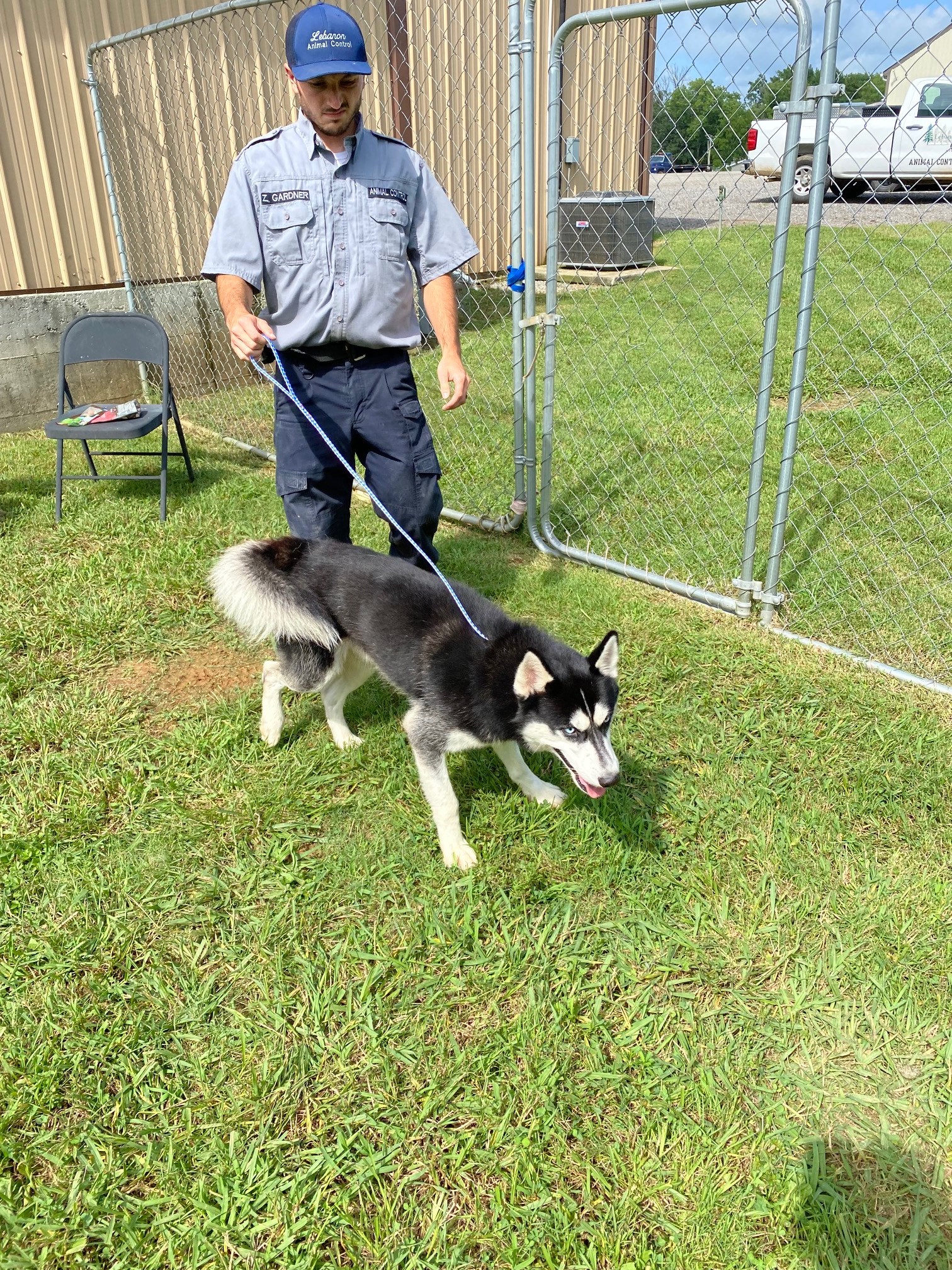
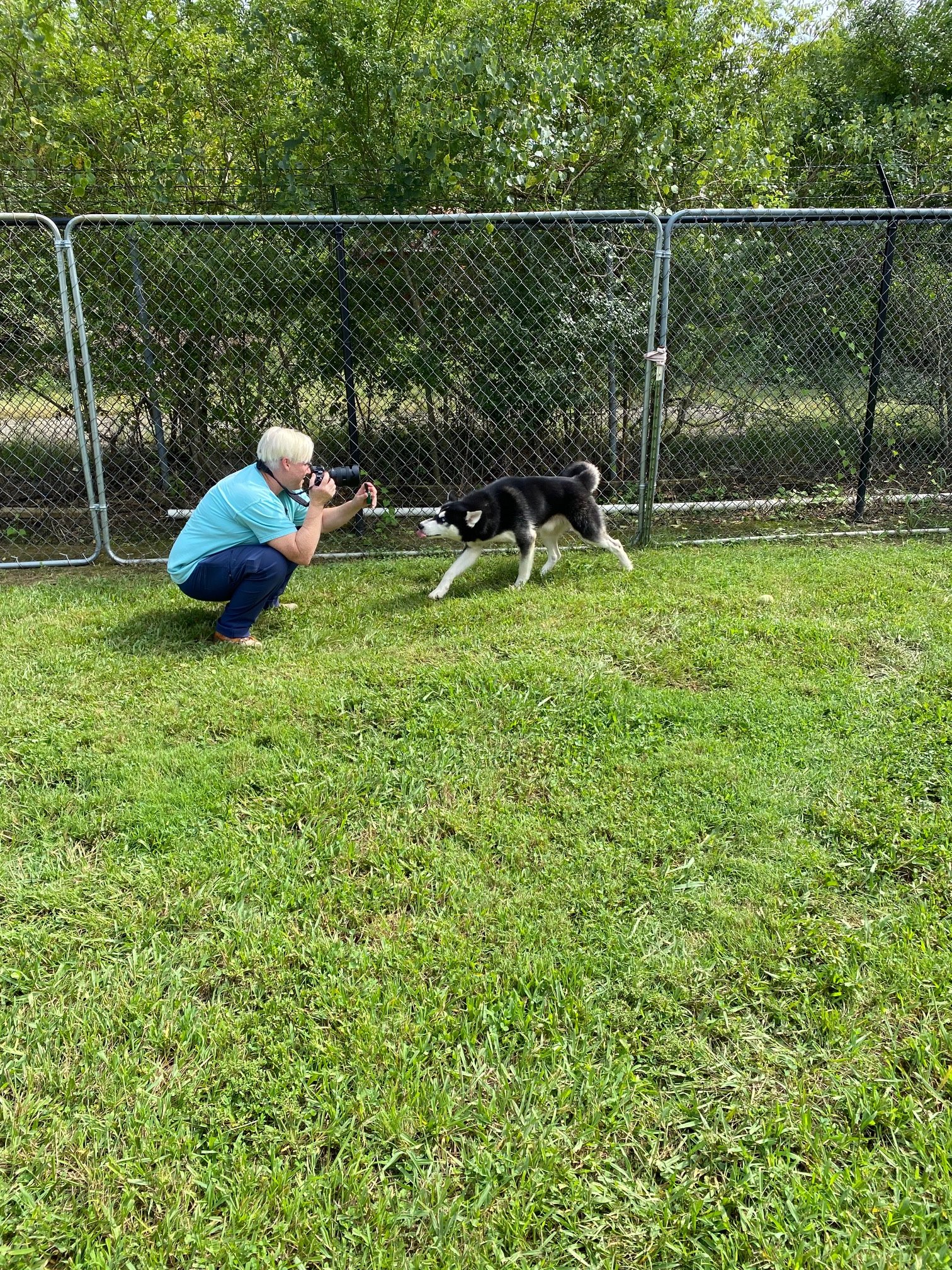
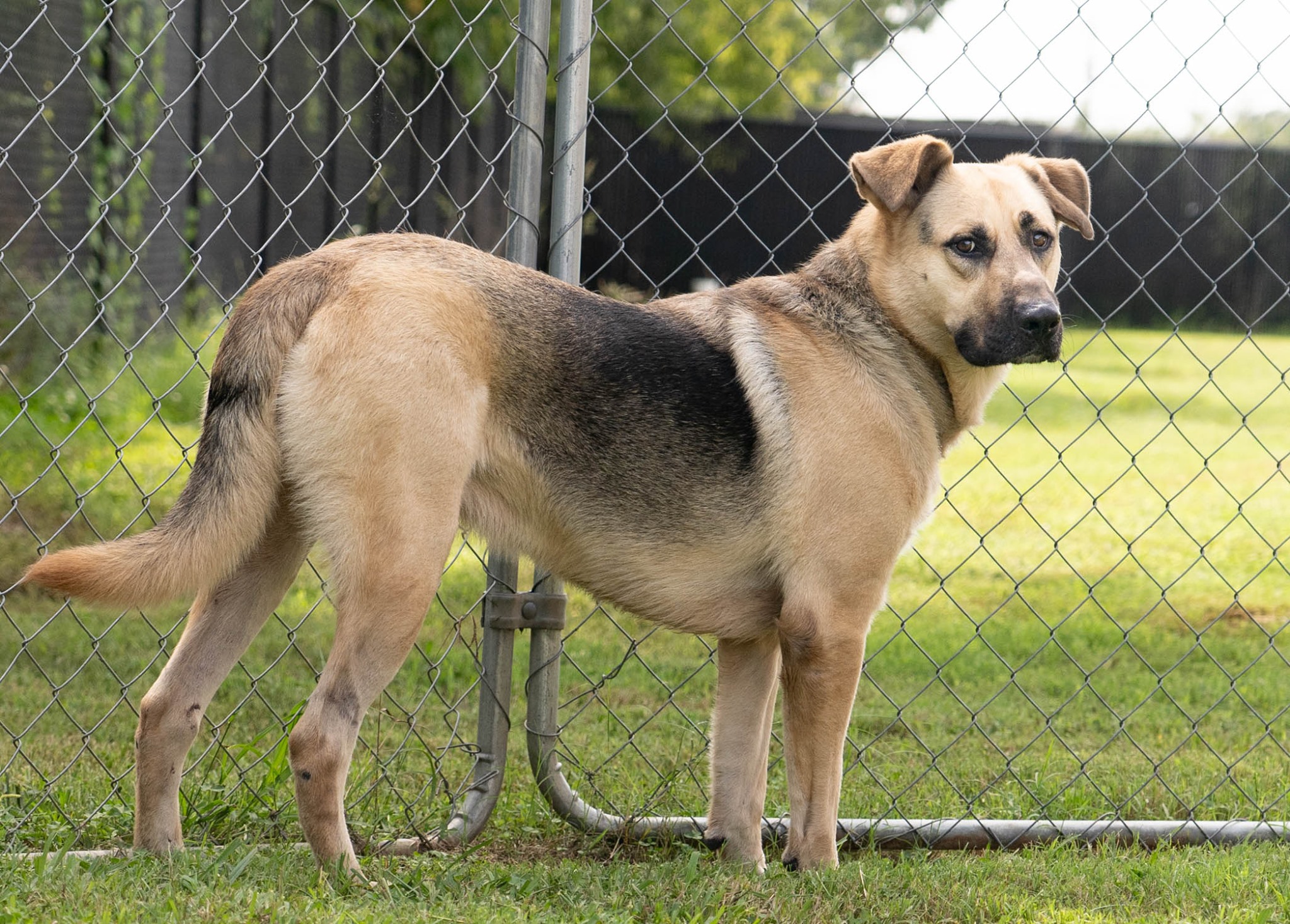
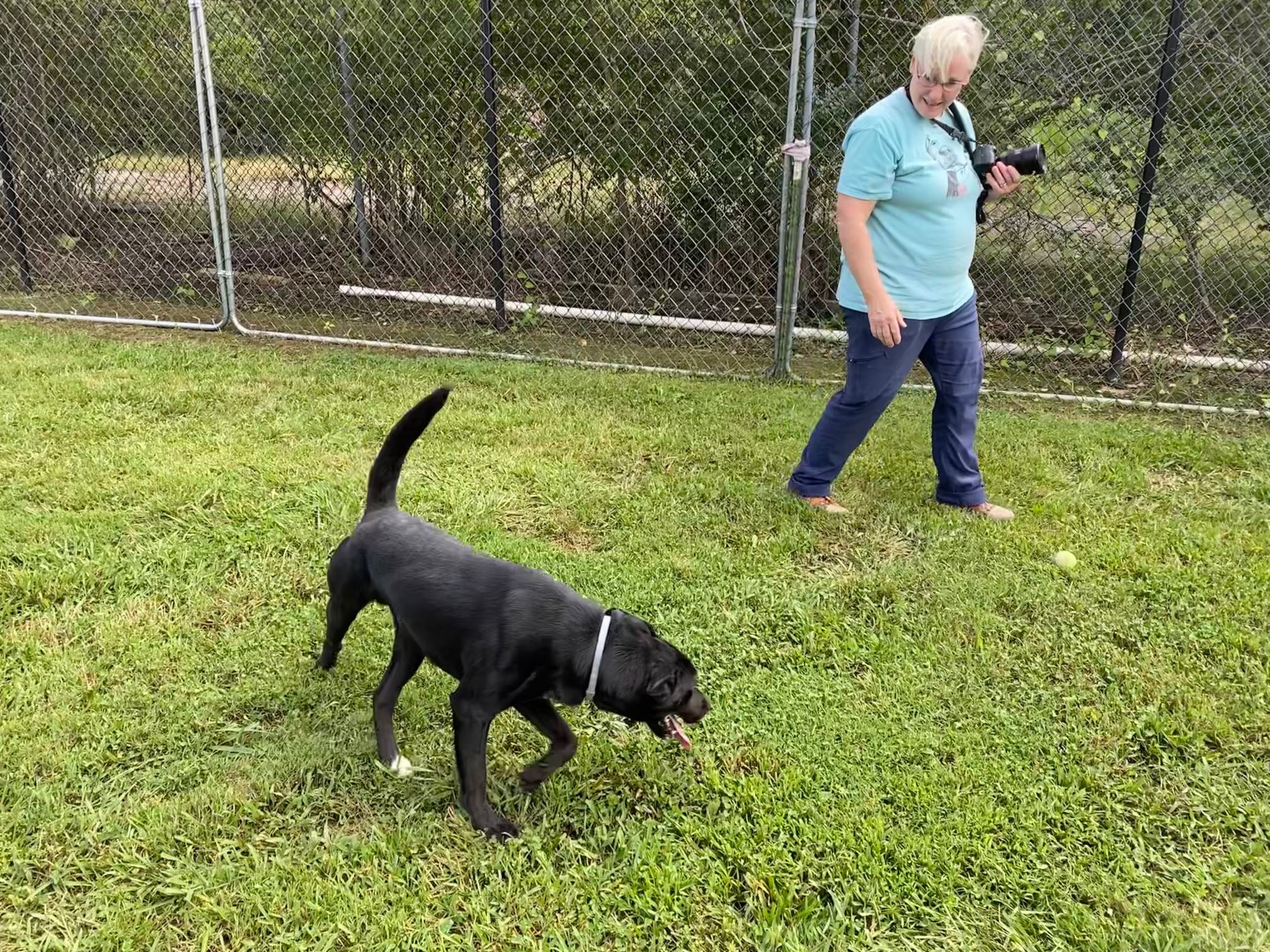
Inside there were a handful of little dogs—mostly on court hold (their owner’s are in prison). They did have a few empty kennels which was great to see. They’d been nearly emptied during the pandemic but in the last two months dogs are flooding back in. Small dogs (of any breed) are generally pulled by a local rescue, Love on a Leash, and CASA also helps them out when they can (some have gone to Operation Paws for Homes).
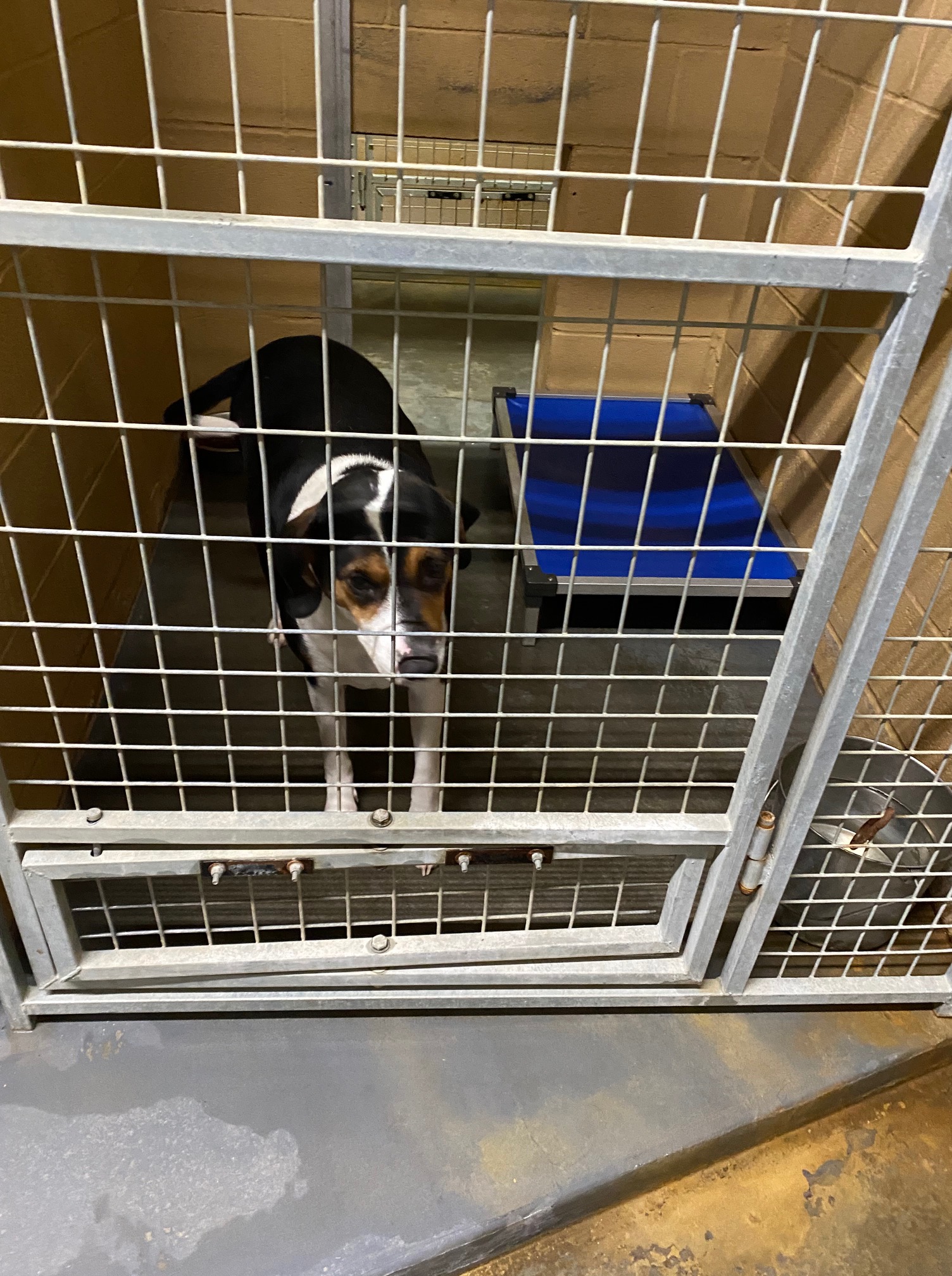
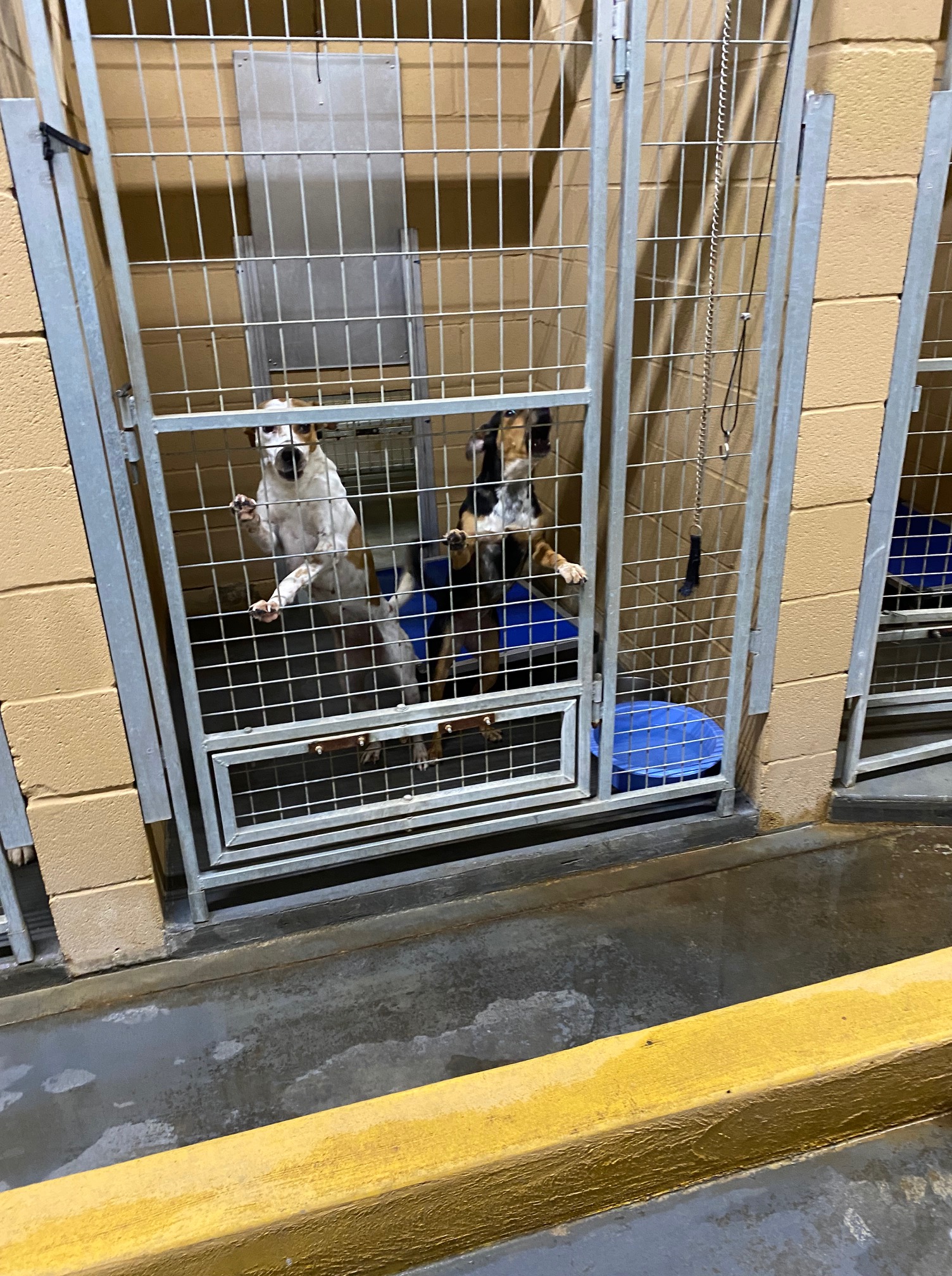
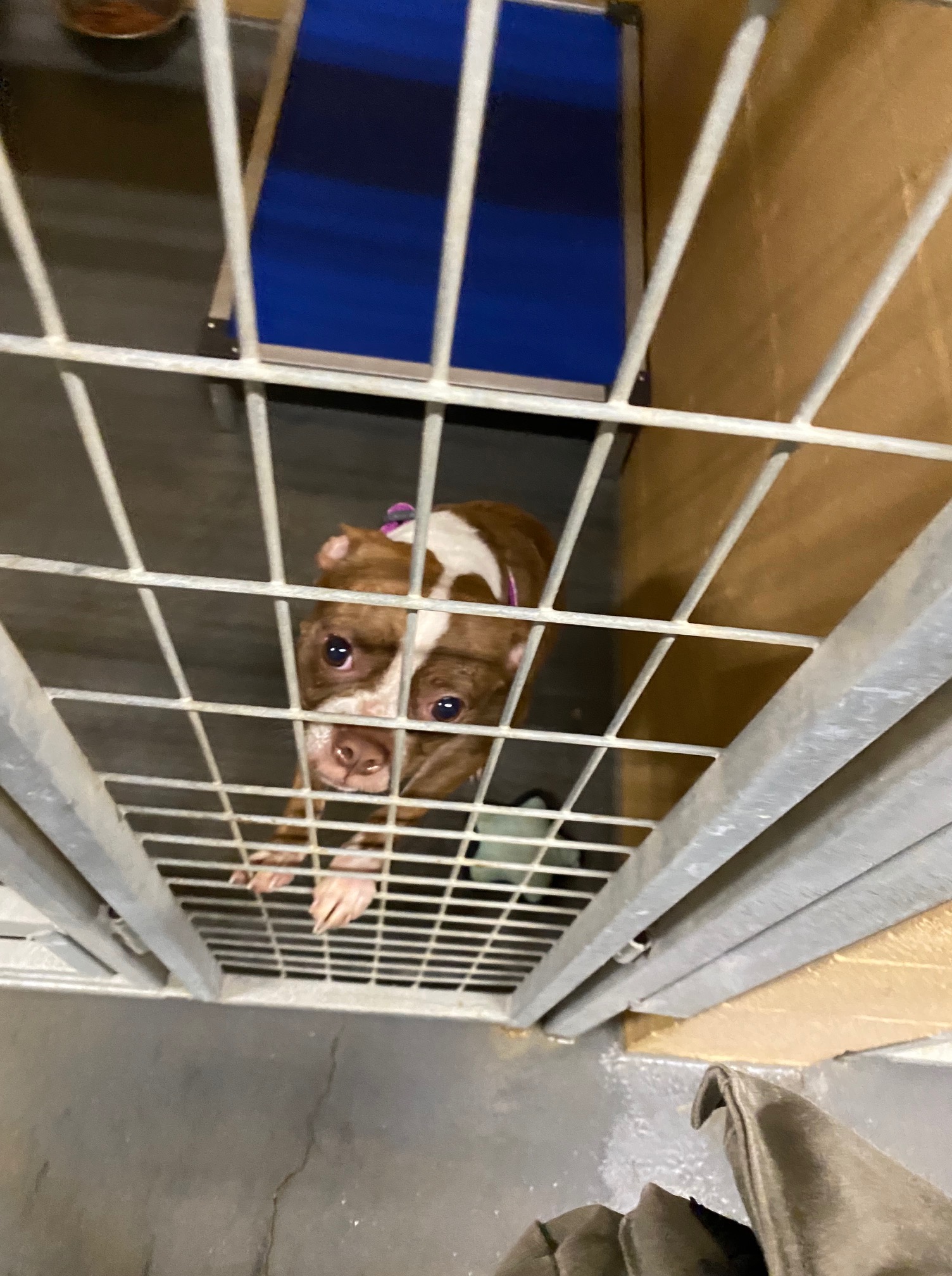
Two of the strays had microchips, but Zach said one had never been registered by the owner so there was no information. He contacted the owners of the other dog, but they didn’t want him. Zach has been frustrated that it’s pretty hard to transfer a microchip. It requires signed paperwork and the owners live several hours away and aren’t interested in dealing with it. (here’s where I roll my eyes, and think ‘People…’)
Just like the last time I was here, I’m impressed with the place, despite the tough kennel conditions. It is dark and noisy, but Zach tries to get the dogs out and they’ve hired a part-time kennel attendant who comes in at night and gets the dogs out and plays with them. It’s clear that he cares about the dogs and works hard to get them adopted out or pulled by rescue. The average stay is more like a month now (it was much longer the last time I was here).
The situations at county and city run shelters, just like private rescues and shelters, are good or bad based on the quality of their leadership. We’ve seen this again and again – it’s rarely money or building or even county policy—it’s all about the people in charge, the people caring for the dogs. Being an ACO is not an easy job, and I’d guess it doesn’t pay that much, but how a job is done is always up to the person doing that job. Lebanon city, and the dogs who land in its shelter, is lucky to have Zach as their ACO.
If you’d like to help the shelter, we will post a link to their Amazon wishlist soon.
THURSDAY:
This morning, after sleeping through the departure of Laura’s CASA morning transport (AGH!), we drove two hours south to meet up with HAWS-Helping Animals Without Shelter just outside Huntsville, Alabama in Madison County.
We met Lisa Shedd, one of the leaders of HAWS. She was waiting with an adorable little chunky chocolate-peanut butter colored pitbull named Yaeger. Yaeger wasn’t so sure about us, but we wooed him with chicken jerky treats and respectful distance. By the end of the day, he was rolling over for belly rubs and knocking my shins when I stopped petting him.
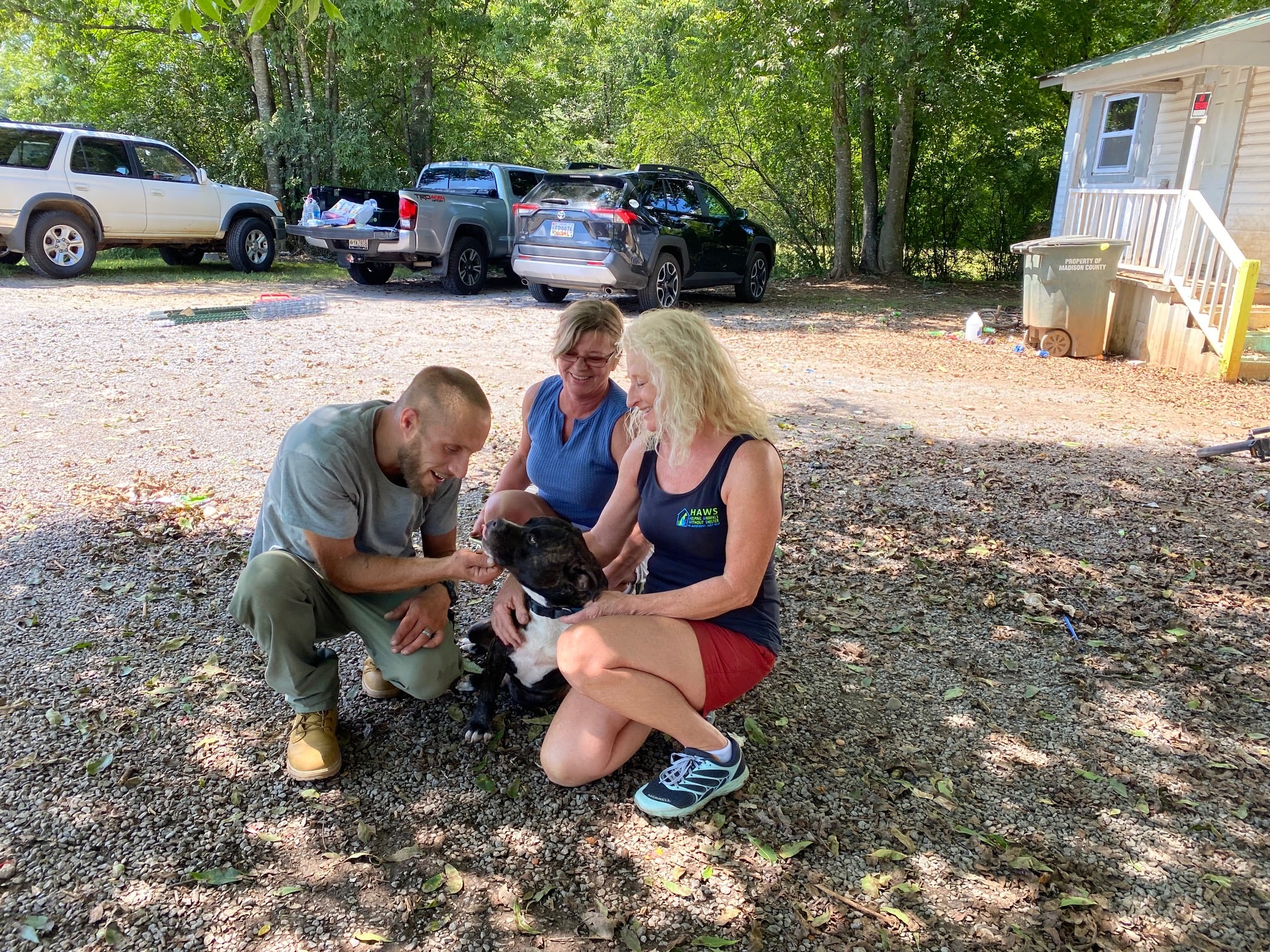
Lisa explained that today her team was going to build a safe enclosure for Yeager because he’d gotten in trouble with Animal Control for being loose. His owners had chained him, but he got loose, drawing the attention of neighbors and Animal Control who contacted Lisa and HAWS. Instead of seizing the dog and putting him in the Huntsville shelter, ACOs allow HAWS to help make it possible for dogs to stay with their people. They trust Lisa and her team to educate and offer help.
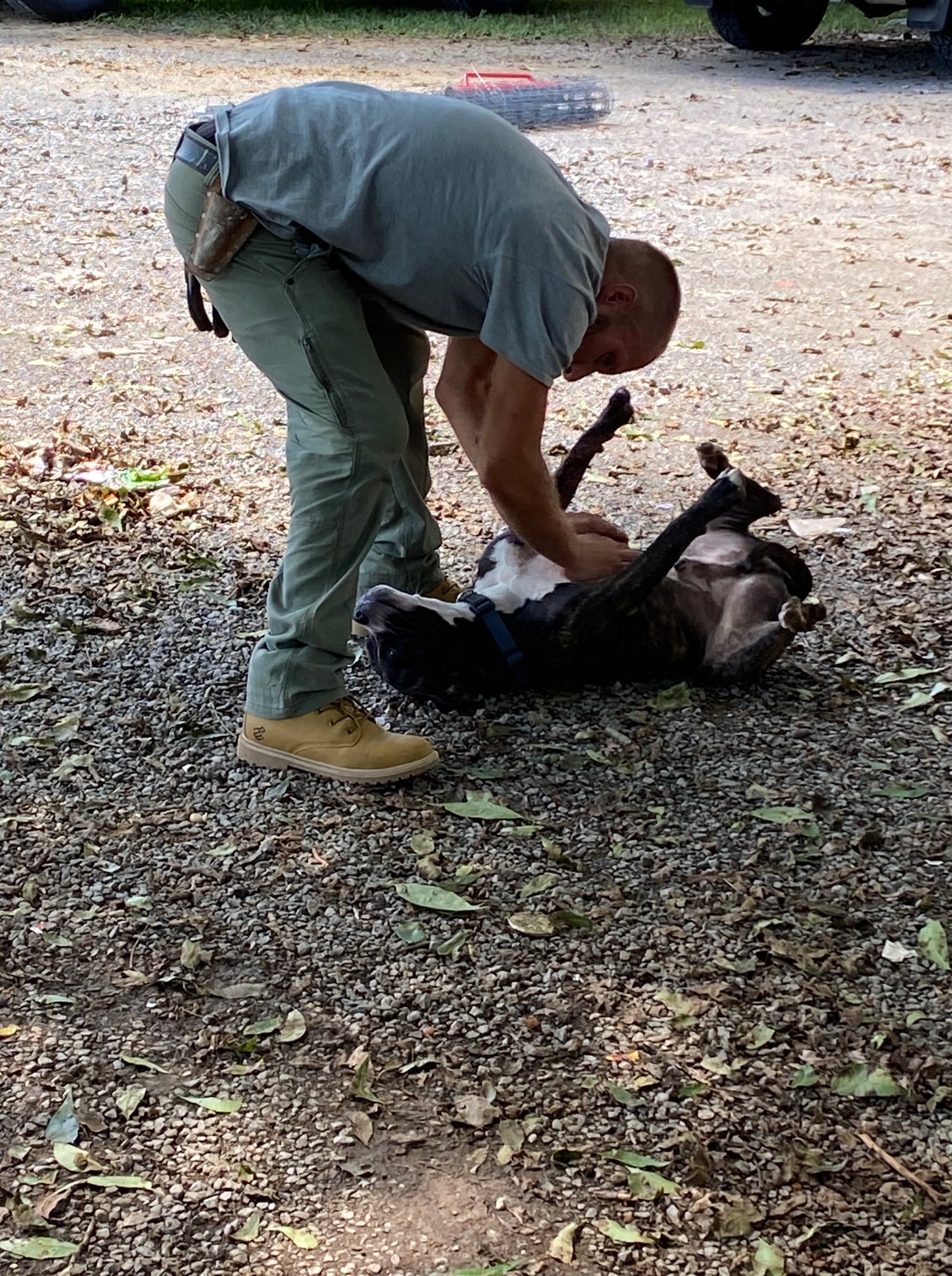
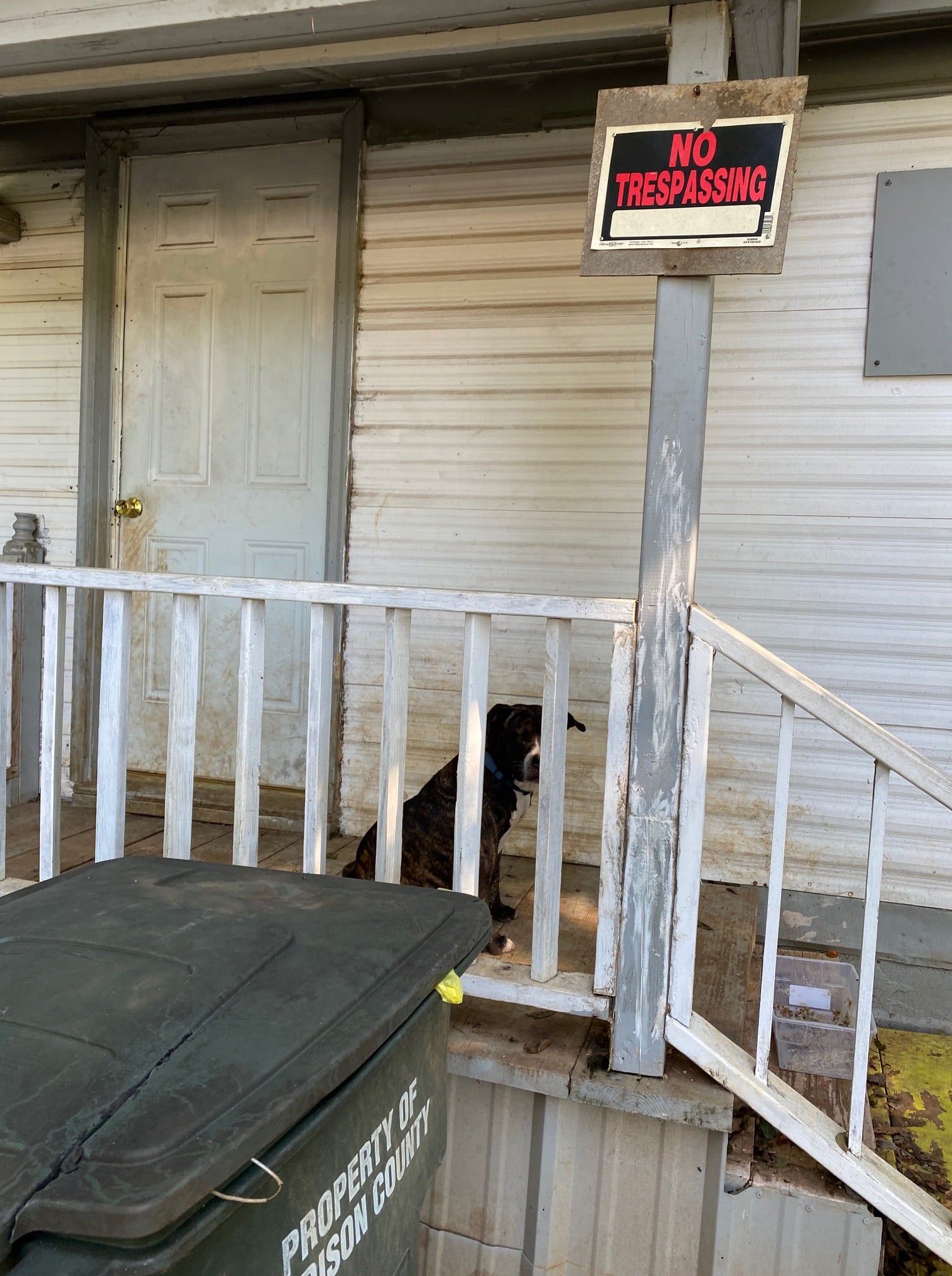
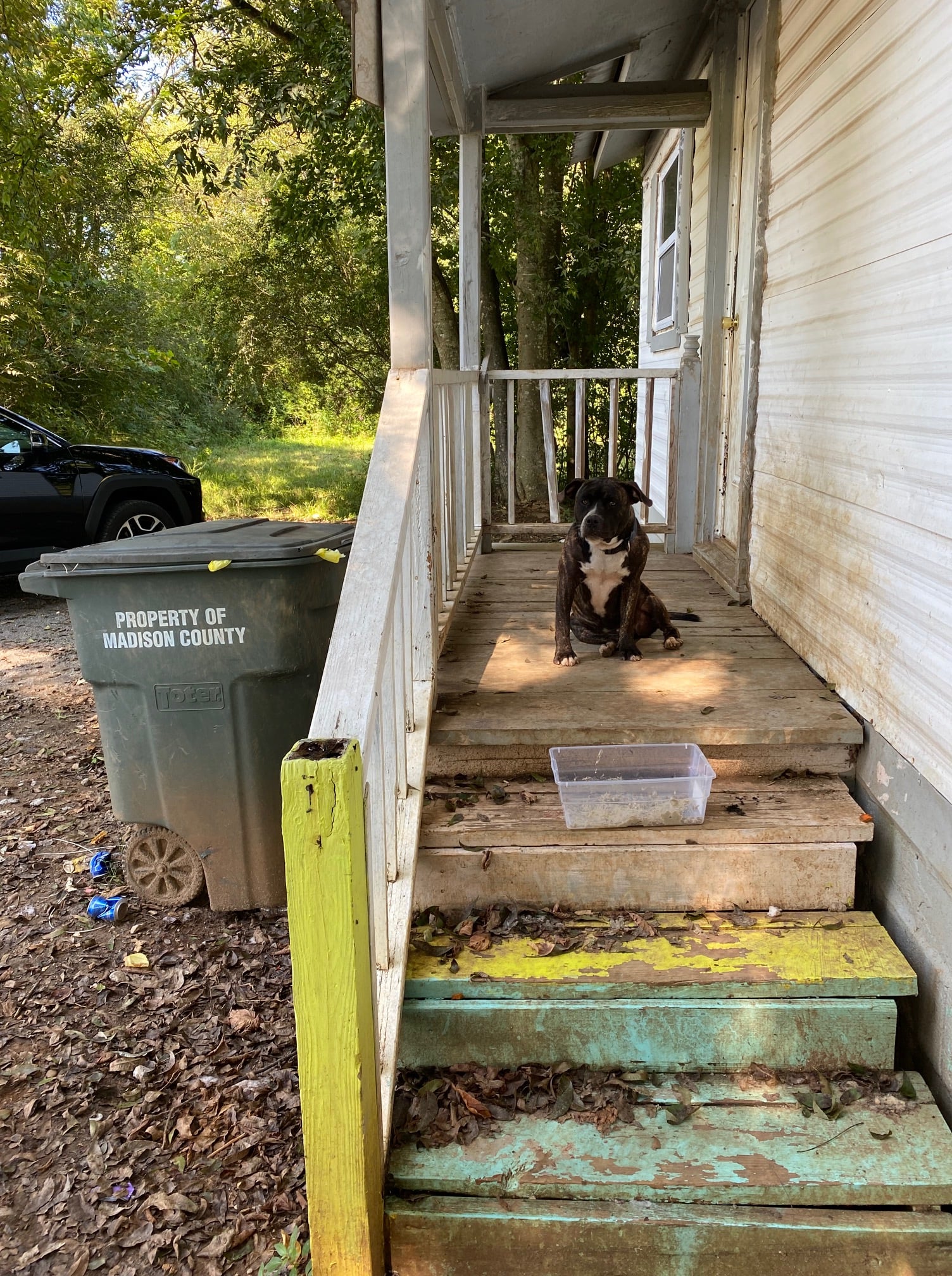
HAWS two purposes are to help animals without shelter (as their name says) and to offer a low cost spay/neuter service. Yaeger is headed for his neuter appointment next week! Meanwhile, we spent the day with Lisa and her team which today consisted of Karen (who can’t wait to retire so she can help HAWS full time) and Chris, a skilled volunteer whose tools and know-how definitely came in handy today.
Lisa is a retired CPA who works HAWS full time (for no salary). A lot of days when all her volunteers are working their ‘real’ jobs, she puts up enclosures like the 20’ x 20’ one we helped assemble today by herself.
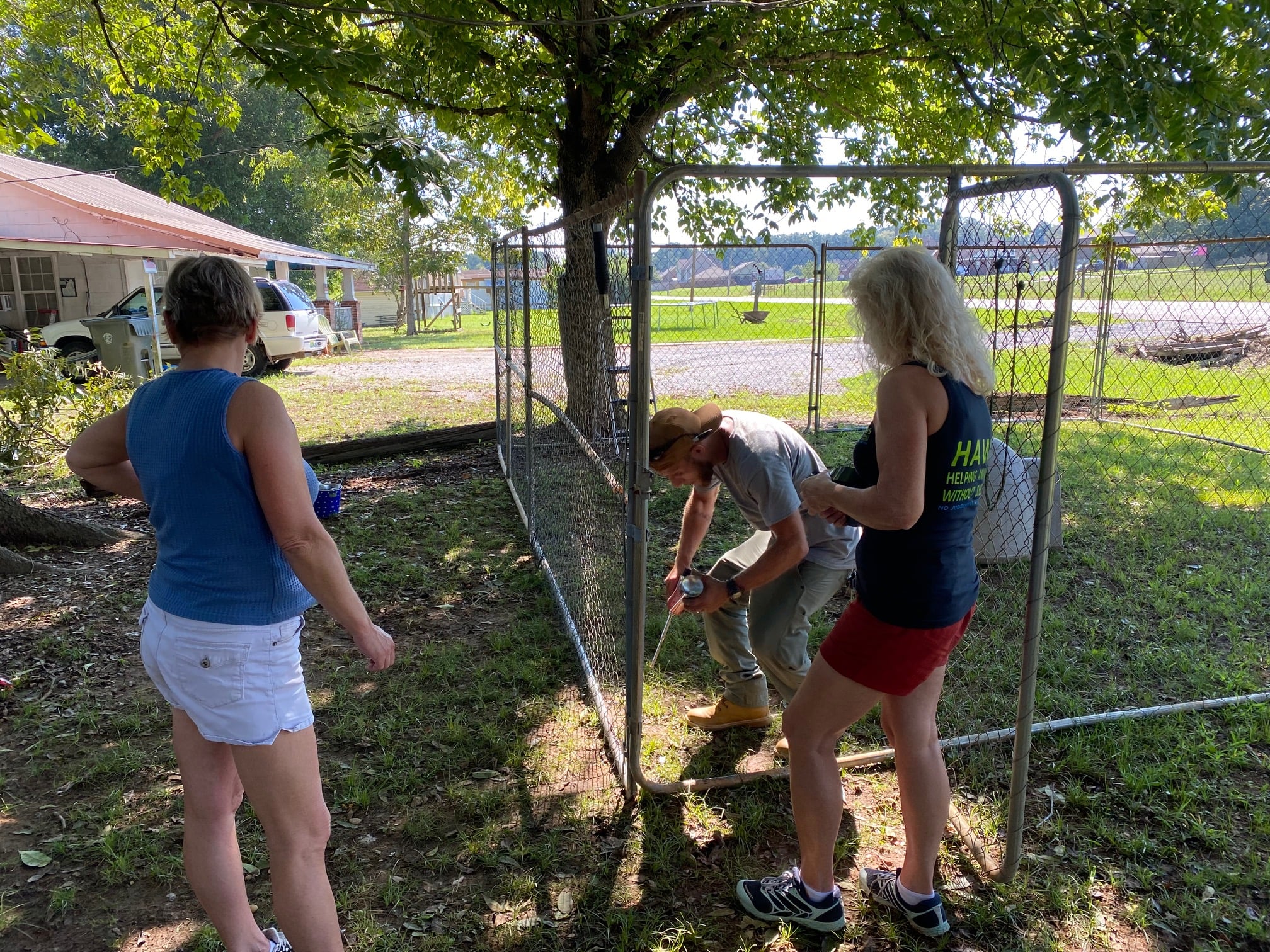
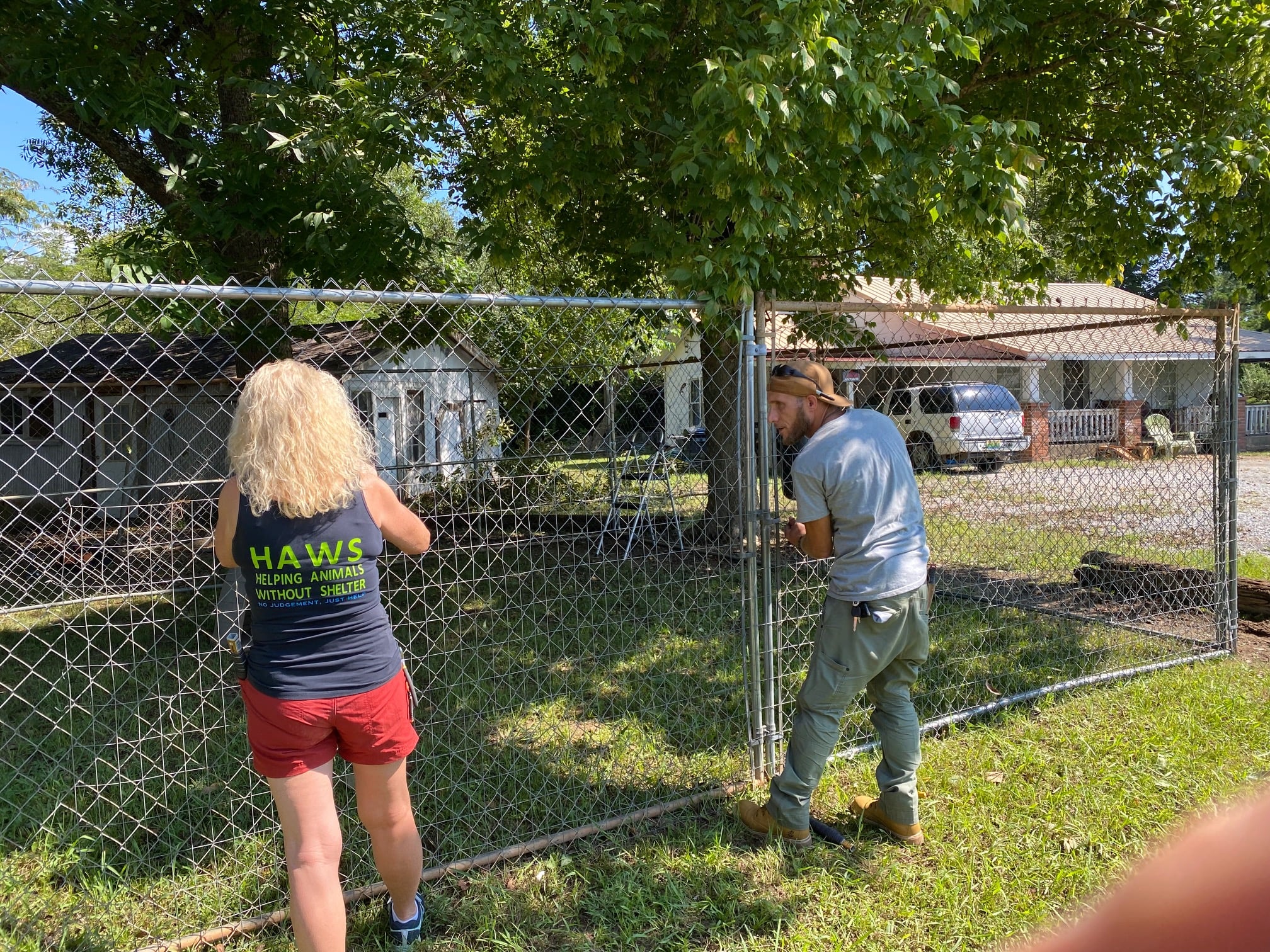
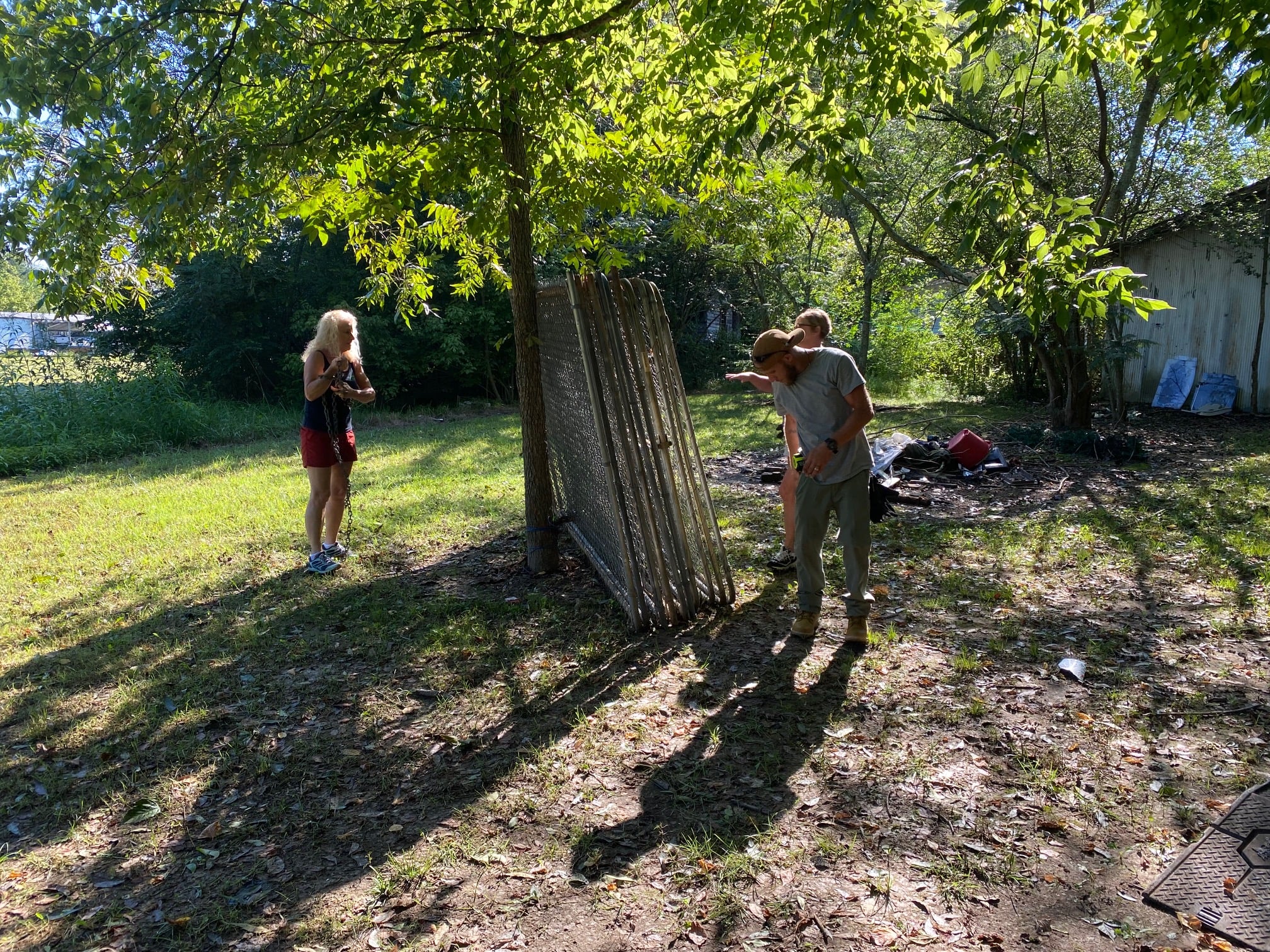
Yaeger’s new digs have shade and shelter, a water bucket (secured to the fence), a food bucket, a personal pool, and a big KONG toy. Lisa will come back later with straw for beding. The team put up large six-foot panels and then secured the pen with another wrap of dog wire around the bottom. Yaeger lives next to a busy highway, so it’s critical that he not escape.
When we showed him his new digs, he seemed pretty content and once he’s neutered, I doubt he’ll have any reason to leave. He’ll be safe and secure and it seemed like he understood that.
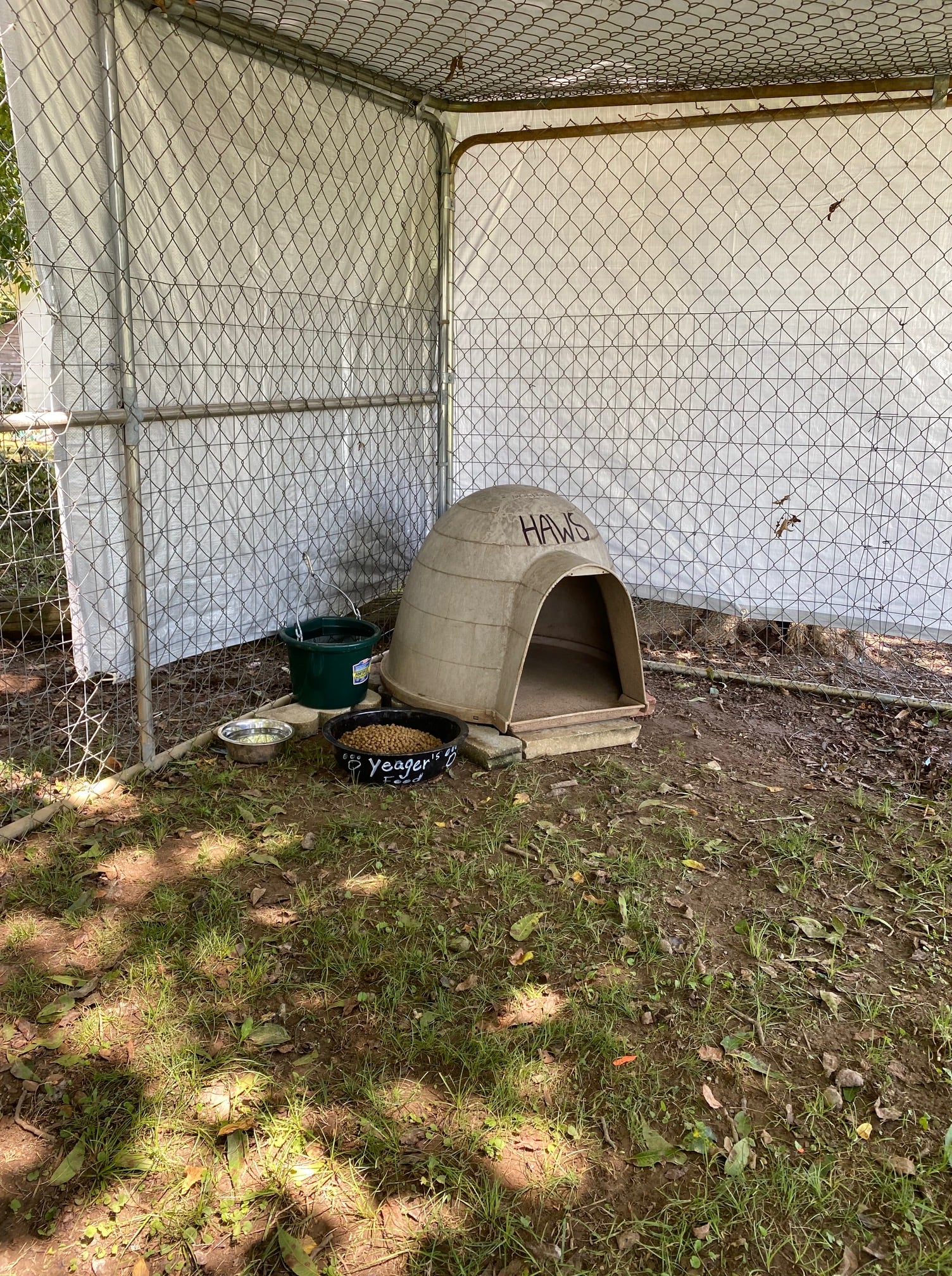
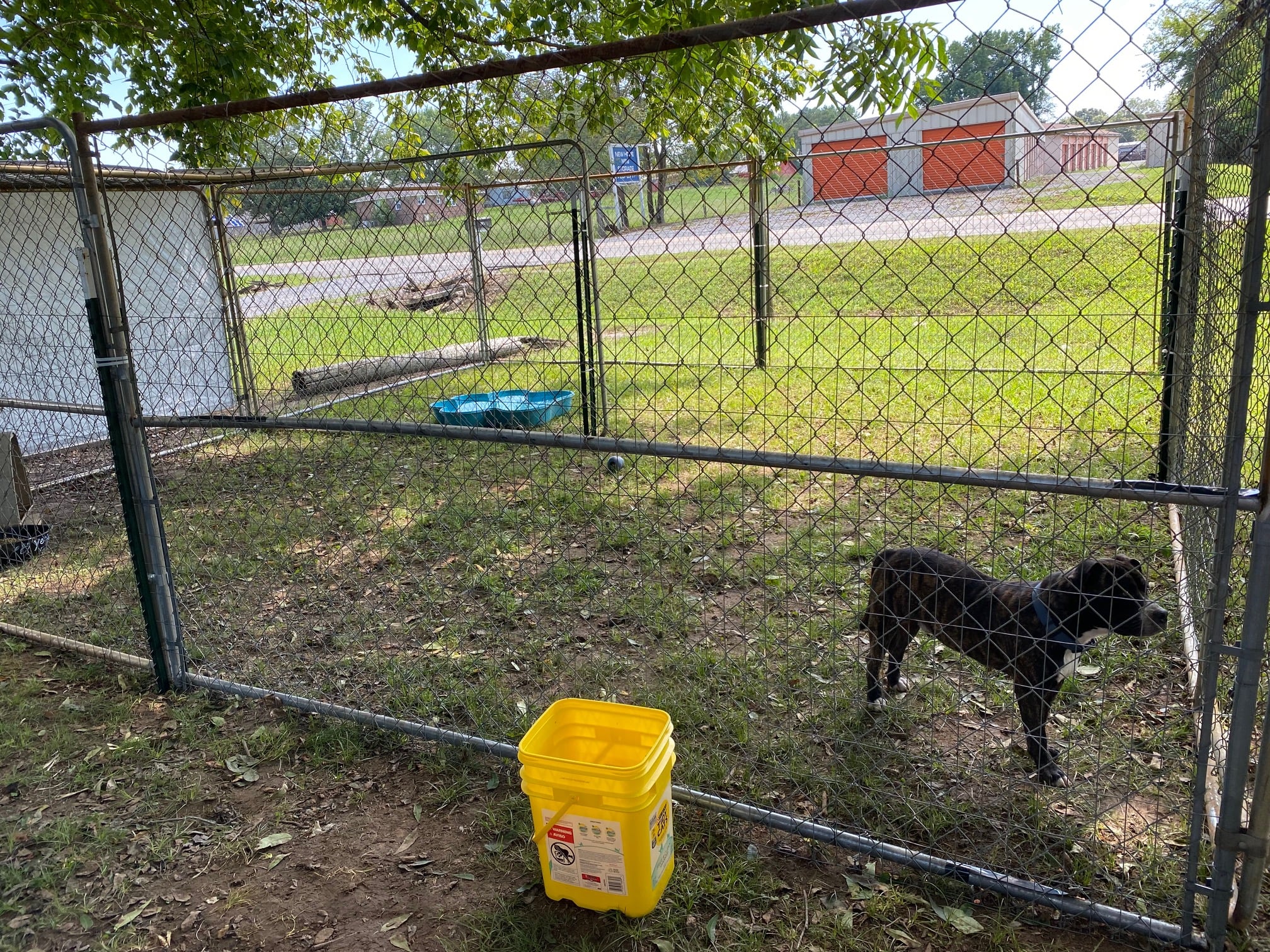
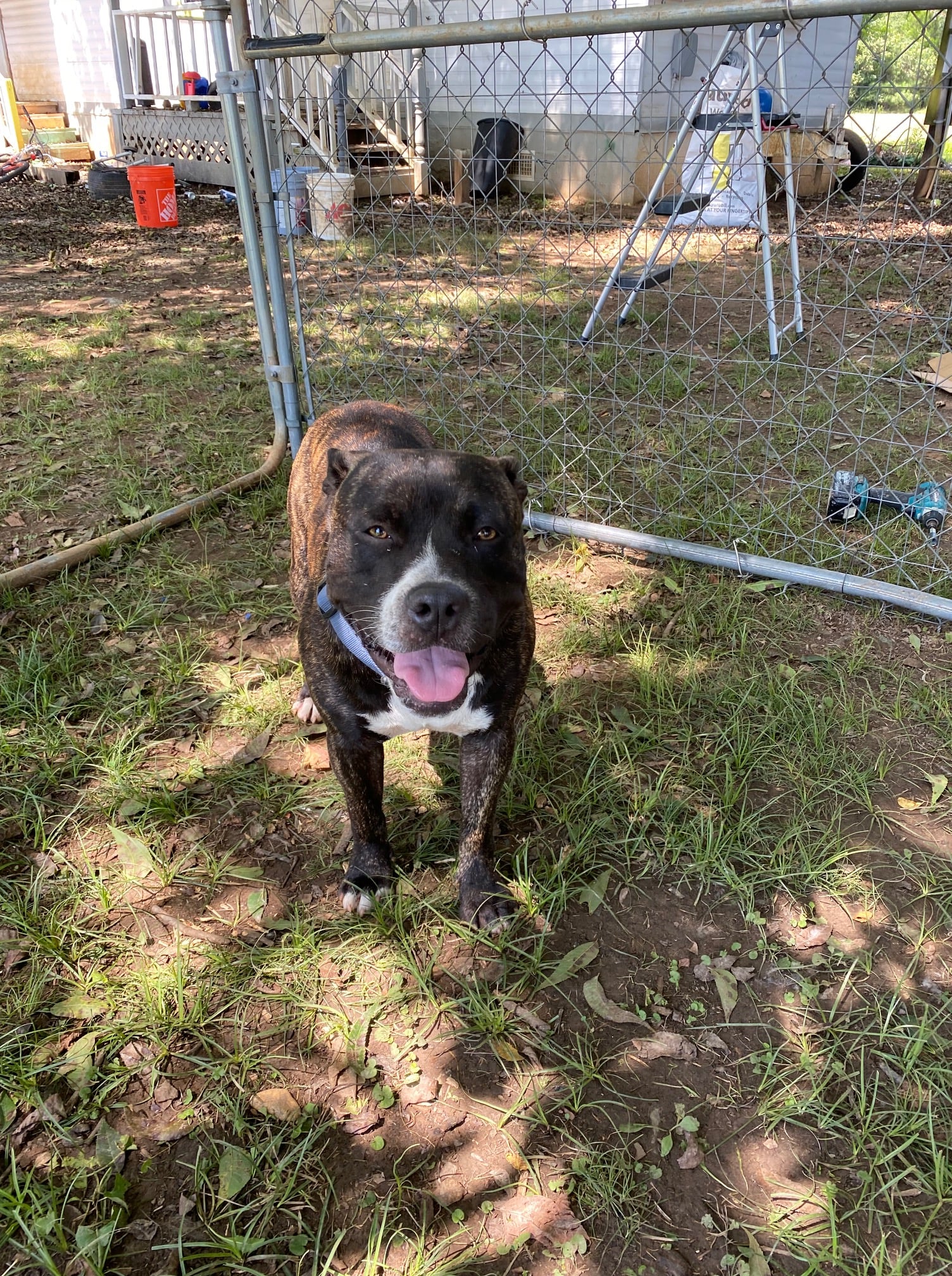
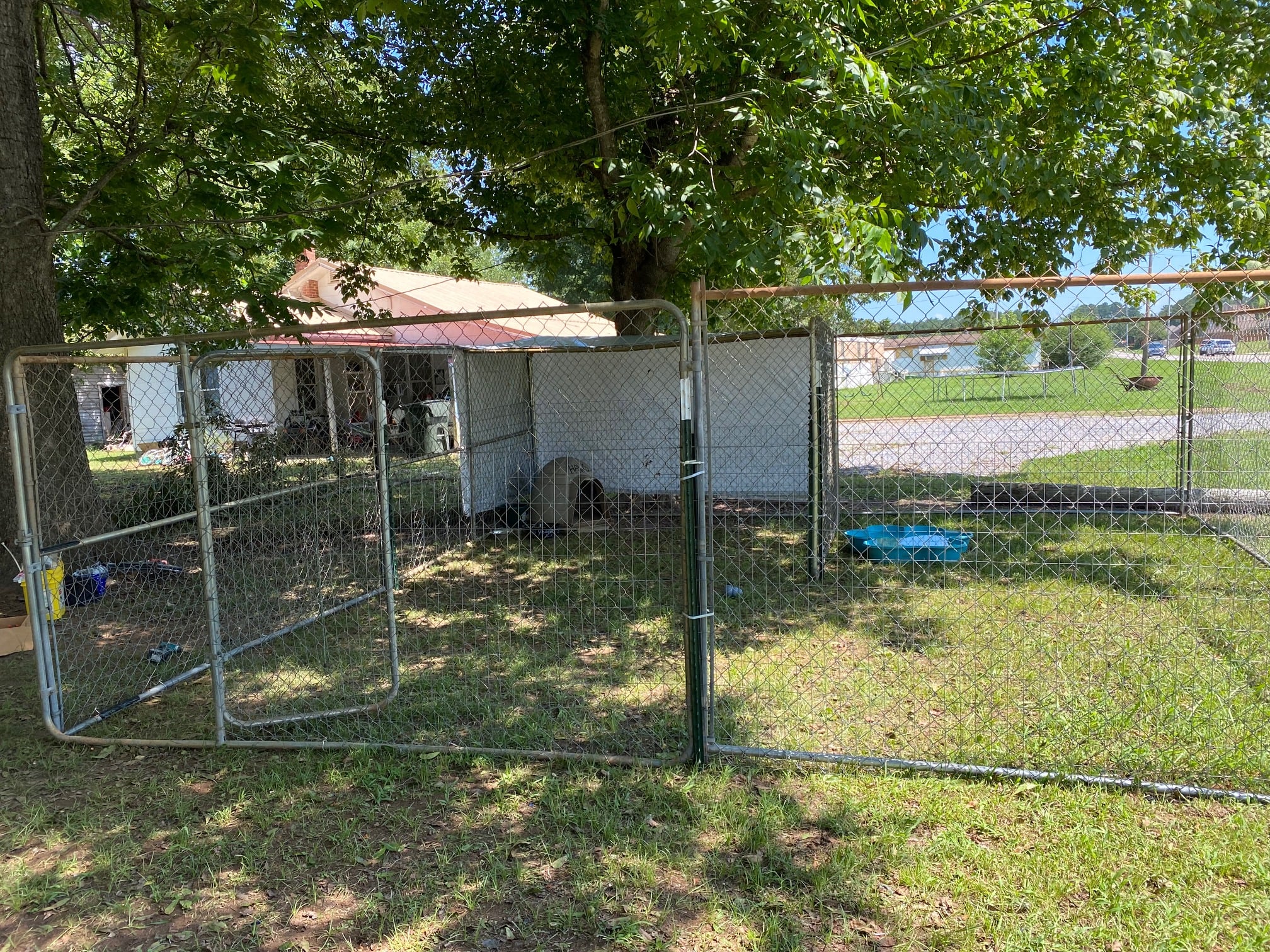
HAWS stresses education. Many of the people they help lack basic knowledge about dog care and why it’s essential to spay and neuter your pet. Lisa brings coloring and activity books for the kids so that she can educate the next generation and hopefully put herself out of a job.
They assess each situation. If the family seems able to take on the responsibility of caring for their dog, they often put the dog on a custom ‘trolley system’ she has developed herself. It’s secure and safe and gives the dog more freedom, as long as the family follows her instructions.
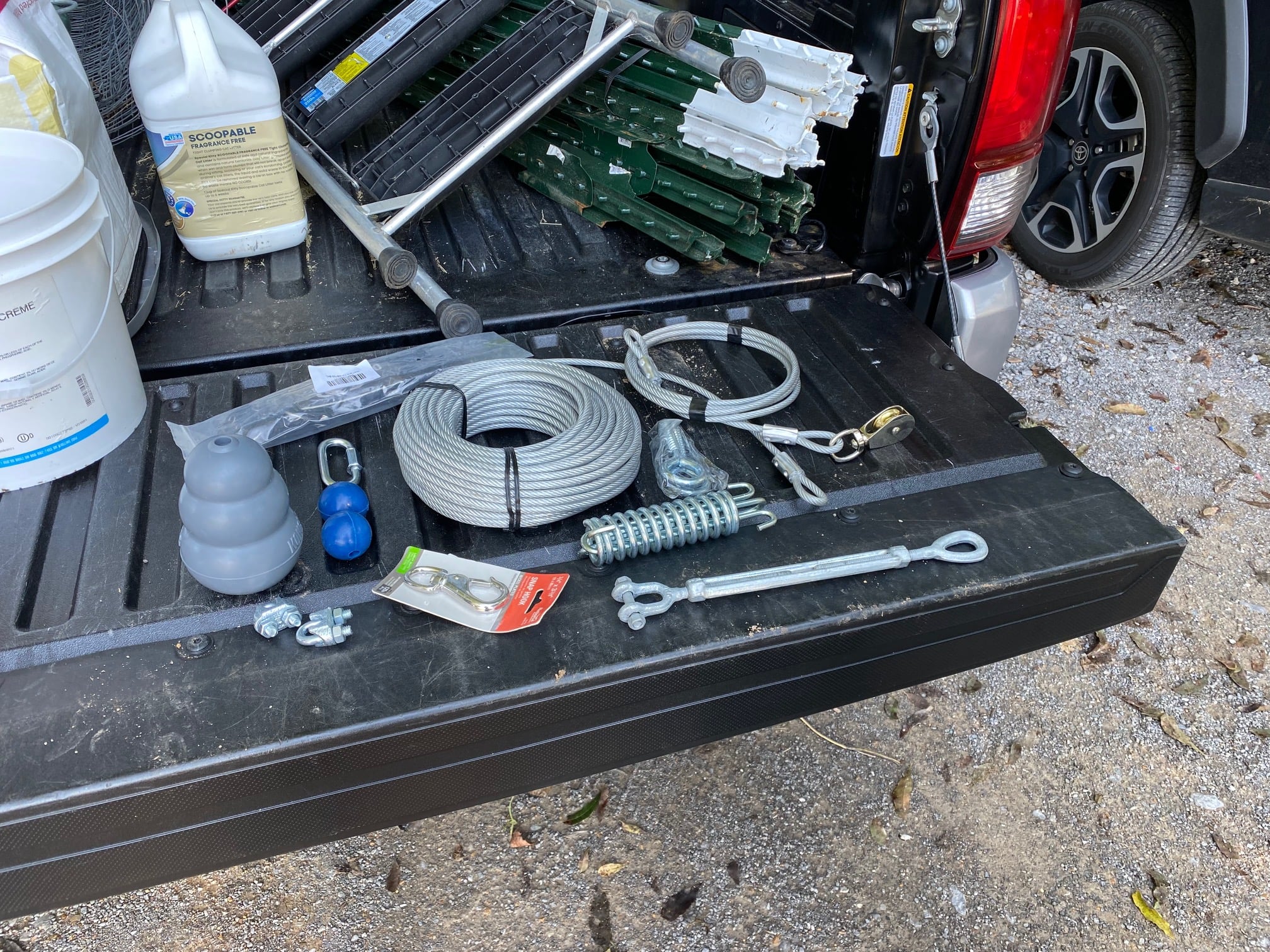
In cases like Yaeger’s, where there isn’t a consistent caregiver or a presence, the pen was the best option.
HAWS spays and neuters over 350 animals every year (since they began in 2017). They do regular welfare checks on about 75 dogs they’ve provided with their services, and help about 450 dogs each year. They locate dogs in need often by word of mouth or Animal Control. The back of their shirts says, “No judgment, just help,” and that’s exactly what they offer every day.
HAWS is an 501c3 Nonprofit and they operate solely on donations. One trolley system costs about $100 and a dog house costs as much as $150. Every penny goes to help dogs without shelters and to pay for spay/neuter and other medical expenses. They scour Facebook and Yard Sales to buy fence panels and dog houses, and the hardware they need to build enclosures. These people know how to stretch a buck. There is no paid staff. They operate on huge hearts and a passion to help animals in need.
Tomorrow is our last day and we’ll be heading back to Kentucky to the FIX Foundation and Simpson County Animal Shelter before dashing east to visit puppies in a foster-based rescue. One last full day before we get back to Woodstock on Saturday afternoon. As soon as I get some decent WiFi, I’ll post a time-lapse of our day building a palace for Yaeger.
https://fb.watch/7XauC1UvxU/
You can find more information at https://www.hawshelp.com/.
FRIDAY MORNING:
We were up and out early this morning and headed back for another day in Kentucky. In Franklin, we visited The Fix Foundation and the Simpson County KY Animal Shelter. Both are run by a remarkable woman whose vision and smart policies are truly ‘fixing’ things.
Ruth started the Fix Foundation after relocating to the area from Las Vegas. She says she wasn’t ever into animal rescue before coming here, but when she saw the state of the shelter and the number of animals dying, she had to step in. At the time, the county shelter was killing 98% of the animals they took in. After doing her research, she knew that low cost spay and neuter were the key.
She raised the money to build the Fix Foundation Clinic by making and selling birdhouses, putting her own money into it, and applying for grants. Fast forward 17 years and the clinic now spays and neuters three thousand animals every year. They offer their surgeries (and shot clinics) at low cost to the community and rescues, plus fix all the shelter animals that are housed next door at the Simpson County Animal Shelter.
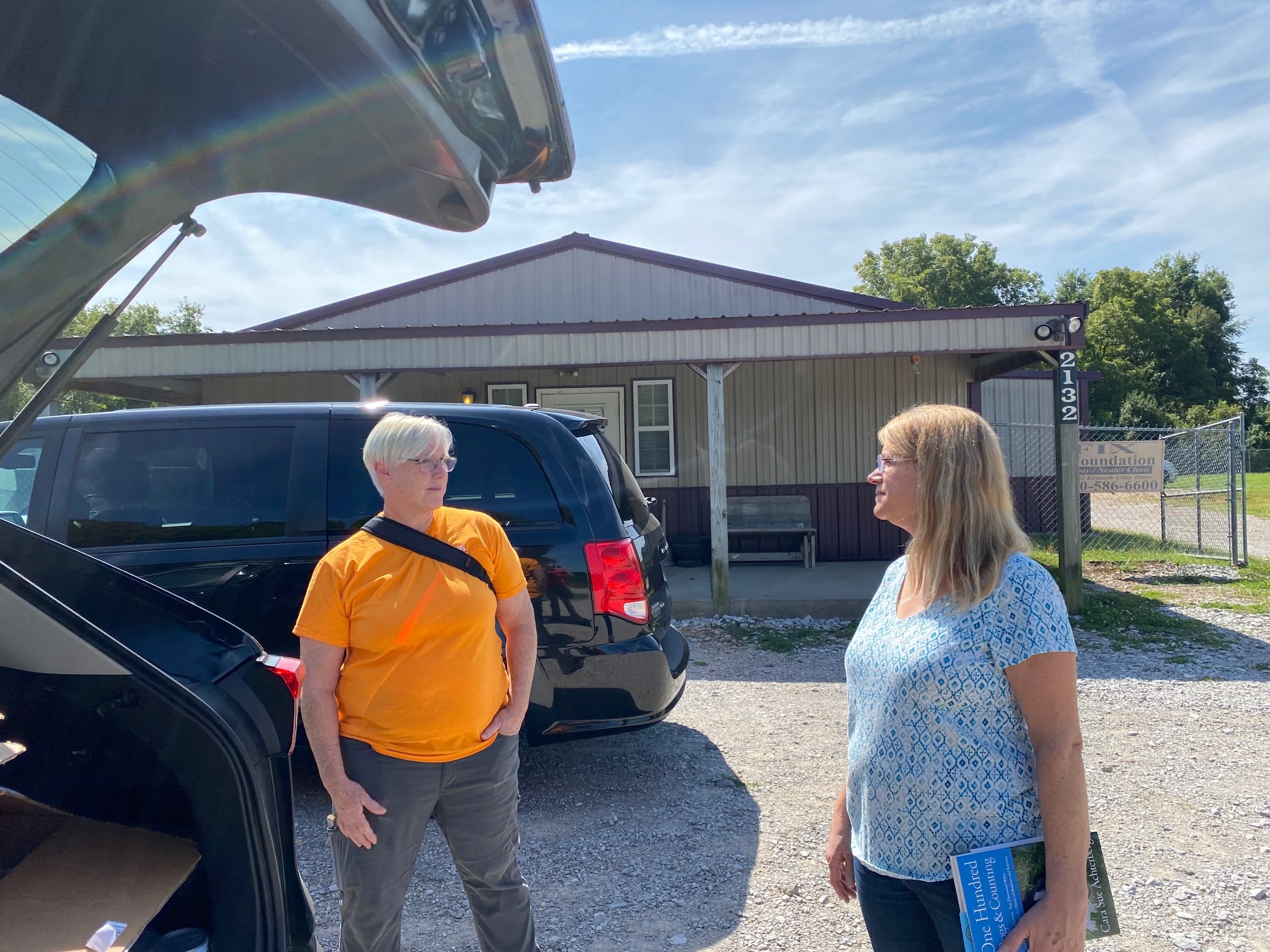
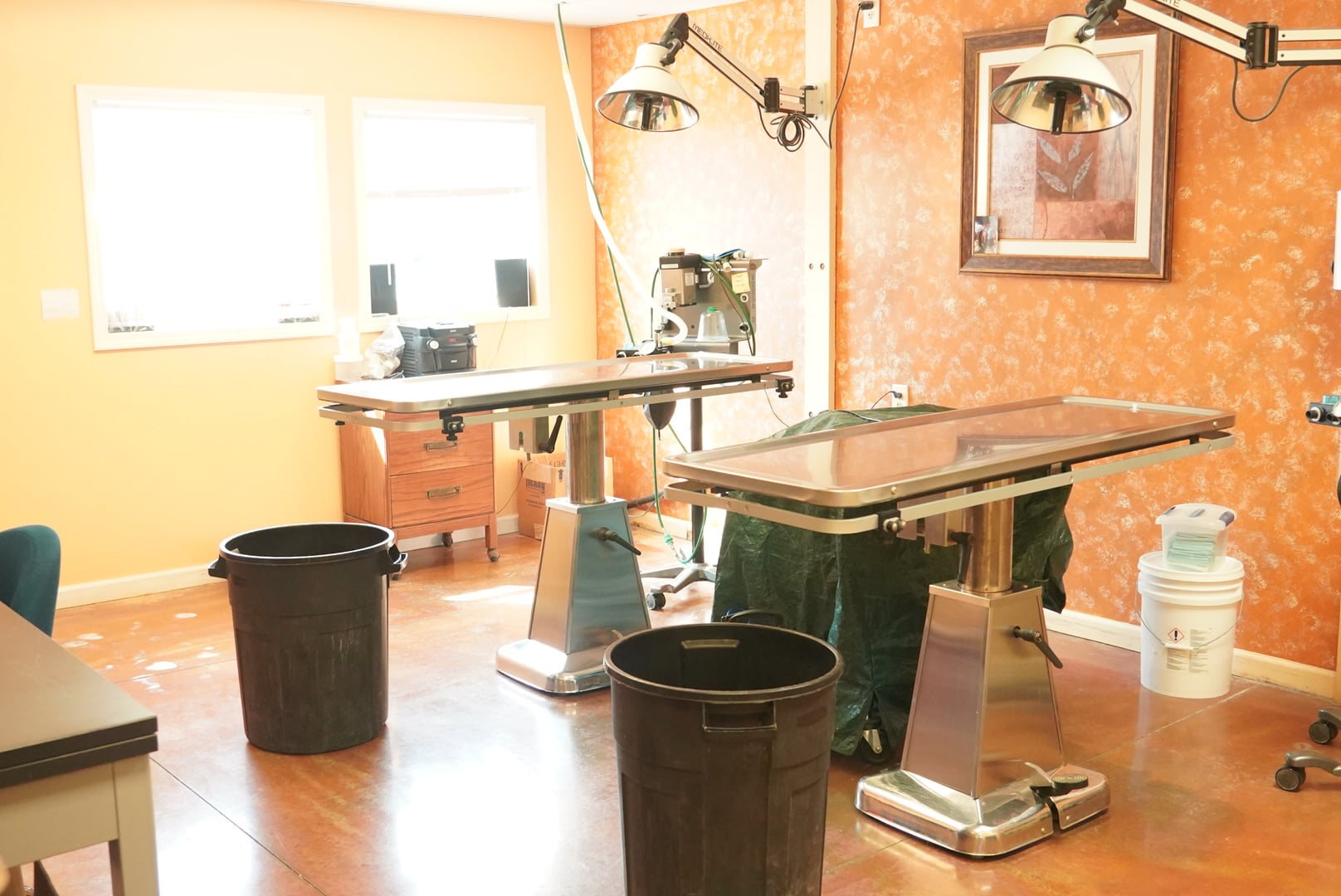
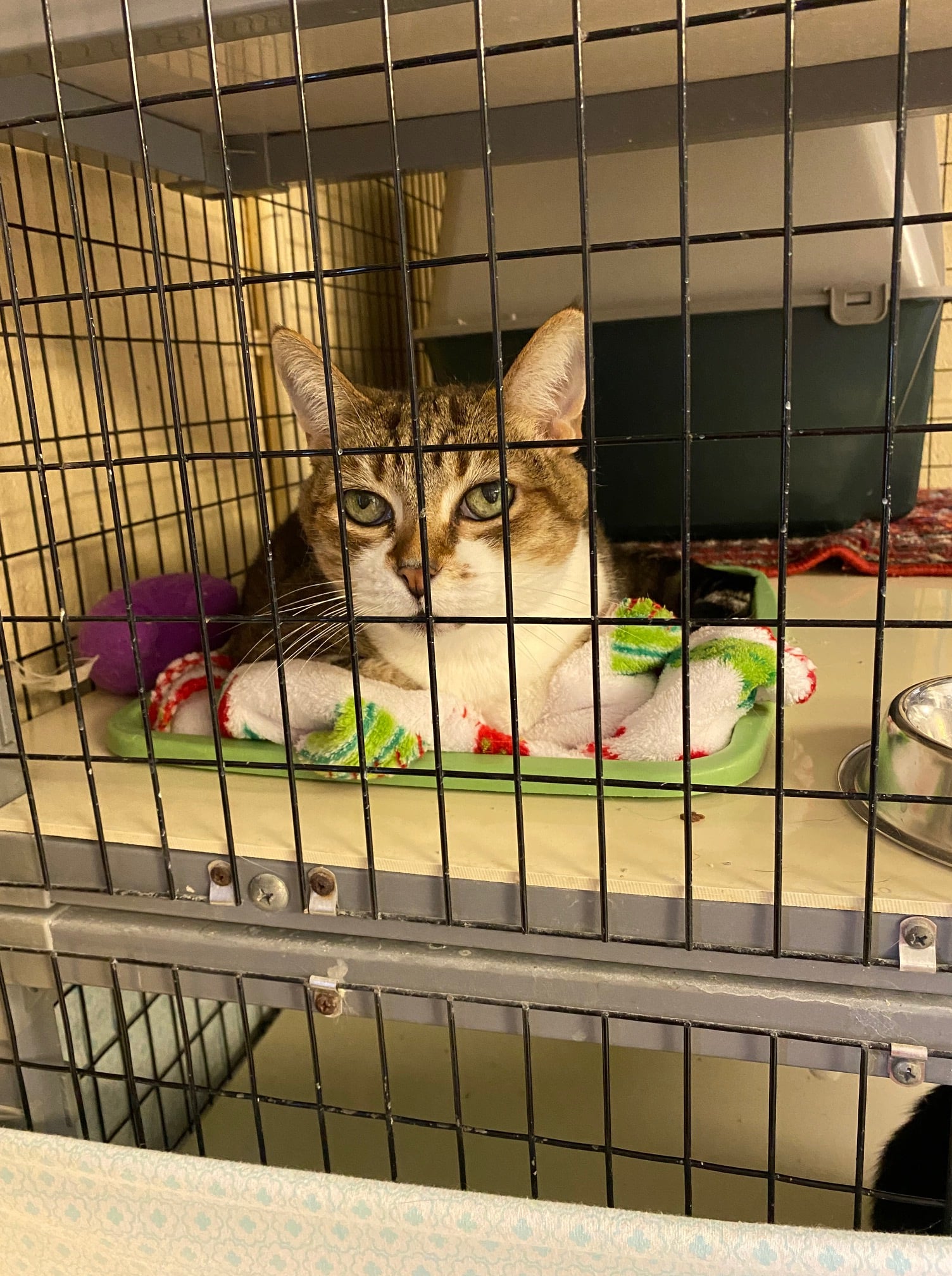
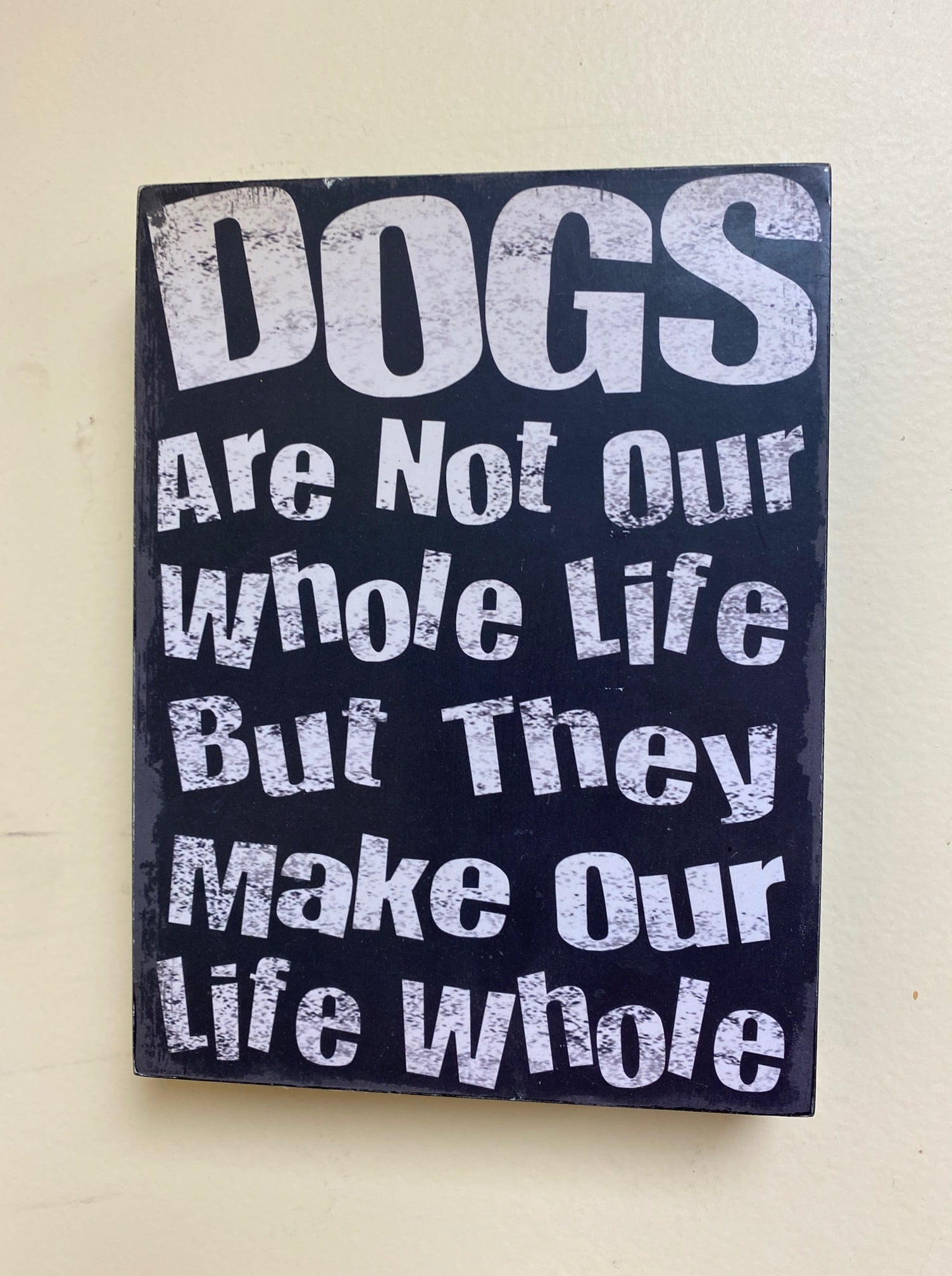
Ruth is also in charge of the Friends of Simpson County Shelter. The Friends run the shelter and the county pays for it—this seems to be a great model for county sheltering. Currently they do not euthanize any adoptable or treatable animal. A little more than half of their dogs leave via rescue, but the rest are adopted locally or returned to owners. The building is older, but they seem to make the most of it. The dogs are housed indoors, and the outside pens are utilized to give the dogs a little more space and some fresh air while their kennels are being cleaned.
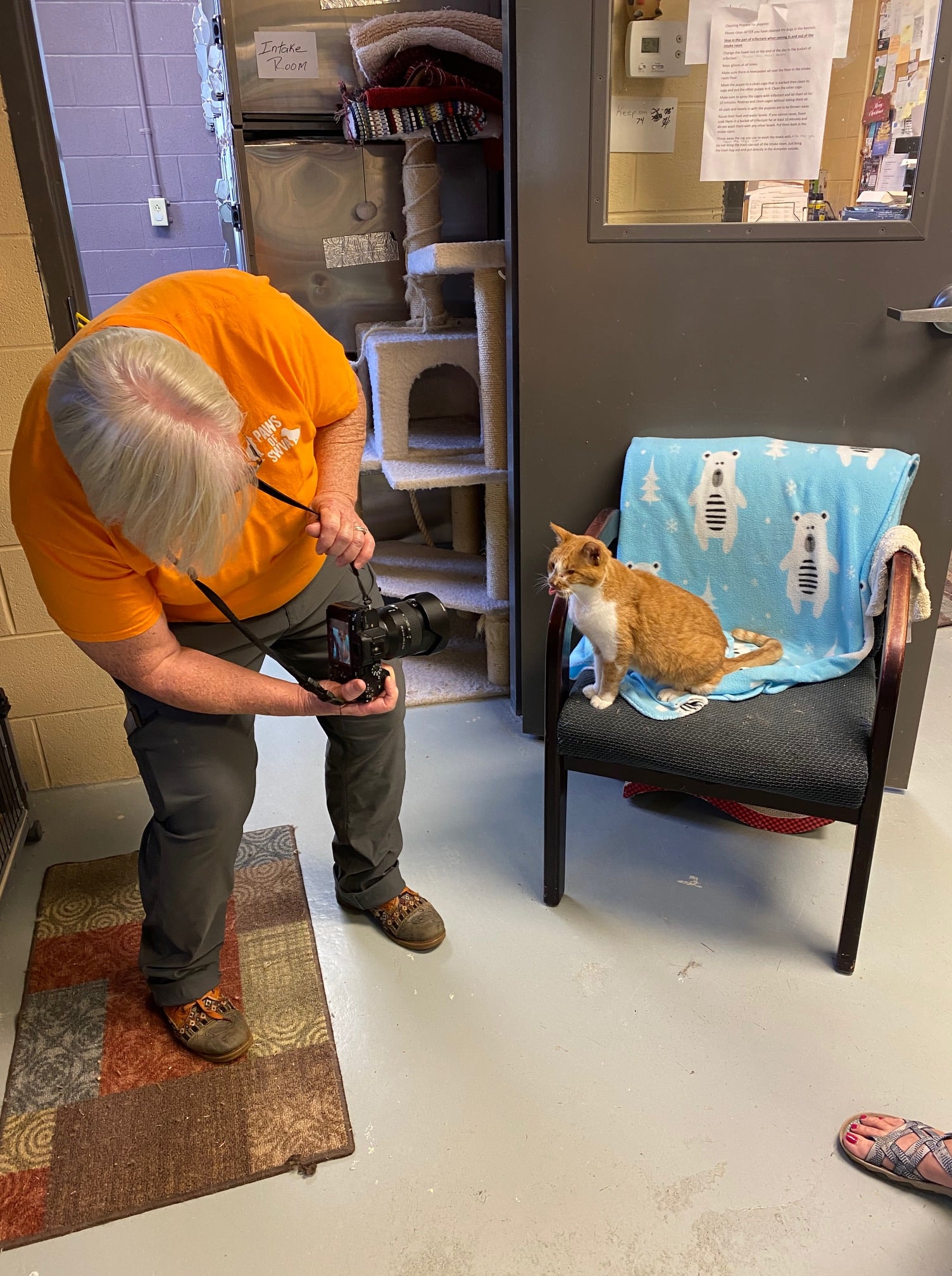
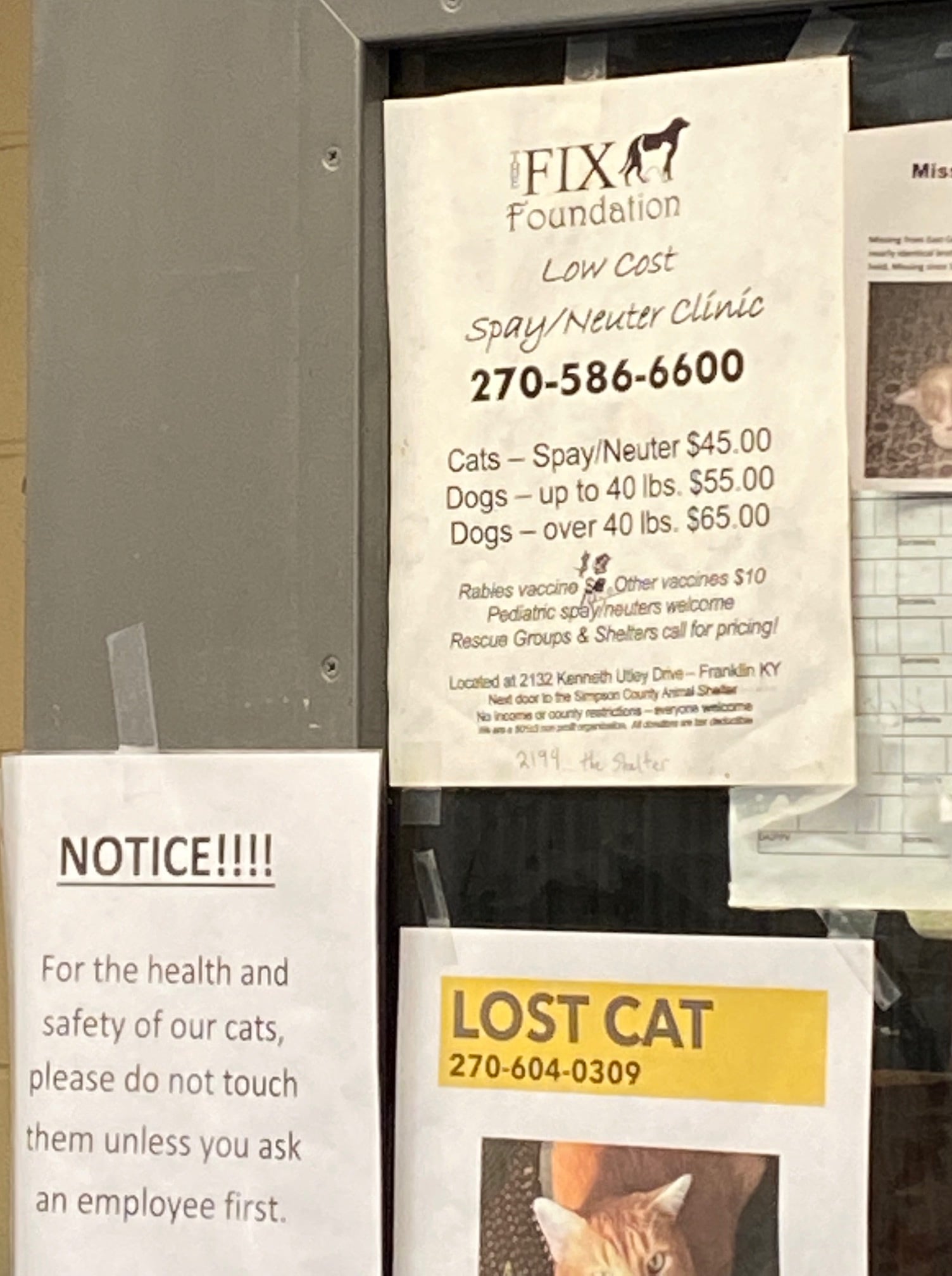
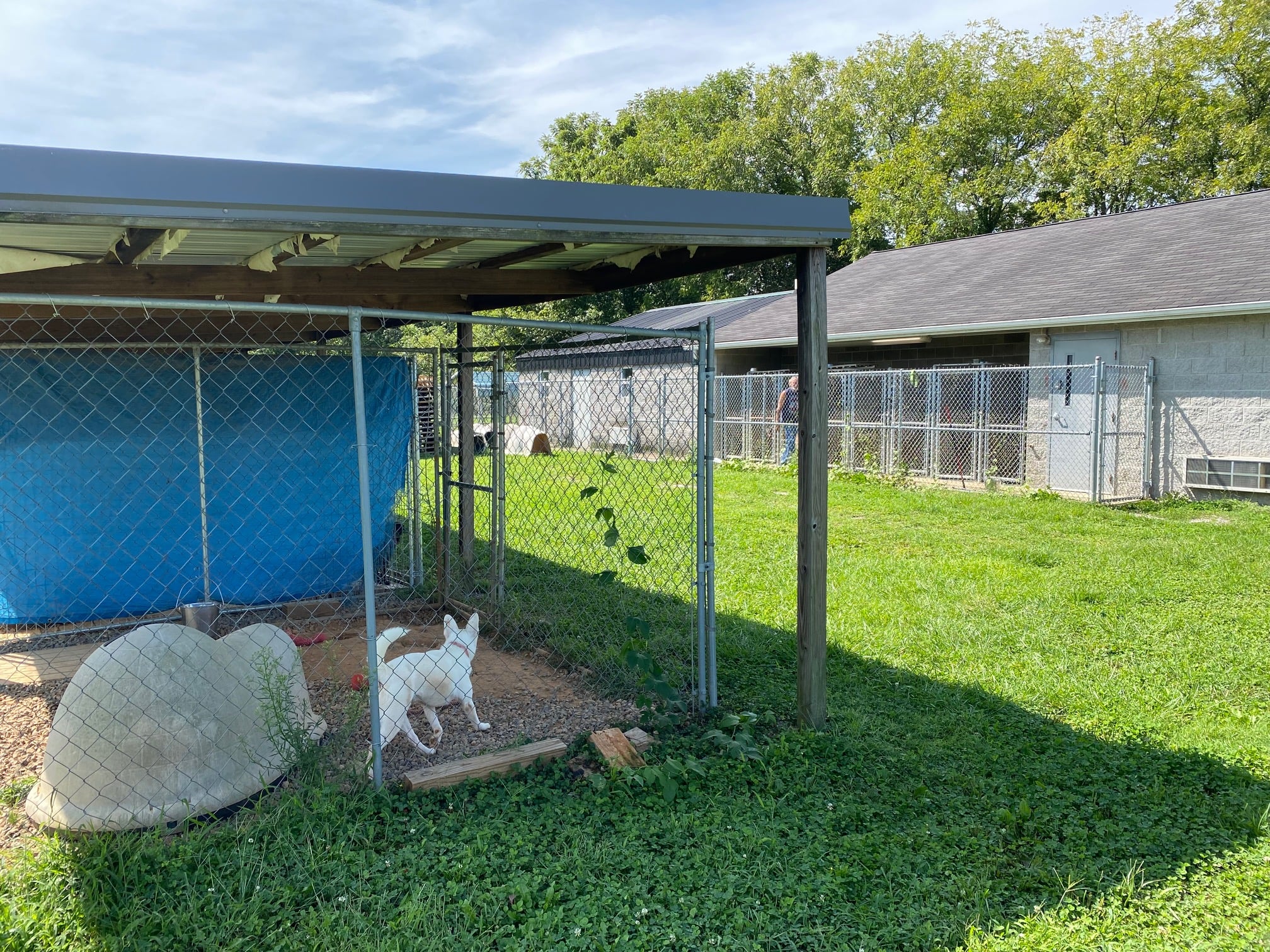
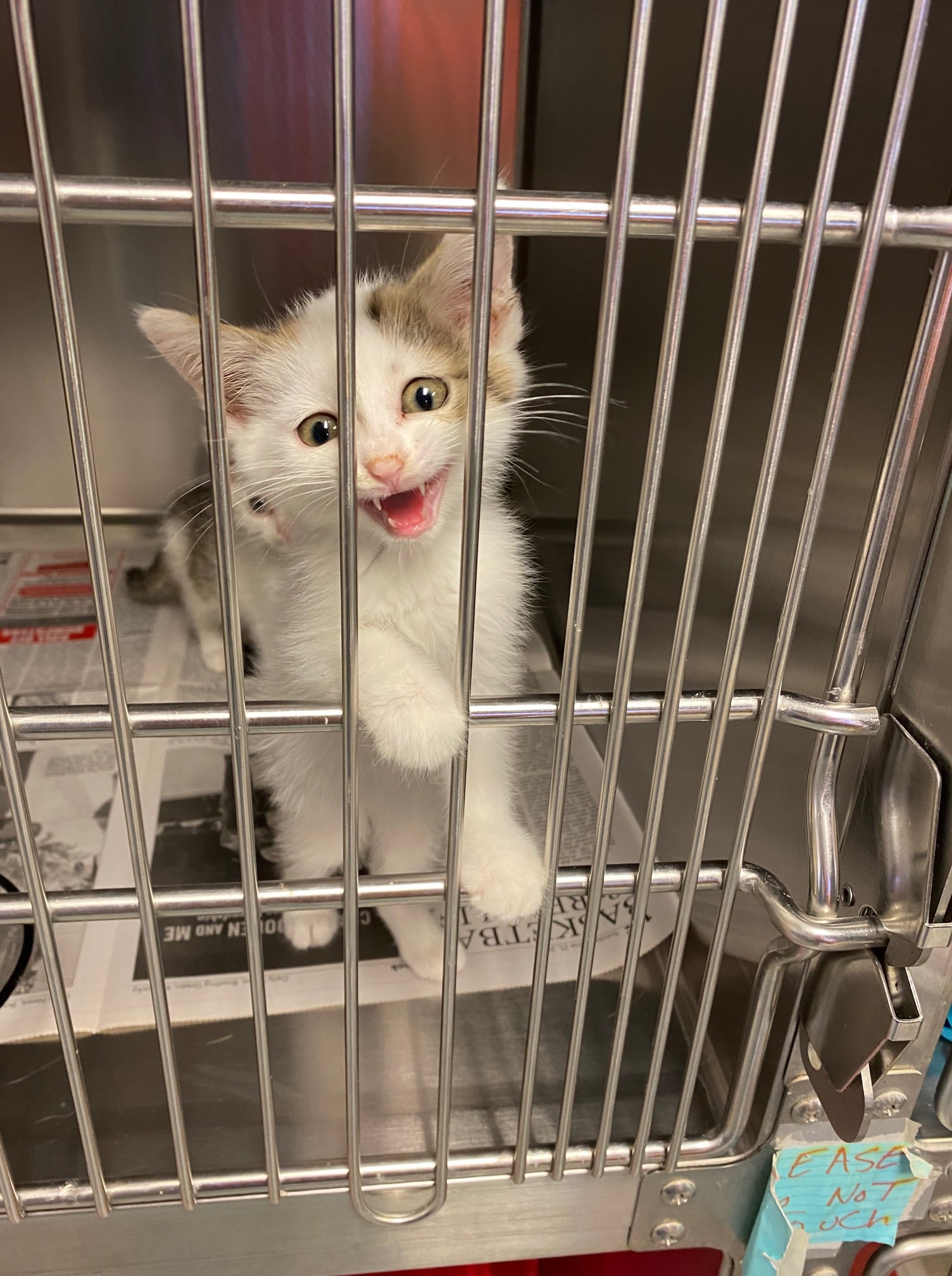
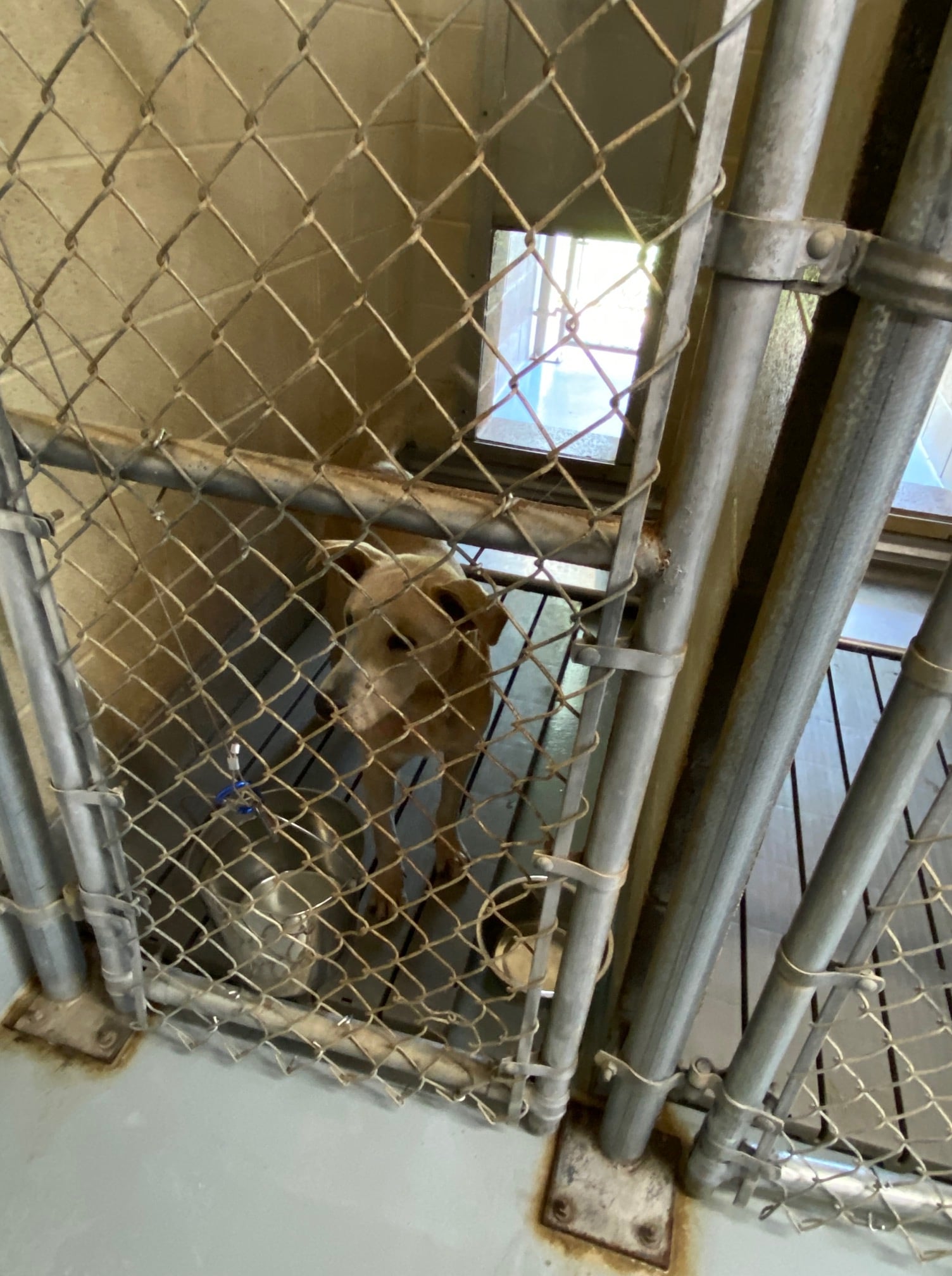
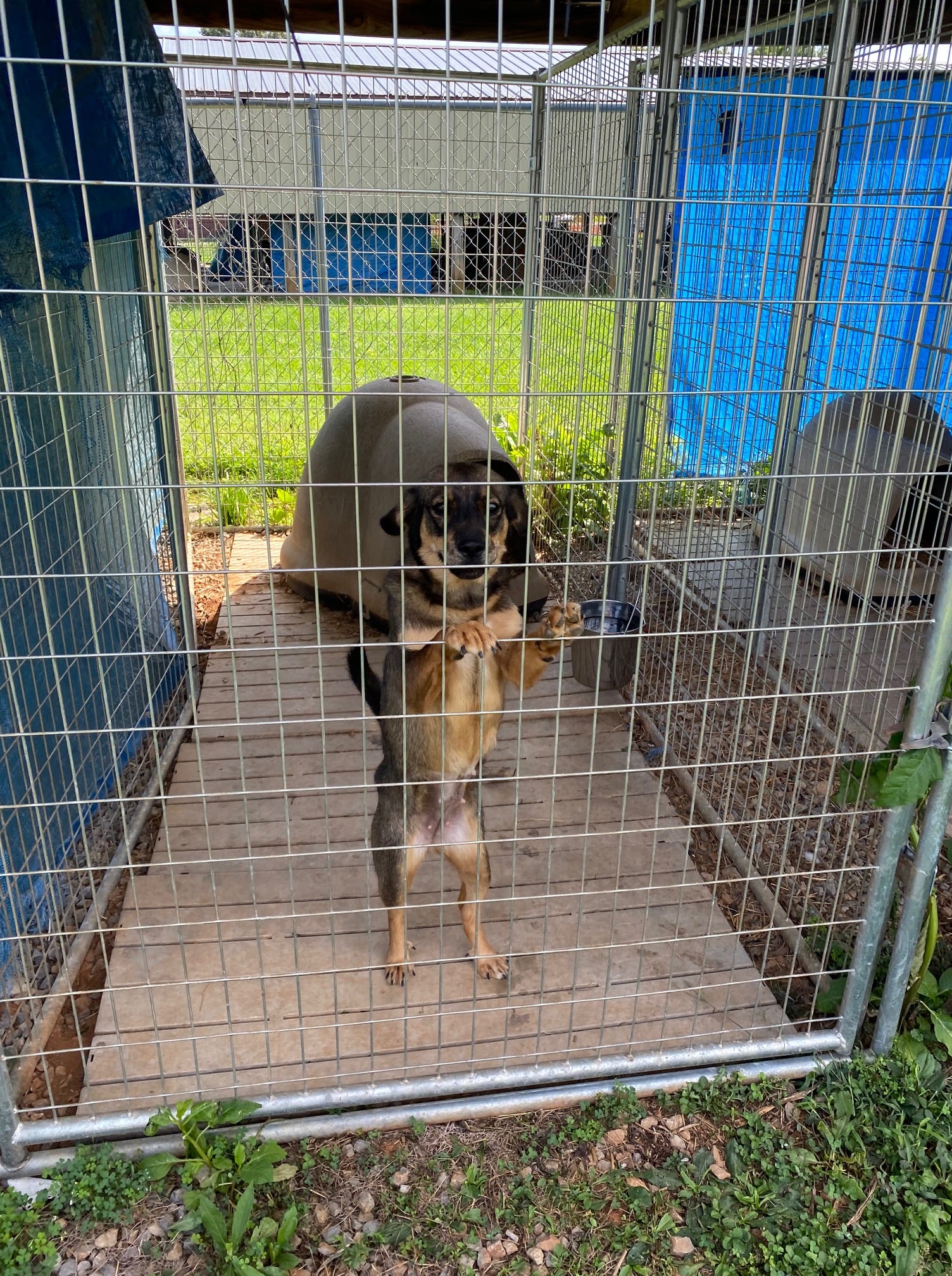
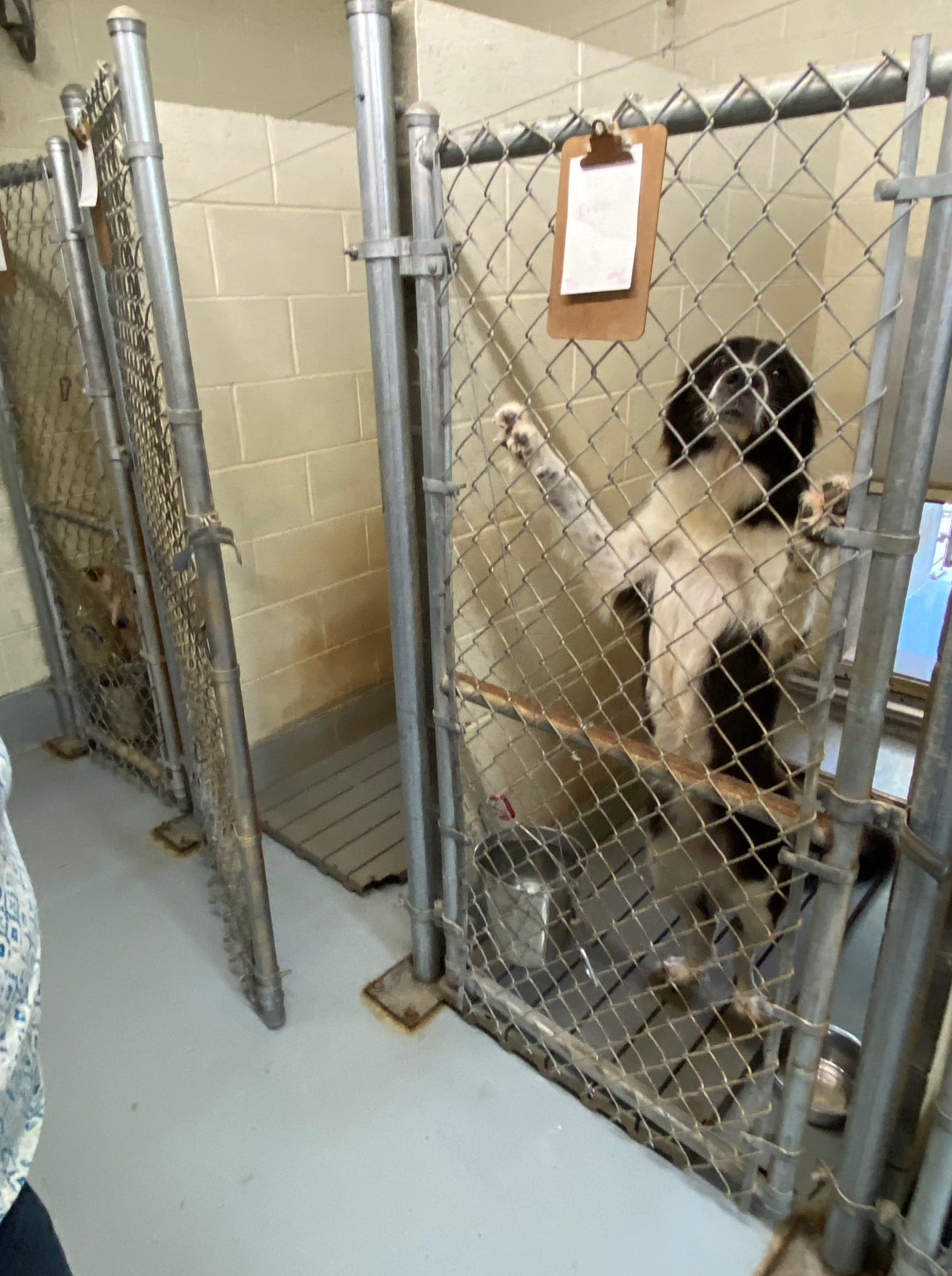
Simply Cats is the Fix Foundation’s cat adoption program. They are able to adopt out all of their cats and bring in many from rescues. Ruth was quick to tell me that Simply Cats is NOT a rescue, they are a cat adoption program. Their cats are placed in cat habitats at eight Petcos in Simpson and the surrounding counties, plus several in Tennessee. It was such a breath of fresh air to hear that Simply Cats has no trouble moving cats. Their animals are all spayed/neutered, vaccinated, dewormed, microchipped, and treated for fleas, plus their nails trimmed and ears cleaned before they are adopted out.
The Fix Foundation has outgrown its space and is just beginning an expansion project. They’ve taken out a business loan for the construction. This will enable them to treat more animals and give their (paid) staff more room for their work. So much of what they are doing is simply smart management. They have a ‘stay at home mom’ program for repeat puppy and kitten dumpers. When a family continues to bring in puppies or kittens, they agree to take the kittens or puppies, but only on the condition that they also spay the moms. They have applied for and received grants to help with spay and neuter. During the pandemic, the Fix Foundation continued to do surgeries as one of the only places in their area that did.
Simpson County shelter and the surrounding county is not any different from a lot of the county shelters and pounds we have visited. They are battling a similar culture, have an older shelter, and a small budget. Yet, they are saving every dog—and more importantly—they are fixing every animal they adopt out or send through rescue. They are proof that it can be done with good leadership, smart policies, and access to affordable veterinary care.
And maybe the key to the success is that the county allowed a group of people with the knowledge, ability, and passion to care for the animals to take over their shelter. I’m pretty certain that it’s much cheaper (for taxpayers) to run a shelter this way than to follow the traditional Animal Control dog pound system.
For more information visit: https://thefixfoundation.com/
FRIDAY AFTERNOON:
We added one last stop, and it was the perfect way to end our trip. After winding our way through the rolling hills, we arrived at the home of Melissa, a foster for Kentucky Saving Them Together, Inc.. She specializes in sick puppies – handling litters of parvo puppies, bottle feeding, and when we visited a litter of four 3 week old puppies whose mother was hit by a car and killed. The puppies were also battling kennel cough.
Melissa has been caring for them since they were one week old—bottle feeding them every two hours around the clock. Her puppy room was meticulously set up with everything she needed to provide them with expert care, no doubt saving the rescue thousands in veterinary expenses. I made lots of notes as she talked about her practices and tricks for getting puppies healthy.
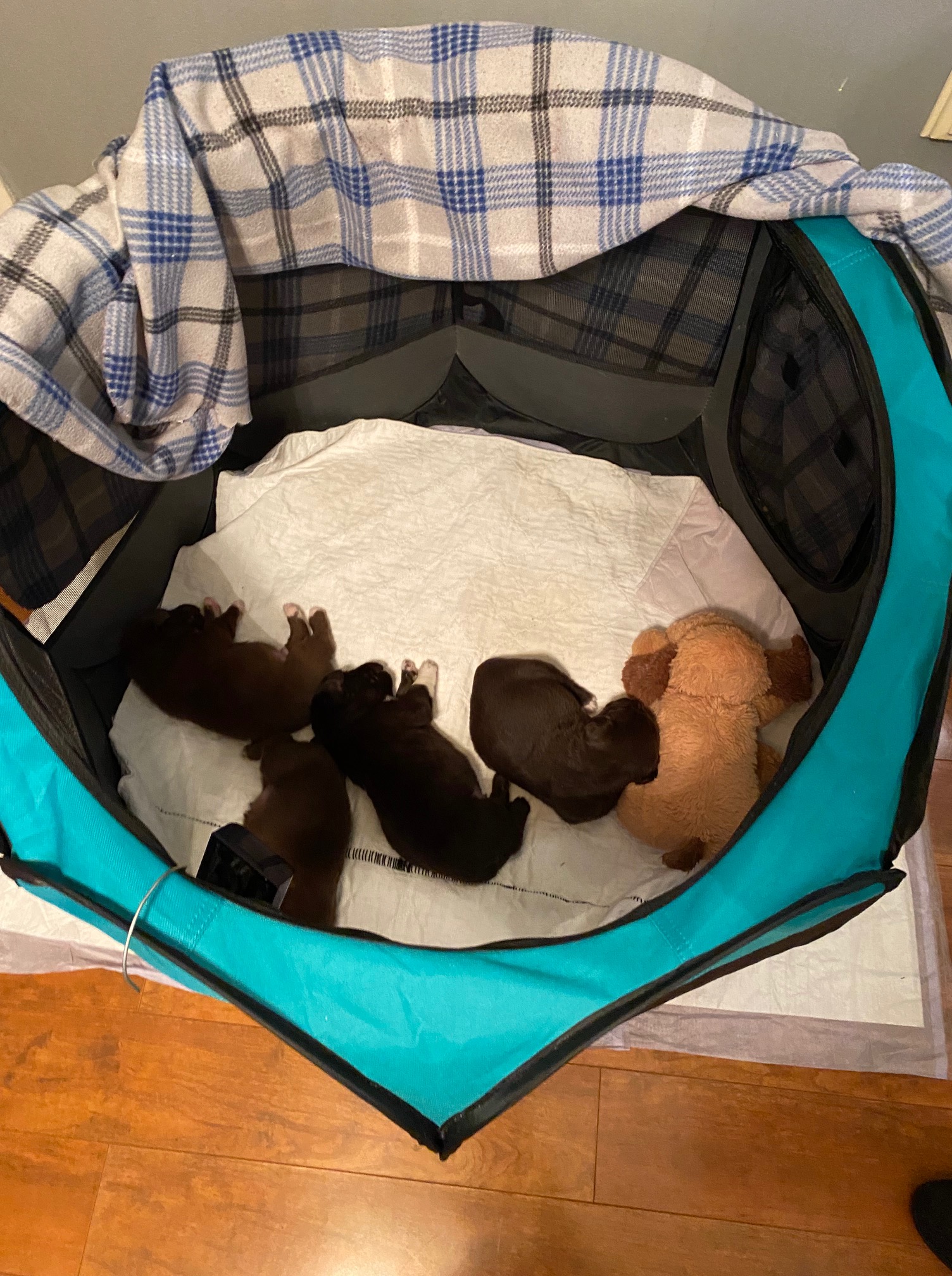
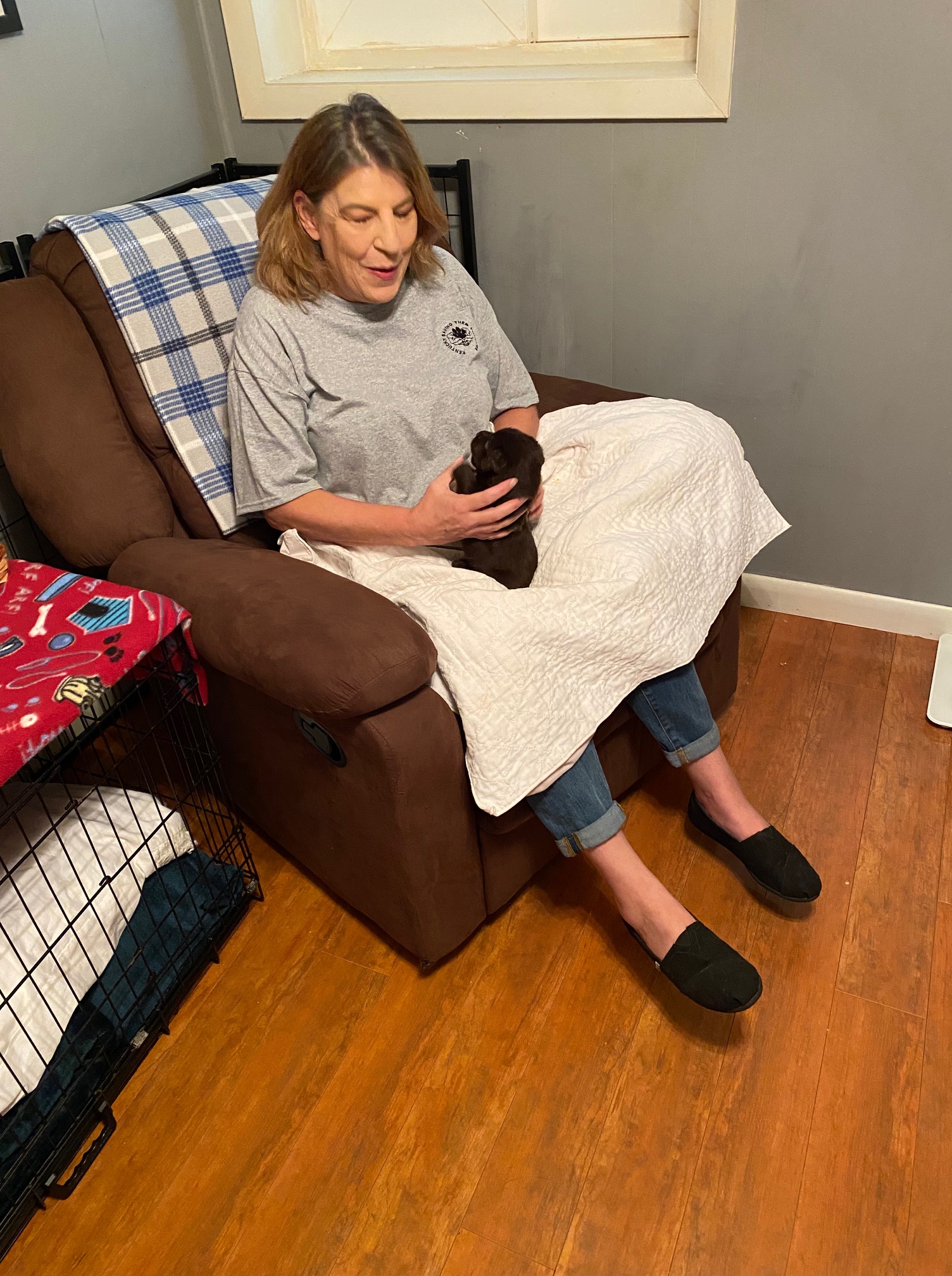
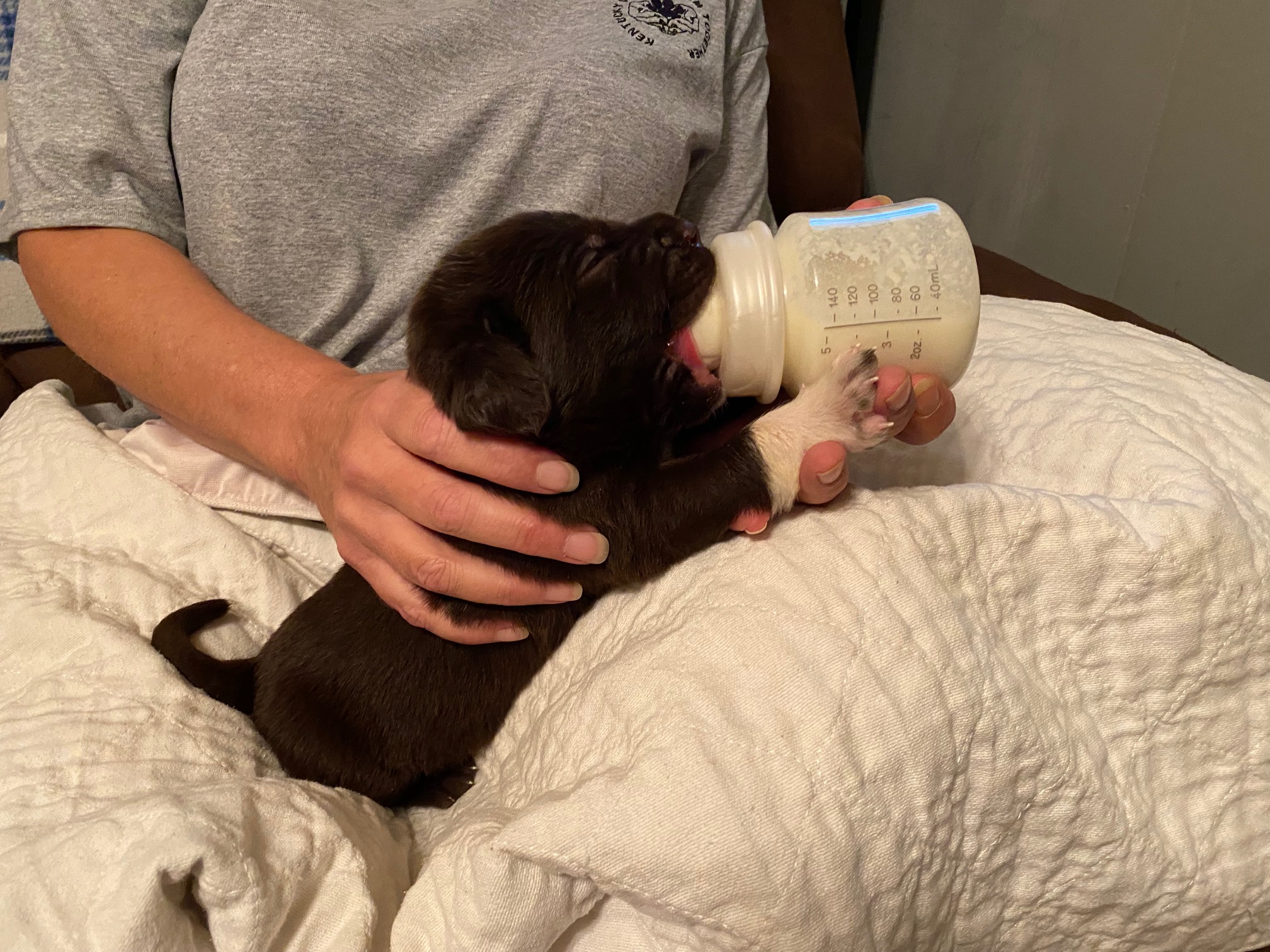
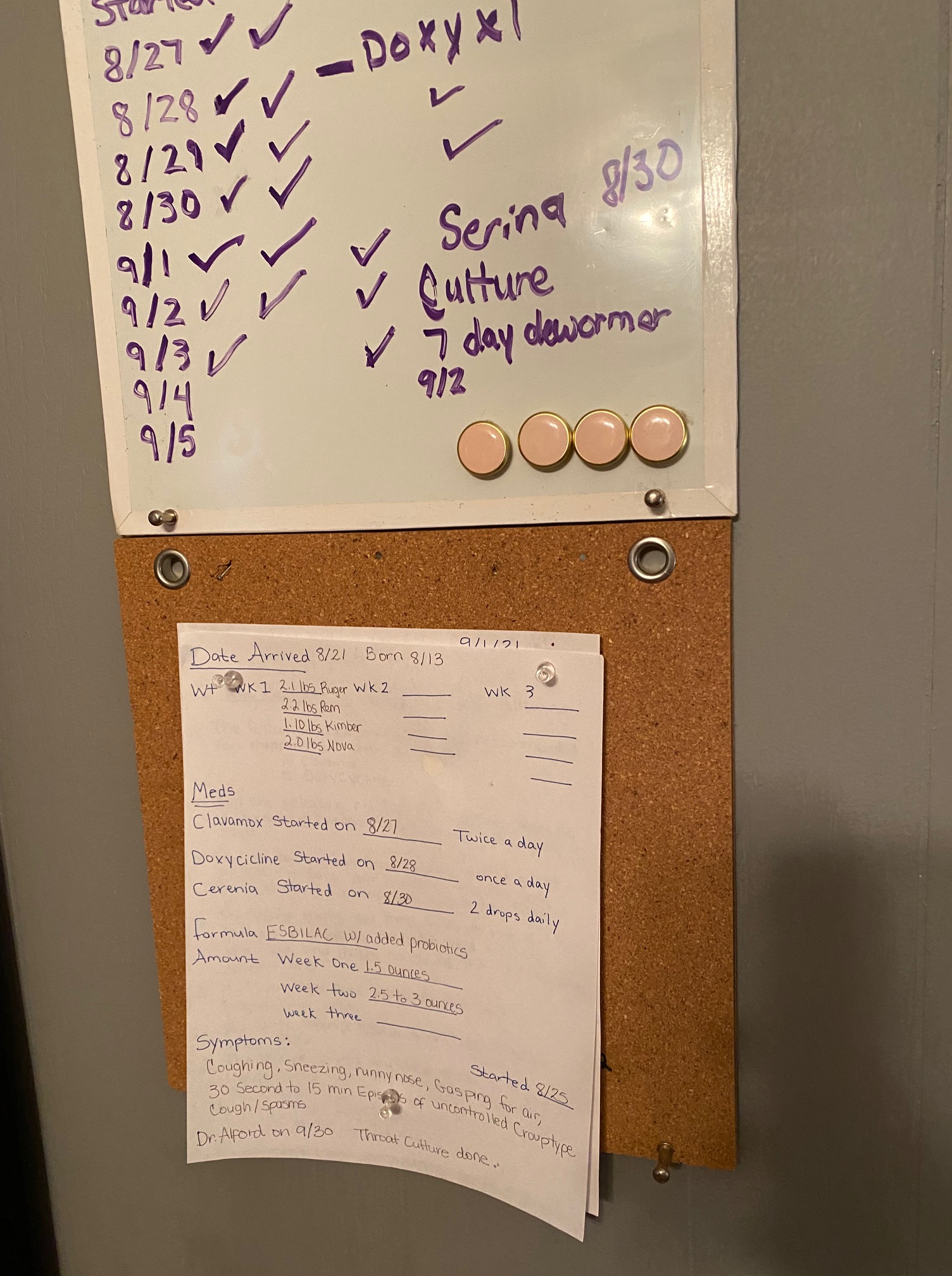
Wendy, the vice president of the rescue, was also at the house to tell us about the work of this relatively new rescue that saved 1738 dogs and cats (plus a hedgehog, a goat and a few pot-bellied pigs) in 2020. This year, they have already saved 1439 through their network of about fifty foster homes. There are no paid staff at KSTT. When I asked if there were, Wendy laughed and said she worked at Firestone midnight shift basically to pay for her rescue work.
KSTT is an all-breed rescue and when I spoke with their president Monica by phone and asked whether they adopt out their dogs and cats, and she said, “We get them healthy and get them the hell out of Kentucky!” Although Wendy did admit they do a few adoptions but they’re VERY picky about those. Professional transports take their animals north twice a month, but volunteers also drive individual transports.
KSTT takes dogs and cats from kill shelters, owner surrenders, vet referrals (dogs brought in to be euthanized for medical or expense reasons), and strays, but they also do a lot of community outreach working to help pet owners keep their pet by assisting with veterinary needs or bringing them supplies like food or straw, and educating them on the proper care of their animals.
KSTT is a 501c3 and completely donation funded, although from the sounds of things many of the fosters and board members make a lot of those donations out of their own bank accounts. Their current vet bills are $12K (they’ve got some awesome vets that work with them). If you’d like to help, you can donate via pay pal (rescue@KentuckySavingthemtogether.org) or Venmo (KSTT-rescue).
And if you need a puppy fix, check out Melissa’s Tick Tock (@bluegrasseo).
The reason this was a perfect last stop, wasn’t just because there were adorable puppies, it was also because meeting Melissa and seeing her in action, and talking with Wendy were reminders of why we just spent two weeks on the road eating too much peanut butter and not getting enough sleep—because we all can do something. Melissa can get up all night long to save puppies’ lives, while Wendy is working all night long and rescuing all day. Us? We get to tell their stories.
ONE LAST POST!
We are home now and catching our breath. But our tour is not over! We did things differently this time around. We worked hard to bring you along with us via Facebook and Instagram with posts and live videos because we remain convinced that the problem of homeless dogs in the south does not exist because people don’t care but because they don’t know.
Clearly, you care and now you know a little more. We are so grateful for your support – your likes, your comments, and most especially your shares on our Facebook and Instagram posts helped us believe that what we were doing was making a difference. Connections were made and dogs were saved because of this giant dog-loving community.
We have so many more stories to tell you in the coming months as we devote a week to each of the thirteen places we visited. We’ll go more in-depth on each with video stories and blog stories, plus updates and any news of adoptions and help that resulted from our trip.
Be sure you subscribe to our blog (www.whowillletthedogsout.org/blog) and our YouTube channel (https://www.youtube.com/channel/UCKnj9duaO2TmQvO4StJoFqQ) so you can hear the rest of the story and how you were and can be a part of it.
We’d like to send a huge THANK YOU to the incomparable @LP Foster. Not only did she once again offer us outstanding accommodations this past week (including the company of multiple dogs!), it was once again eye-opening to see upclose just how much work she puts into each transport and afterwards cleaning and sterilizing crates and buckets, washing towels, and caring for dogs who are still awaiting transports. It was awesome to spend most evenings talking rescue and sharing craft beers in the company of her awesome fosters, the Banes (but I lost my heart to her downstairs foster, Mrs Pete). This time we even got to hang out with her ghost-husband who is almost as passionate about saving dogs as she is—or at least as passionate about supporting his rescue rockstar wife! Thanks, Laura!
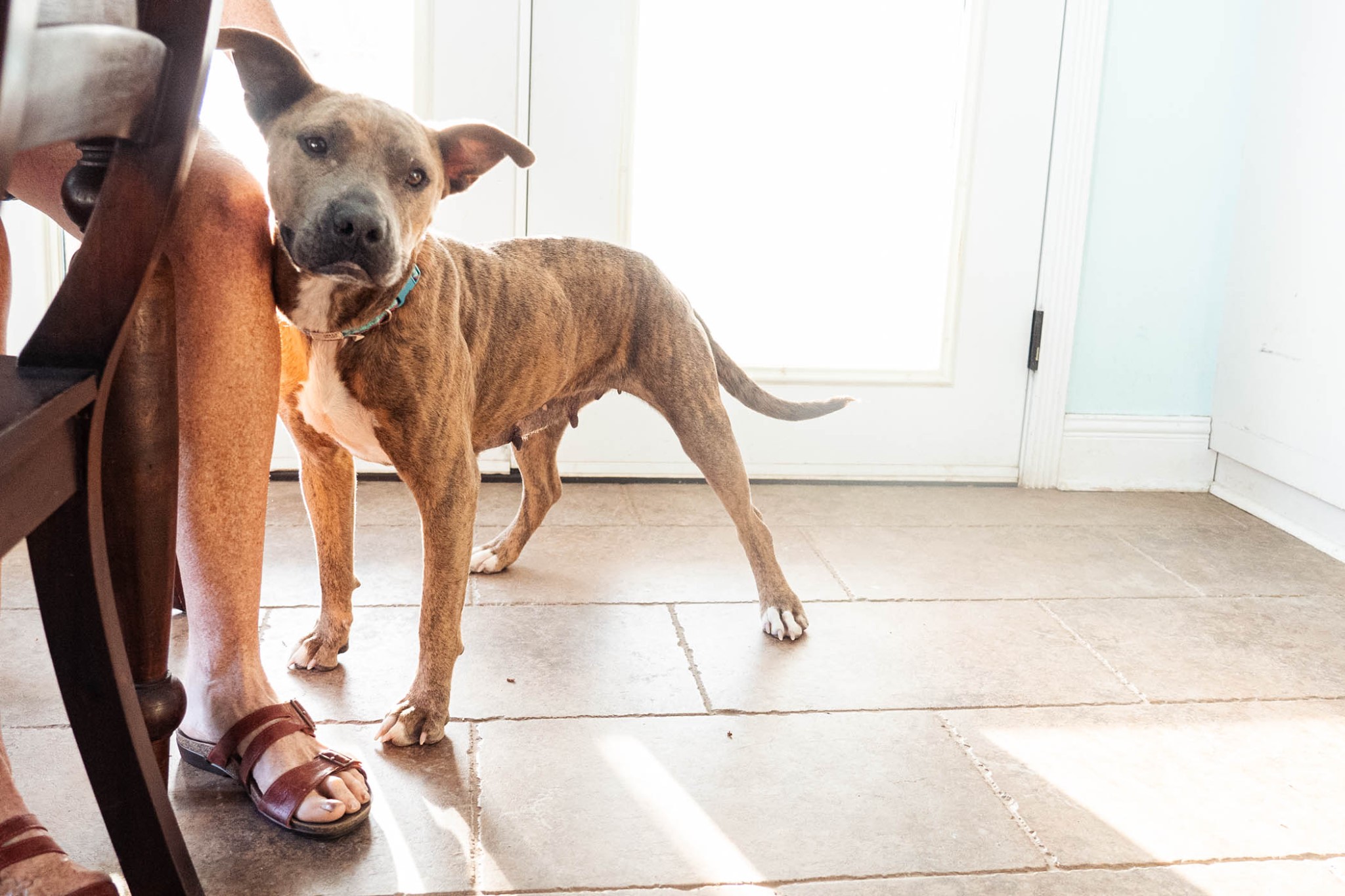

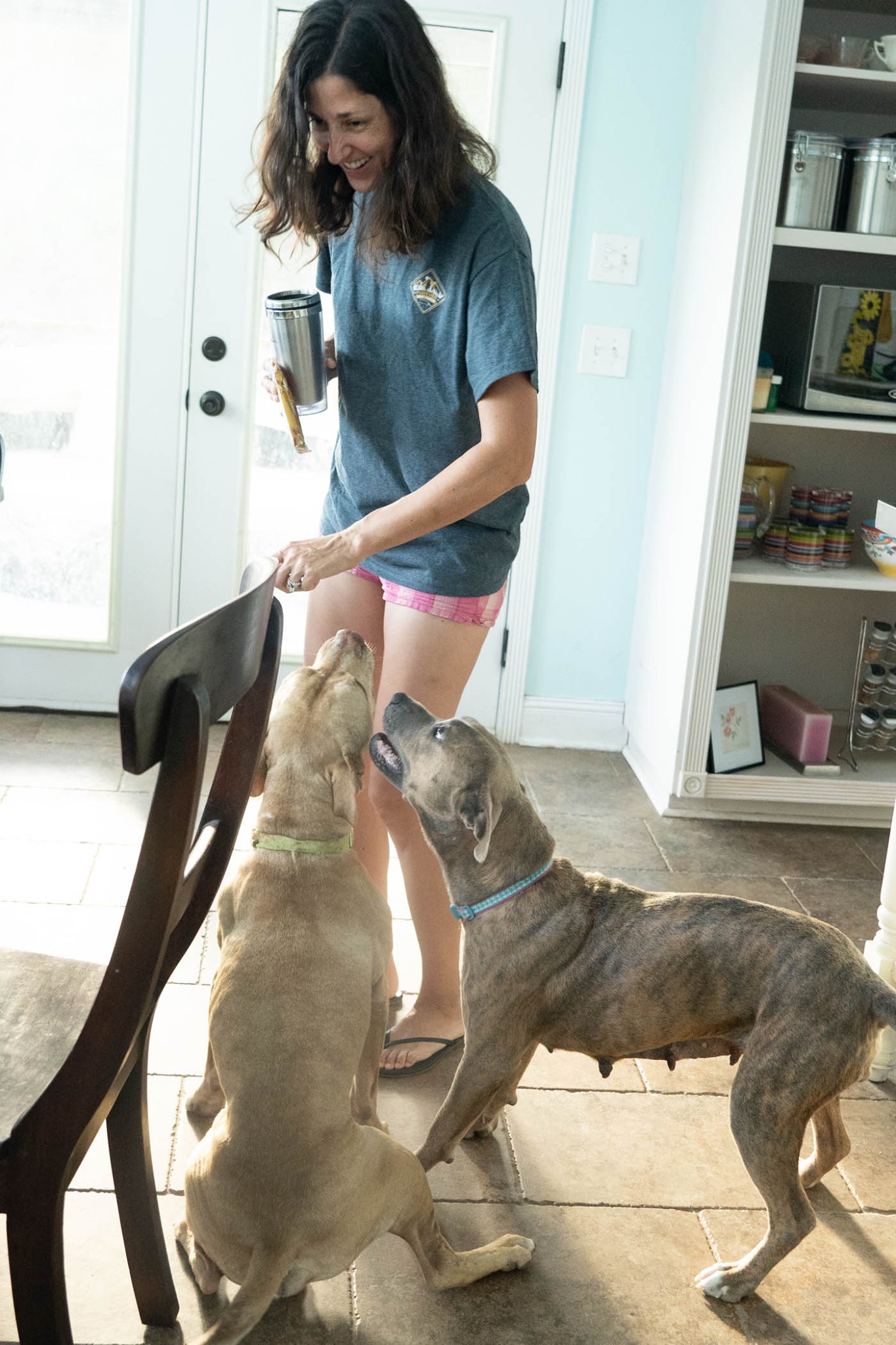
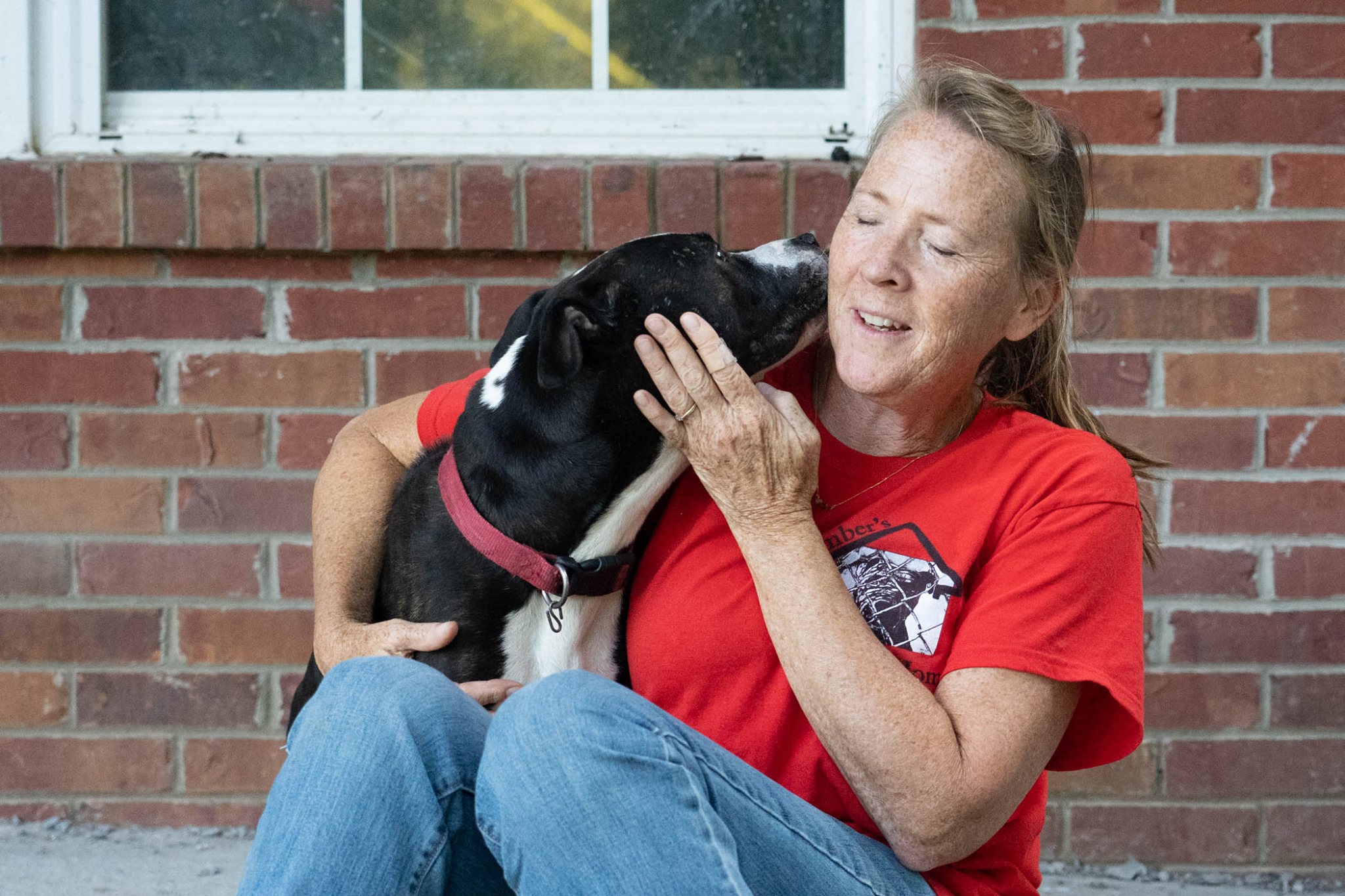
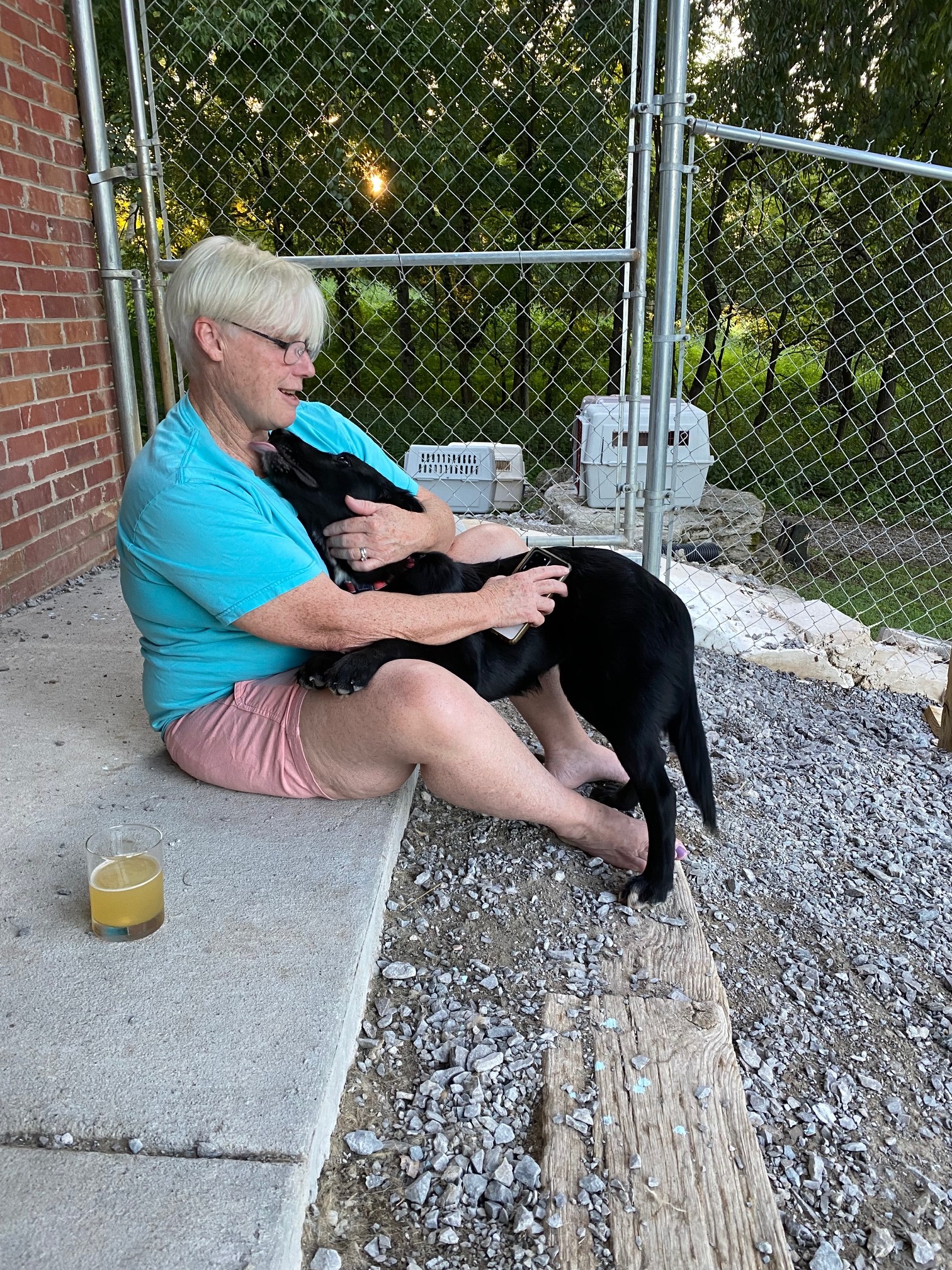
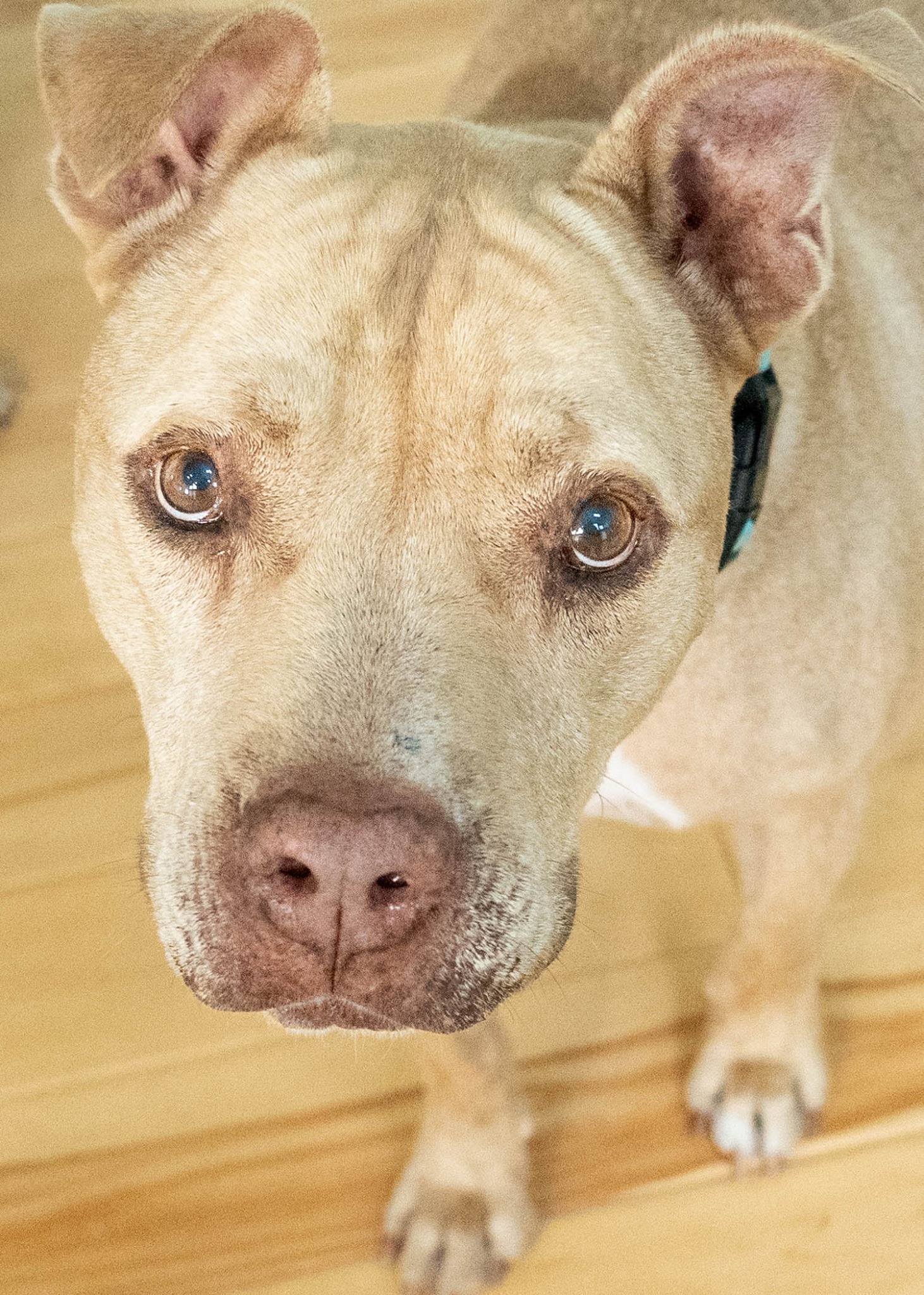
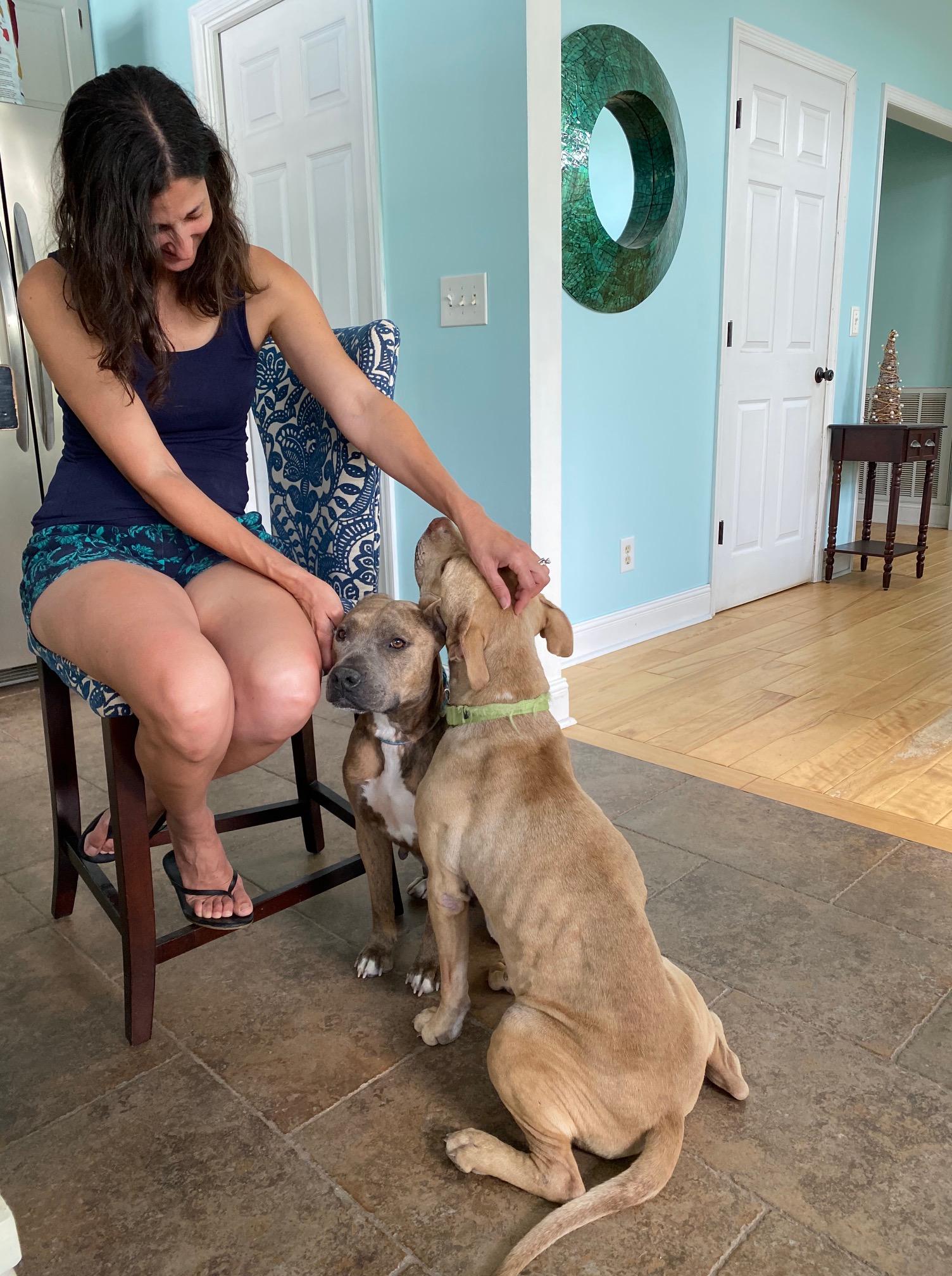
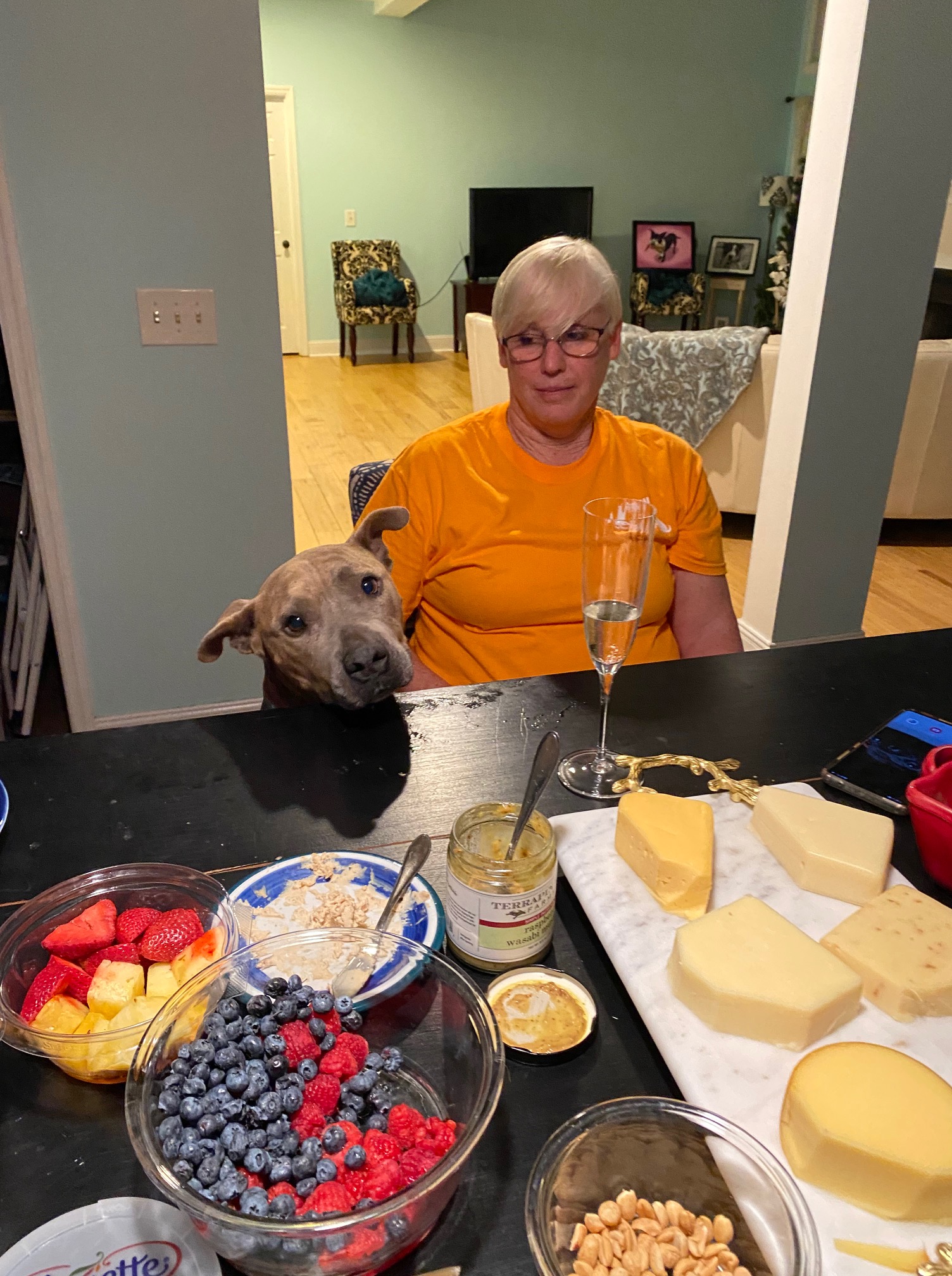
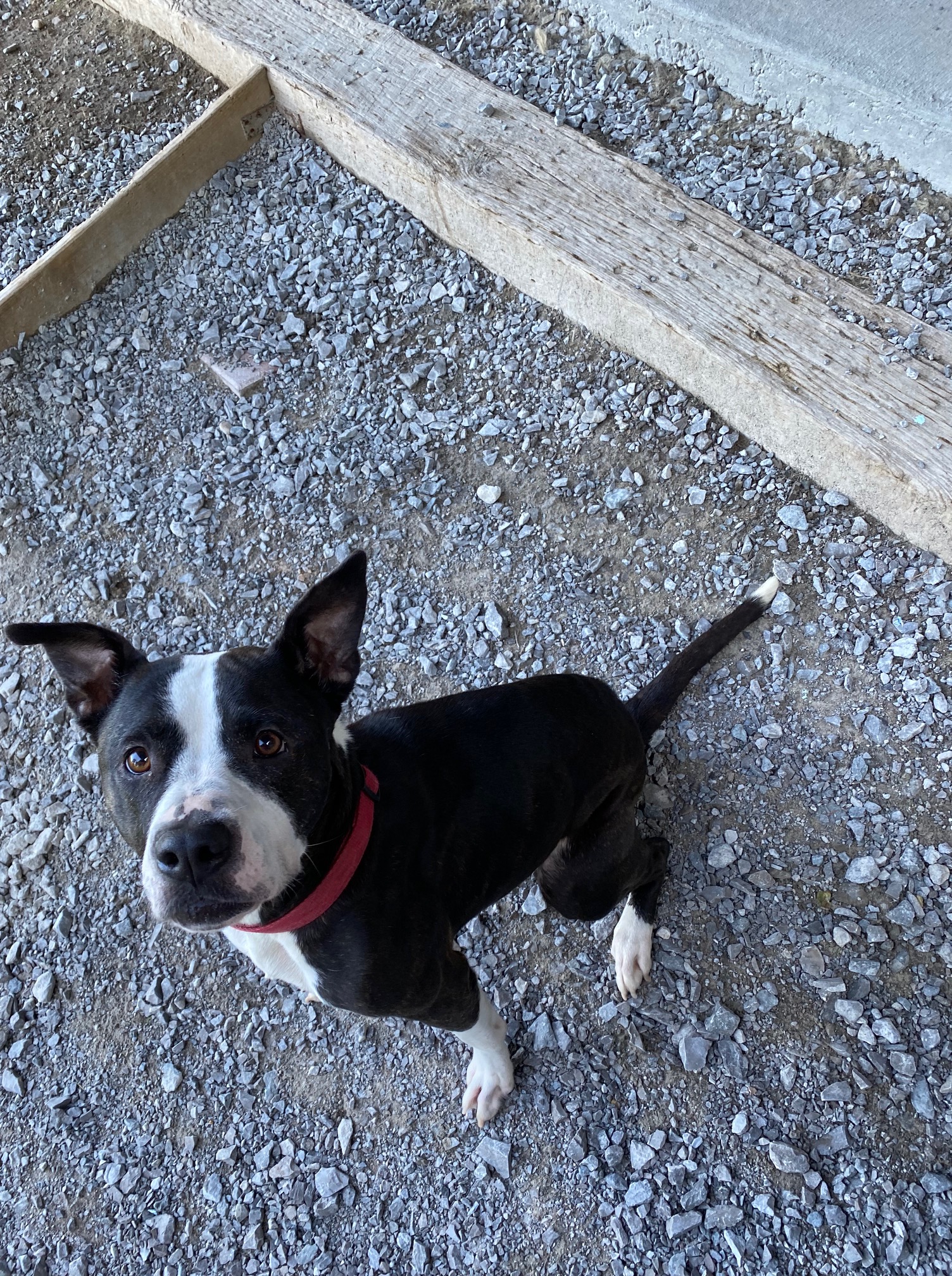
Our hotel accommodations this trip were a huge upgrade from previous trips (where at least one of our motel rooms didn’t have a bathroom door and many were noisy, uncomfortable, but dirt cheap –literally). This time around, @Thomas Hazlebeck offered us his Marriott points and scheduled our stays at real hotels with comfy beds, dependable wifi, and breakfast! Thanks, Tommy!
Stay tuned….so much more to come!




Leave a Comment
Sign up for our newsletter
Sign up to have our latest news, grant updates, shelter visits, and more delivered to your inbox.
Share this:
Like this: